Discover the world of modern and contemporary art from Africa and its diaspora with Pavillon 54's magazine. Engage in enlightening articles, captivating interviews, comprehensive editorial coverage, enriching videos, and stimulating experiences. Join our community to stay informed, learn, and actively participate in the dynamic landscape of African art.
-
African Pavilions taking the scene at Venice Biennale 2024
African Art Takes Center Stage at the 60th edition of Venice Biennale, running from April 20 to November 2024.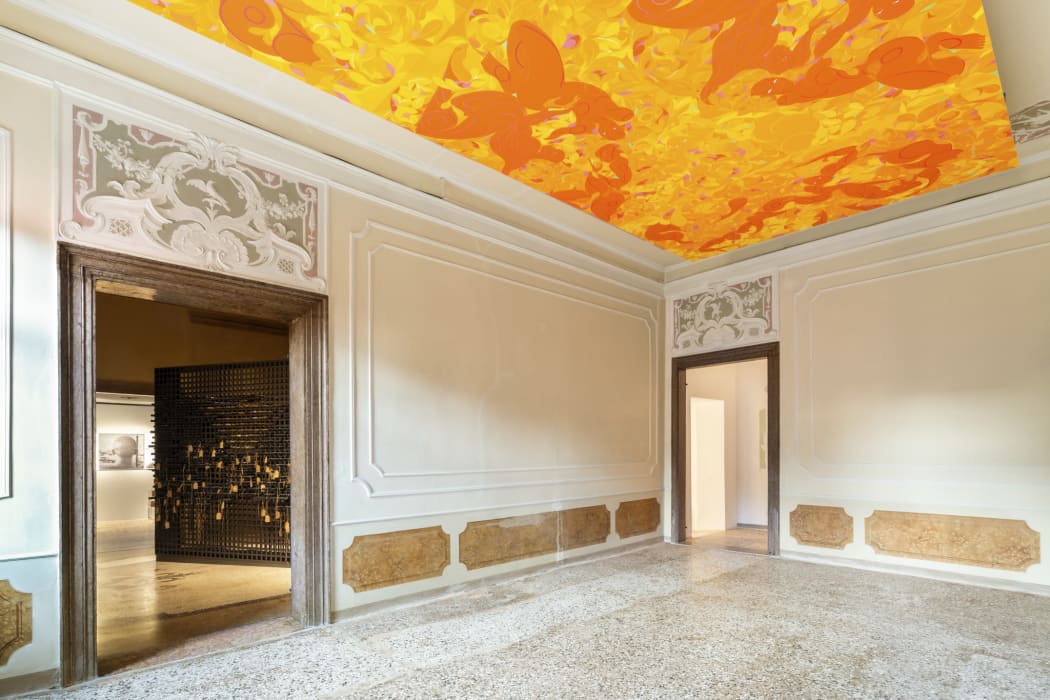 For this 60th edition, a remarkable number of African nations are making their debut or returning to showcase their artistic talents to the world. In this article, Pavillon54 offers an exclusive glimpse into what lies ahead at this year's Venice Biennale, with a special emphasis on the debut and established participation of African pavilions.
For this 60th edition, a remarkable number of African nations are making their debut or returning to showcase their artistic talents to the world. In this article, Pavillon54 offers an exclusive glimpse into what lies ahead at this year's Venice Biennale, with a special emphasis on the debut and established participation of African pavilions. -
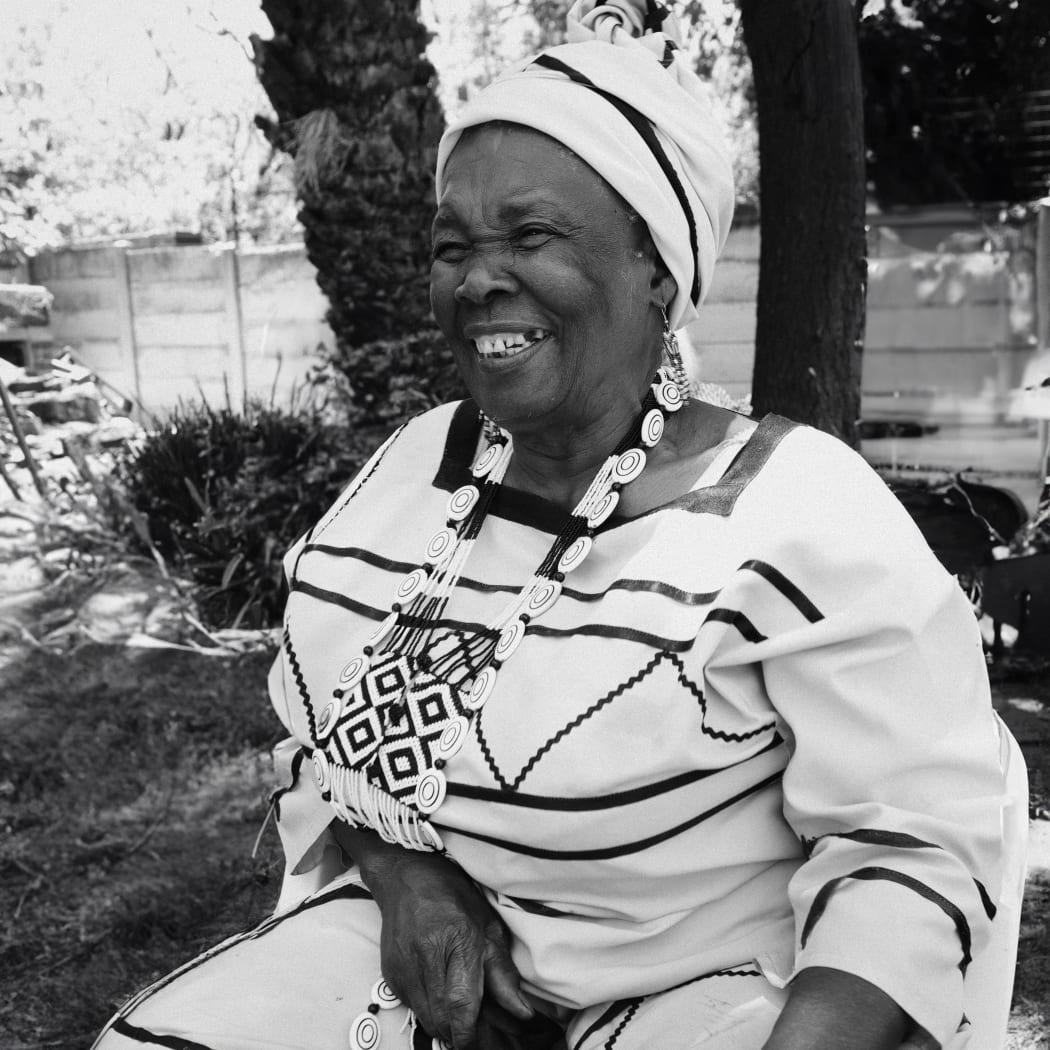 Pavillon54 team had the pleasure to meet and interview South African modern master Helen Sebidi. With a new show ahead, and retrospectives of her illustrious career, Helen Sebidi remains remarkable and worthy of admiration.
Pavillon54 team had the pleasure to meet and interview South African modern master Helen Sebidi. With a new show ahead, and retrospectives of her illustrious career, Helen Sebidi remains remarkable and worthy of admiration. -
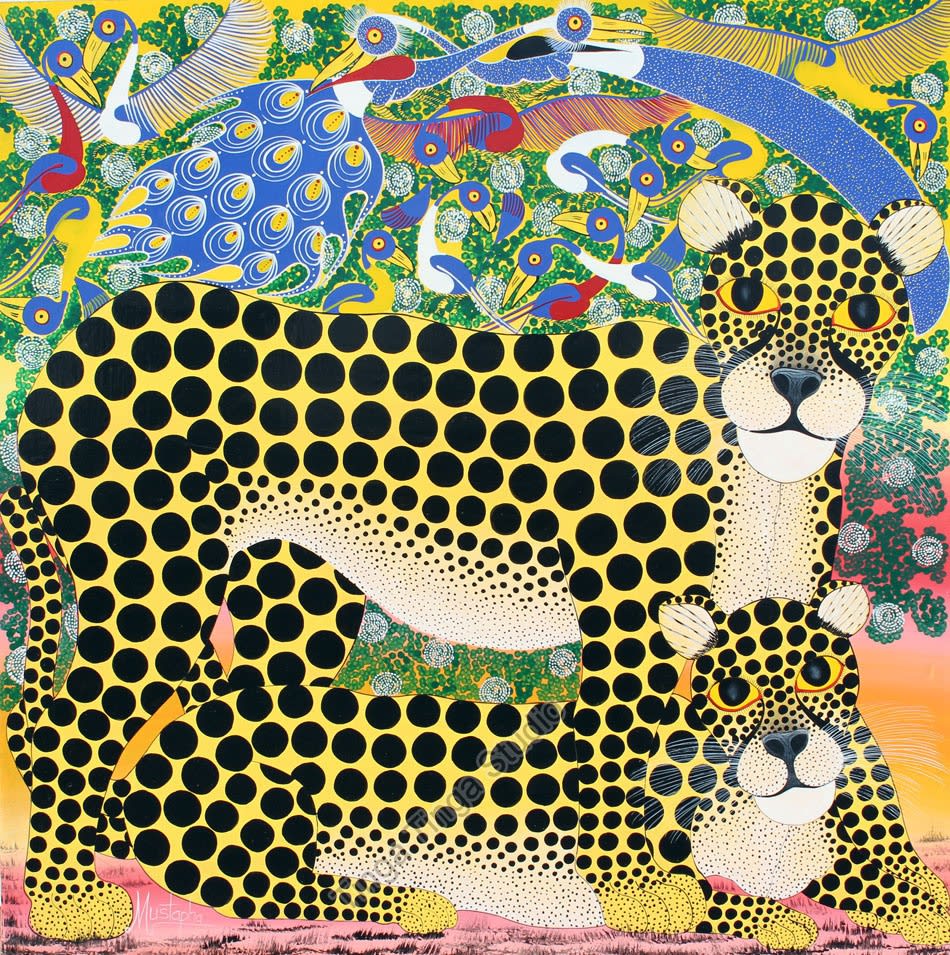
In this article, Pavillon54 explores the world of Tinga Tinga art, a distinct painting style that originated in East Africa, particularly in Tanzania.
-
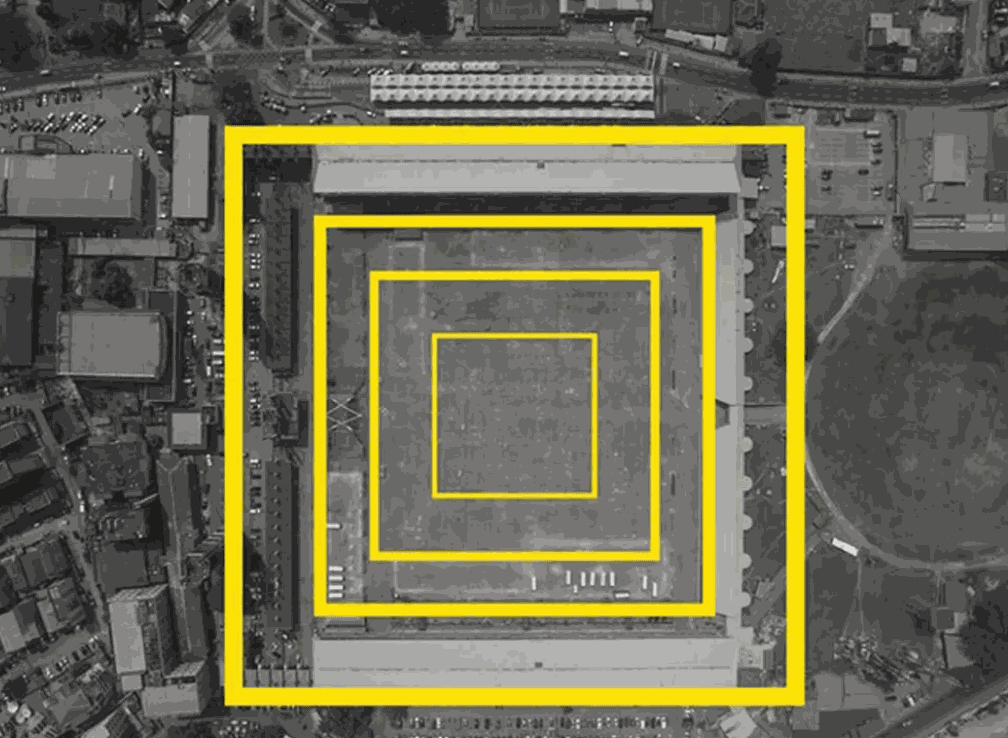 Themed REFUGE, this 4th edition of the Lagos Biennial sought to address the concept of the nation-state and critically reflect on the site of the exhibition, Tafawa Balewa Square from 3-10 February.
Themed REFUGE, this 4th edition of the Lagos Biennial sought to address the concept of the nation-state and critically reflect on the site of the exhibition, Tafawa Balewa Square from 3-10 February. -
Capital Art: Mastering African Art Collection Management
Unlocking the Value of African Art as a Bankable Asset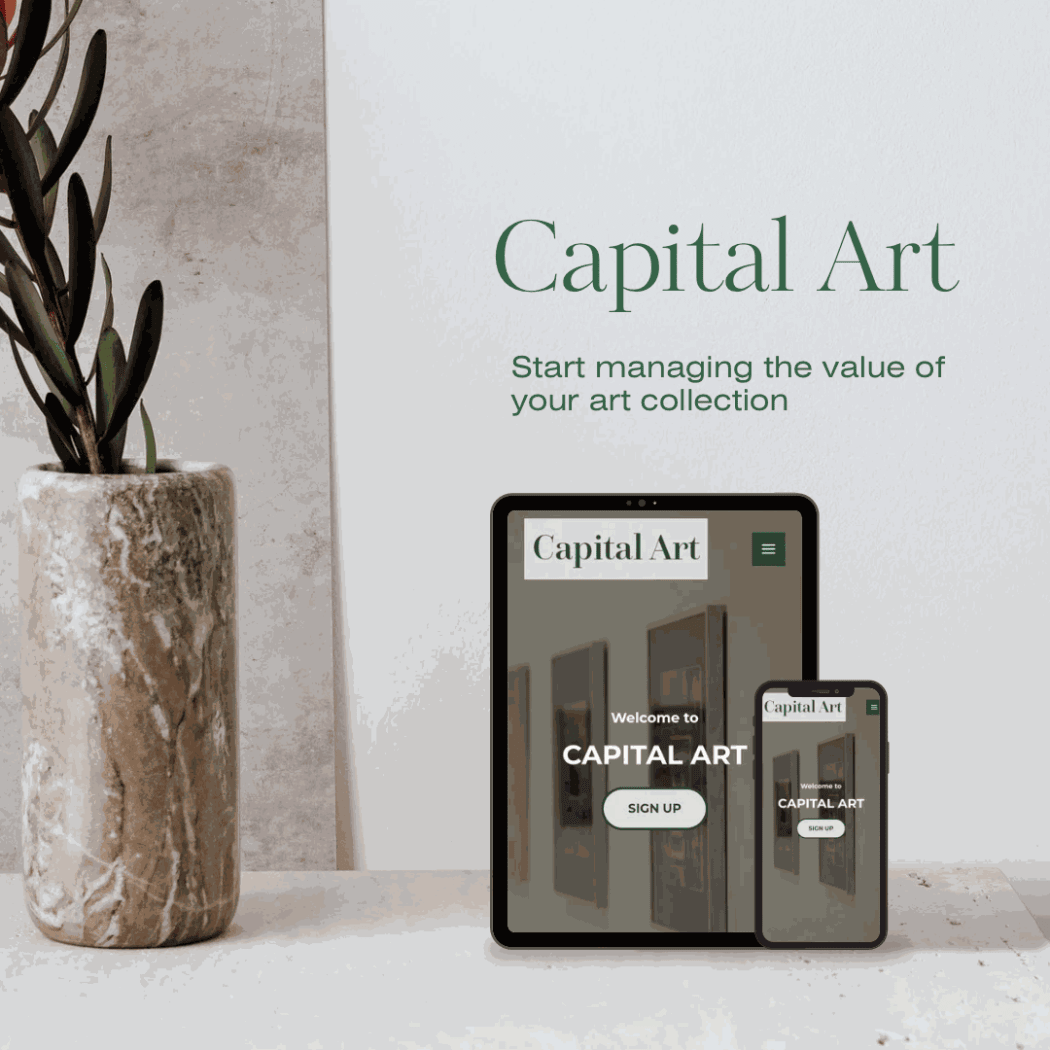 If you've been following our exploration of art collection management, you know that being the guardian of art is no ordinary task. In a previous article, we delved deep into the nuances of art collection management, shedding light on its pivotal role in safeguarding cultural heritage and nurturing artistic legacies for generations to come.
If you've been following our exploration of art collection management, you know that being the guardian of art is no ordinary task. In a previous article, we delved deep into the nuances of art collection management, shedding light on its pivotal role in safeguarding cultural heritage and nurturing artistic legacies for generations to come.
Now, we're bringing you a closer look at Capital Art. In collaboration with Pavillon 54, we're excited to share that our readers can unlock exclusive discounts when subscribing to Capital Art's African art collection management services. So, if you're passionate about preserving your collection, read on and discover how Capital Art is transforming the way we perceive and manage art in the digital age. -
Black Art Collectors Shaping the Future of Art Investment
How Black Art Collectors Are Influencing The Art Market And Society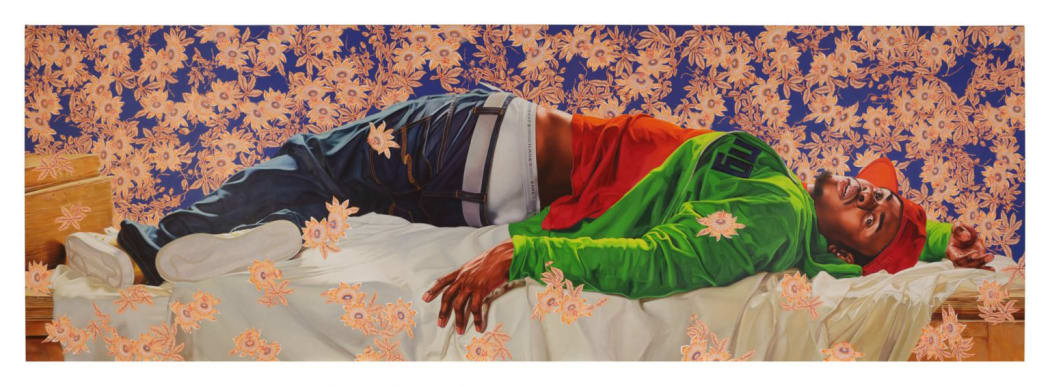 Kehinde Wiley, Femme piquée par un serpent (2008). The Dean Collection of Swizz Beatz and Alicia Keys. © Kehinde Wiley. Photo: Glenn Steigelman.In the vibrant tapestry of the art world, where every thread represents a unique cultural narrative, black art collectors are emerging as pivotal weavers of change and diversity. The significance of black art collectors transcends mere acquisition; it is a profound act of cultural preservation, identity affirmation, and barrier-breaking in an industry historically dominated by a singular narrative. This article delves into the transformative role of black art collectors, who, through their passion and patronage, are not only redefining the contours of art investment but are also championing the rich diversity of black artistic expression.
Kehinde Wiley, Femme piquée par un serpent (2008). The Dean Collection of Swizz Beatz and Alicia Keys. © Kehinde Wiley. Photo: Glenn Steigelman.In the vibrant tapestry of the art world, where every thread represents a unique cultural narrative, black art collectors are emerging as pivotal weavers of change and diversity. The significance of black art collectors transcends mere acquisition; it is a profound act of cultural preservation, identity affirmation, and barrier-breaking in an industry historically dominated by a singular narrative. This article delves into the transformative role of black art collectors, who, through their passion and patronage, are not only redefining the contours of art investment but are also championing the rich diversity of black artistic expression. -
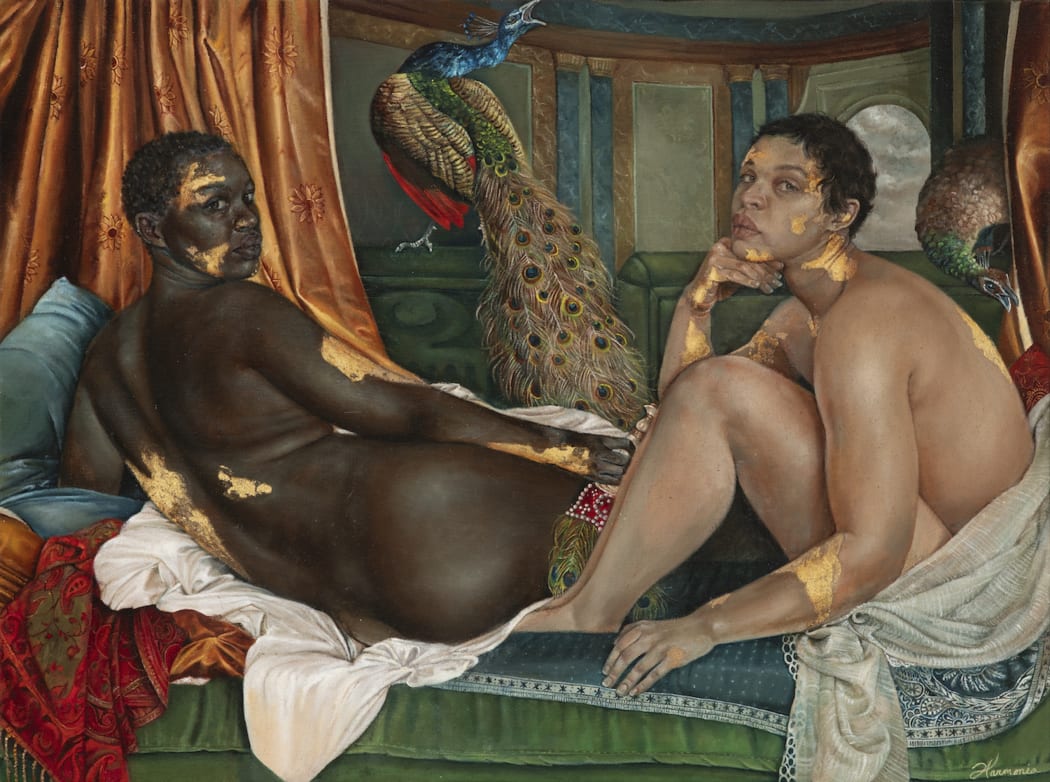
African artists are redefining the Renaissance period by infusing art historical references into contemporary works, recasting works like Pietà by Michelangelo, David by Donatello, and Mona Lisa by Leonardo da Vinci, amongst others, with africans subjects. There is a contemporary interpretation of classical and portraiture traditions in works of African artists like Harmonia Rosales, Victoria Makinde, Chidinma Nnoli, Arthur Timothy, Kehinde Wiley, Christopher Samuel Idowu, and Oliver Okolo. These artists are exploring pressing issues by placing their contemporary subjects in a reimagined classical context.
-
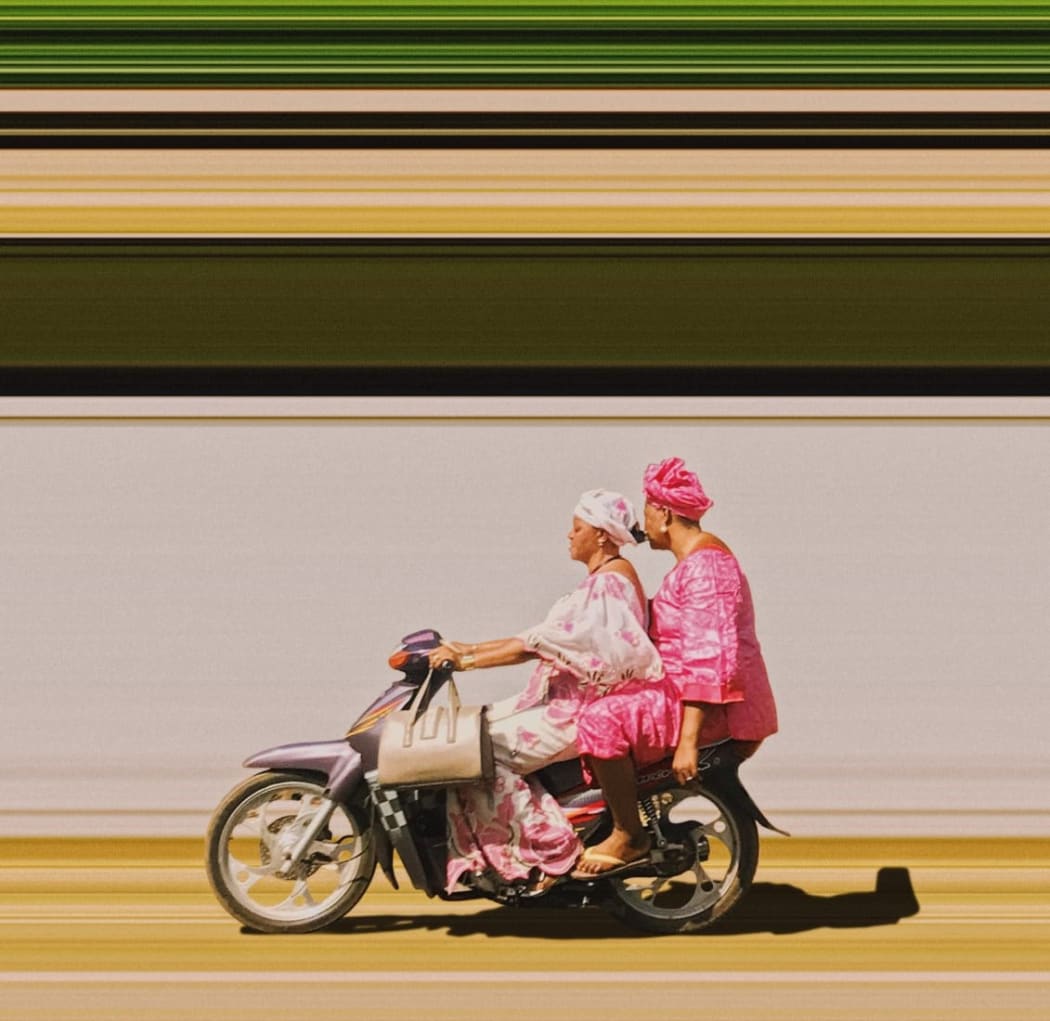 As the art world prepares to rebound to pre-pandemic heights, 2024 promises to be a momentous year with an anticipated surge in exhibitions and art fairs globally. Let’s delve into some of the major art events to anticipate in 2024.
As the art world prepares to rebound to pre-pandemic heights, 2024 promises to be a momentous year with an anticipated surge in exhibitions and art fairs globally. Let’s delve into some of the major art events to anticipate in 2024. -
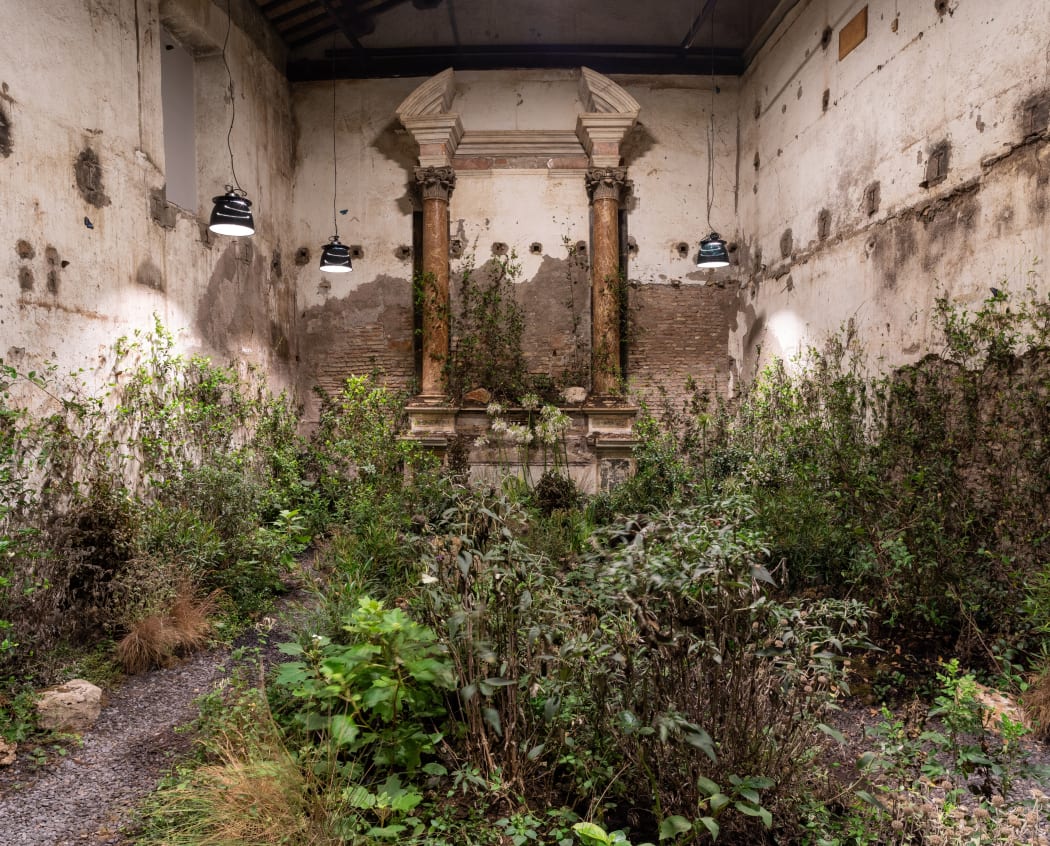
In the investigation of identity and reconciliation of forgotten histories to the present, the concept of a place is significant to the African art narrative. As an active observer of their immediate environment, an artist is in constant dialogue with a place, physical or non-physical.
There’s more emphasis on what the place means to an African artist in their practice, and this exploration could be political, social or metaphysical as they examine identity, culture, history and the complex relationships between people and their environment. From time to time, African artists have reimagined varied immersive spaces to interrogate diverse topics that affect society. In all, they are questioning and redefining the notion of place in the context of a rapidly changing world.
-
Corporate Art Collections: Blending Art with Business Identity
What are corporate art collections and why do companies build them?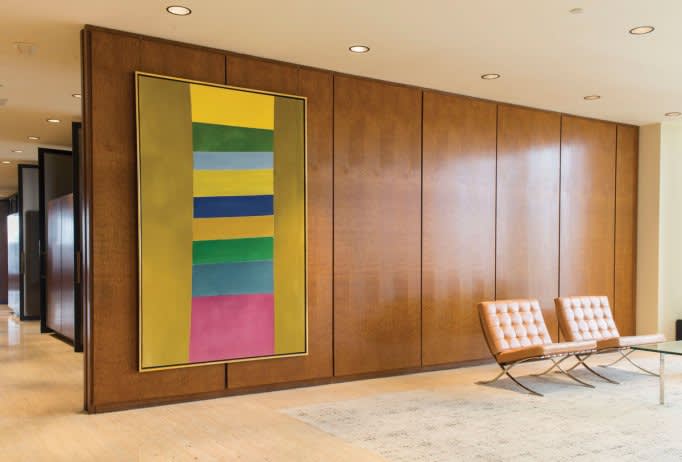 TD Bank’s Toronto headquarters, designed by Mies van der Rohe in 1967, showing the artwork "Rose" by Jack Bush, 1966. COURTESY TD BANK
TD Bank’s Toronto headquarters, designed by Mies van der Rohe in 1967, showing the artwork "Rose" by Jack Bush, 1966. COURTESY TD BANKIn this article, we will explore the historical context of art in corporate spaces, the strategic role of art in corporate identity, the financial and cultural benefits of art as an investment, the symbiotic relationship between corporate collections and emerging artists, and the evolving future of art in the corporate world. Through this exploration, we aim to illuminate the intricate dance between art and business and how this relationship continues to redefine the boundaries of corporate identity and cultural patronage.
-
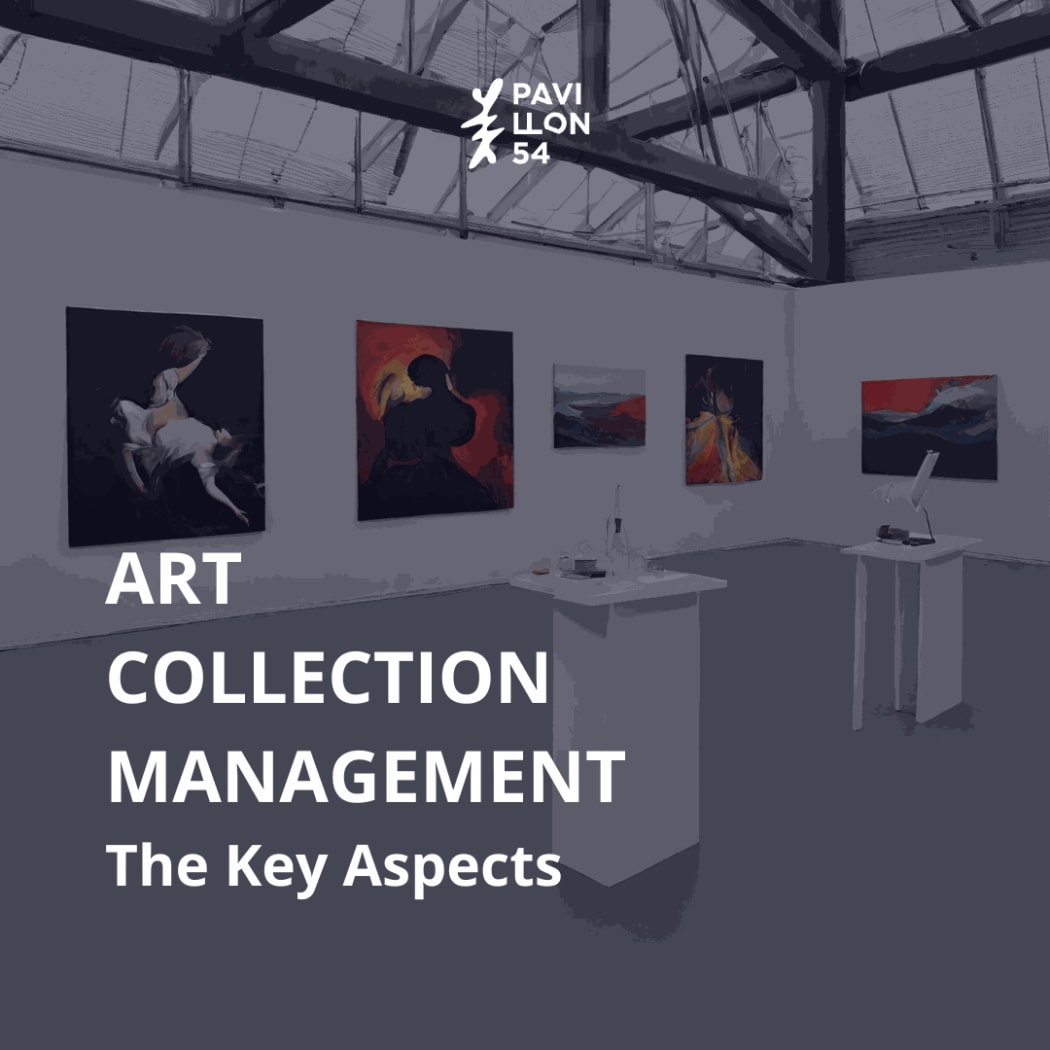 Art collection management is a multifaceted discipline that requires a combination of art expertise, organisational skills, and the use of specialised tools to ensure the longevity and cultural significance of the artworks within a collection. It is an important aspect of managing both private and public collections for a number of reasons. In this short article we explain the key aspects and reasons collection management is vital.
Art collection management is a multifaceted discipline that requires a combination of art expertise, organisational skills, and the use of specialised tools to ensure the longevity and cultural significance of the artworks within a collection. It is an important aspect of managing both private and public collections for a number of reasons. In this short article we explain the key aspects and reasons collection management is vital. -
Abstract African Art
A little more about abstraction in art from Africa and its diaspora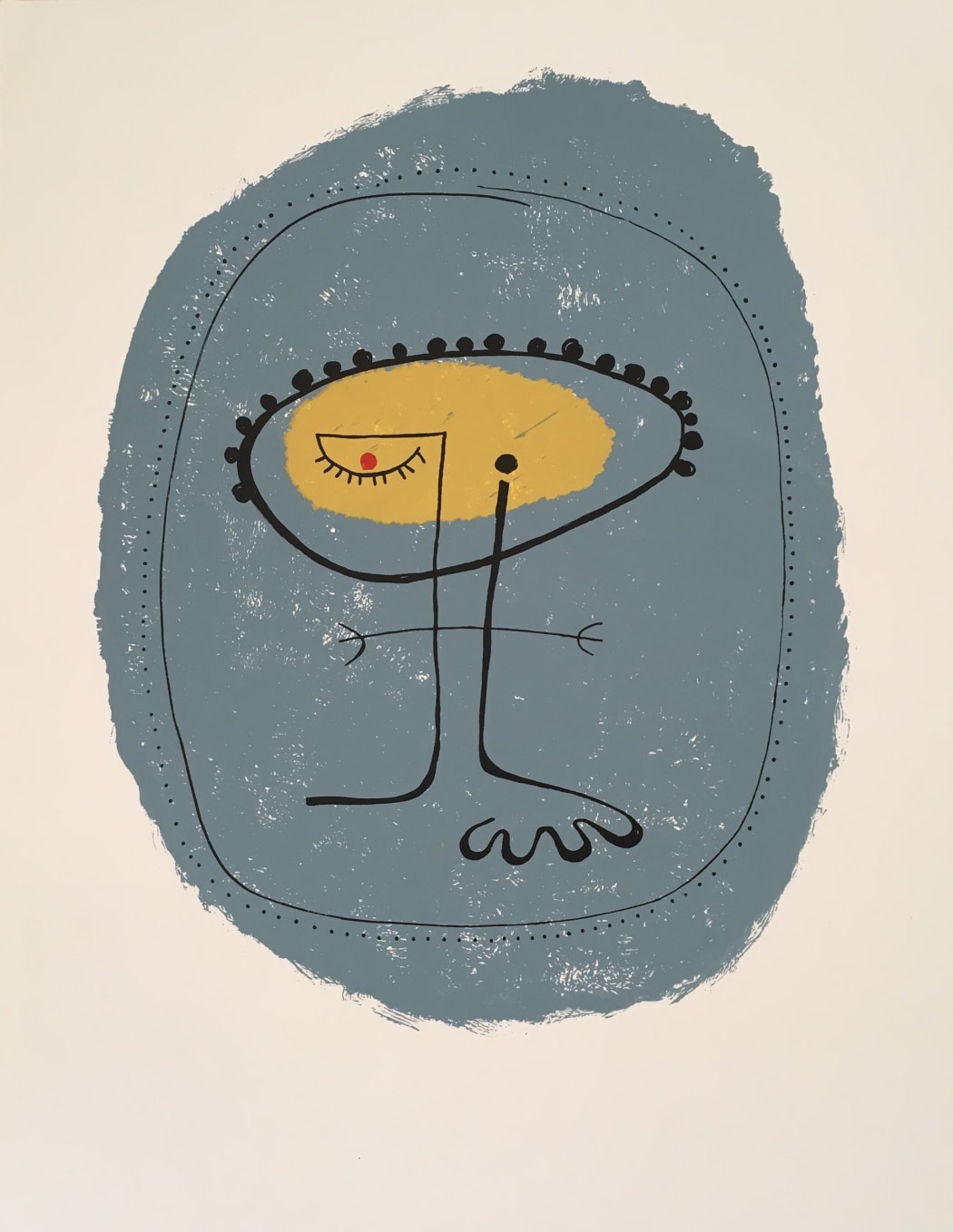 Victor Ekpuk The dancer, 2006 Lithograph on paper
Victor Ekpuk The dancer, 2006 Lithograph on paperThis article will explore the complexity involved in understanding abstract art from the continent and its diaspora and will give examples of artists who work well in this arena.
The influence of European colonialism played a significant role in shaping artistic perspectives in Africa and the diaspora. Traditional art forms, often characterised by figurative and symbolic representations, were sometimes marginalised in favour of Western artistic styles.
-

With different interpretations of personal and shared experiences as artists of Nigerian heritage, these emerging artists are restless and relentless in their exploration of issues relating to social, cultural, economic and political identity while reviewing the ideas of gender, sexuality, race, nationality and heritage. The Nigerian art scene continues to remain globally recognised as the works of these artists are pulling numbers in the art market.
Dominating the art scene in the last five years, Pavillon54 introduces 8 emerging artists you should know, look out for and support.
-
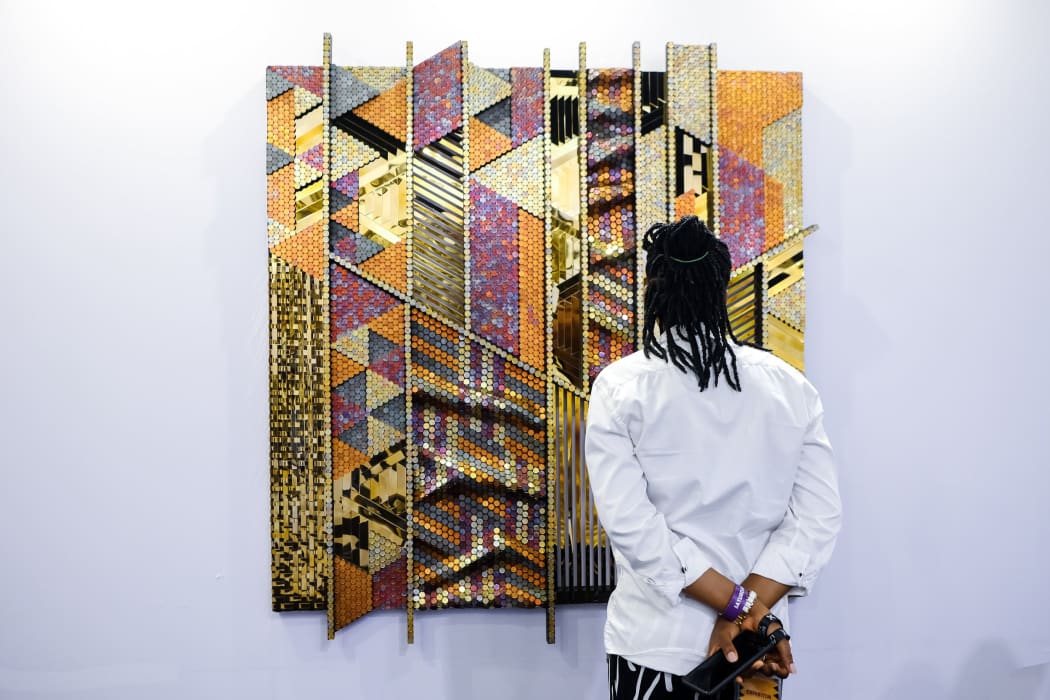 Art X Lagos returned to The Federal Palace, Victoria Island, for its 8th edition to explore ideas, prompting reflection and mutual sharing, to guide our reimagination of the here and now differently. The theme for this year’s edition was ‘The Dialogue,’ which prompted negotiation beyond political and social dilemmas. The curation for this theme featured past and present artists whose story forms based on folklore and tales by moonlight, graphic stories, film shorts, and essays produced nuanced portrayals of real and imagined places and people.
Art X Lagos returned to The Federal Palace, Victoria Island, for its 8th edition to explore ideas, prompting reflection and mutual sharing, to guide our reimagination of the here and now differently. The theme for this year’s edition was ‘The Dialogue,’ which prompted negotiation beyond political and social dilemmas. The curation for this theme featured past and present artists whose story forms based on folklore and tales by moonlight, graphic stories, film shorts, and essays produced nuanced portrayals of real and imagined places and people. -
 Abstract art from the continent and diaspora, once on the fringes of the global art landscape, has now taken its rightful place in the spotlight. From the diverse community of African artists, we spotlight our picks of abstract artists, each with a unique voice, a different perspective, and an artistry that transcends borders. From Limpopo to Fort de France, their artistic journeys reflect personal narratives, socio-political commentaries, and cultural identity.
Abstract art from the continent and diaspora, once on the fringes of the global art landscape, has now taken its rightful place in the spotlight. From the diverse community of African artists, we spotlight our picks of abstract artists, each with a unique voice, a different perspective, and an artistry that transcends borders. From Limpopo to Fort de France, their artistic journeys reflect personal narratives, socio-political commentaries, and cultural identity. -
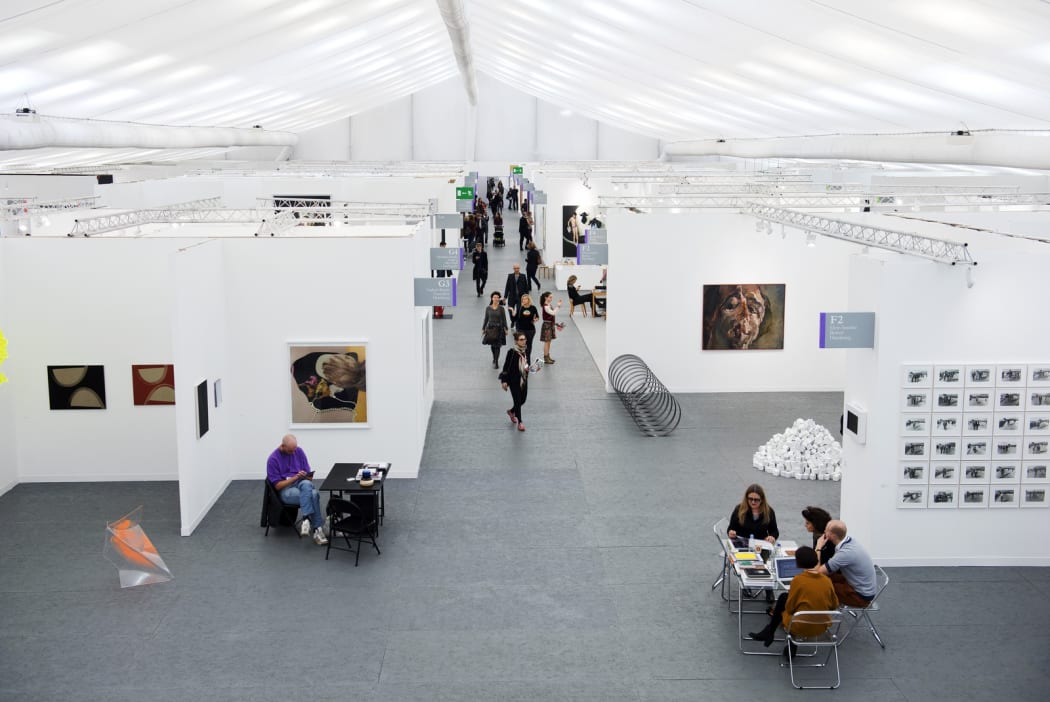 In the ever-evolving world of contemporary art, the latter part of the year 2023 promises to be vibrant, with exhibitions ongoing and visionary curatorship unceasing. As the art world gears up for a spectacular finale, we explore a curated selection of upcoming art fairs that will captivate aficionados, collectors, and enthusiasts alike. From London's iconic Somerset House to the sun-drenched shores of Miami Beach, and the heart of Paris, these art fairs bring together a rich tapestry of artistry and diverse art enthusiasts. Each event possesses its unique character, casting a spotlight on emerging talents, established masters, and the ideas that will shape the contemporary art landscape in the coming months.
In the ever-evolving world of contemporary art, the latter part of the year 2023 promises to be vibrant, with exhibitions ongoing and visionary curatorship unceasing. As the art world gears up for a spectacular finale, we explore a curated selection of upcoming art fairs that will captivate aficionados, collectors, and enthusiasts alike. From London's iconic Somerset House to the sun-drenched shores of Miami Beach, and the heart of Paris, these art fairs bring together a rich tapestry of artistry and diverse art enthusiasts. Each event possesses its unique character, casting a spotlight on emerging talents, established masters, and the ideas that will shape the contemporary art landscape in the coming months. -
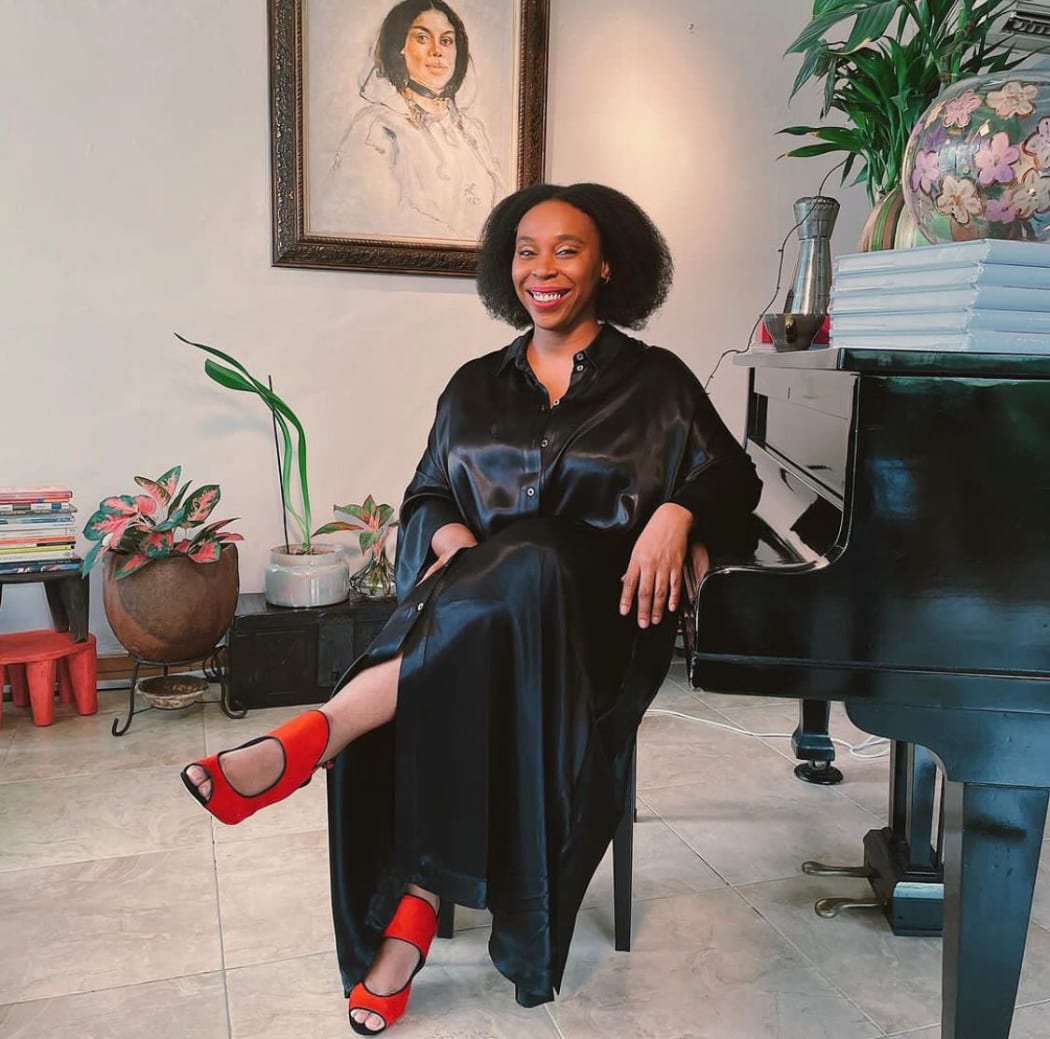
In this series, collectors are invited to open their art collections to Pavillon 54 readers.
Collector Ugoma Ebilah is one of the unusual suspects in the ever-booming Lagos art scene in Nigeria. A corporate finance professional turned creative entrepreneur, Ugoma is known for her community-building efforts and dynamic taste-making. She is the founding director and chief curator at Bloom Art, a portfolio gallery and private art salon set in the heart of Victoria Island.
-
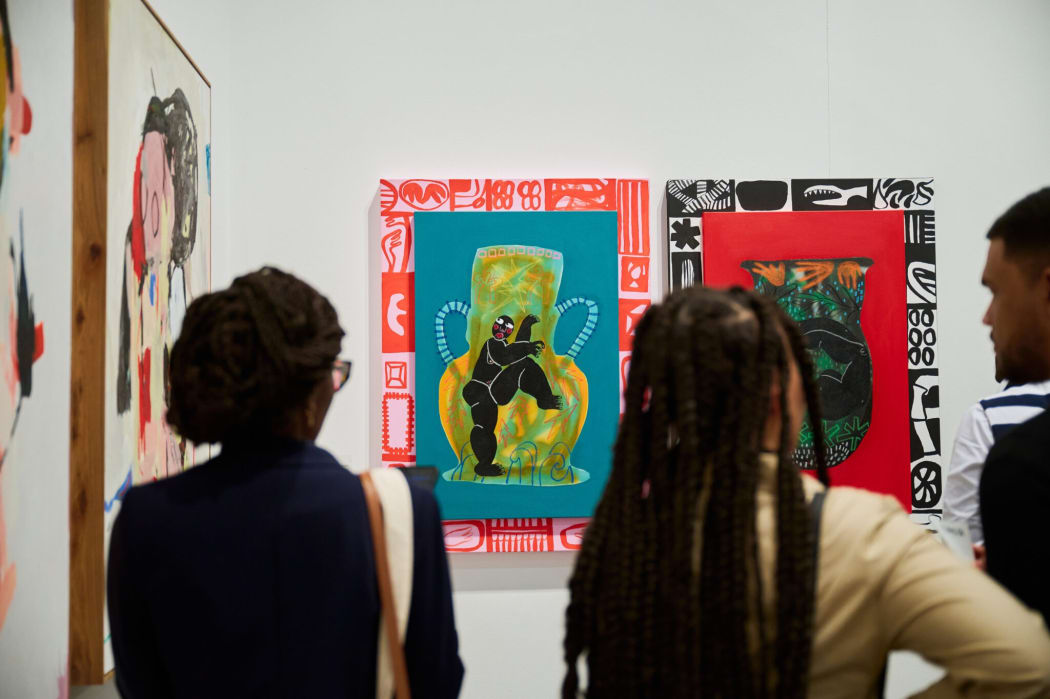 The 16th edition of the FNB Joburg Art Fair was a celebration of art from both local and international perspectives. Since its inception in 2008, this event has continually expanded its reach, drawing audiences across divides. This year's fair lived up to its exceeded previous editions, offering an array of exhibitions, an indoor sculpture park, thought-provoking talks and engaging book signings. Beyond the fair itself, the FNB Joburg Art Fair has succeeded in turning September into Joburg's Art Month. Significant art-related events take place throughout the city, including at the Johannesburg Art Gallery (JAG), in Maboneng, and various artists' studios across the metropolis.
The 16th edition of the FNB Joburg Art Fair was a celebration of art from both local and international perspectives. Since its inception in 2008, this event has continually expanded its reach, drawing audiences across divides. This year's fair lived up to its exceeded previous editions, offering an array of exhibitions, an indoor sculpture park, thought-provoking talks and engaging book signings. Beyond the fair itself, the FNB Joburg Art Fair has succeeded in turning September into Joburg's Art Month. Significant art-related events take place throughout the city, including at the Johannesburg Art Gallery (JAG), in Maboneng, and various artists' studios across the metropolis. -
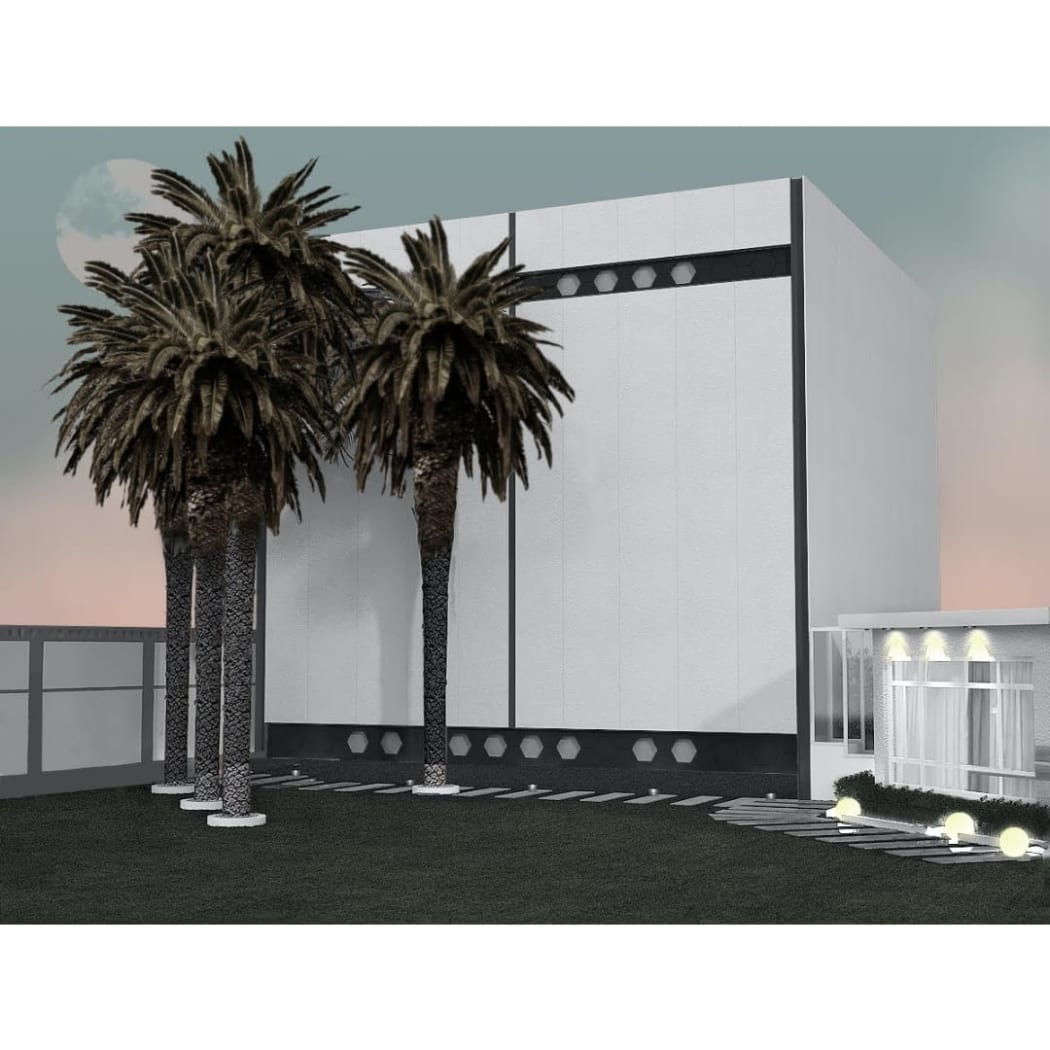 In a state where institutional support is lacking, government backing is close to zero, and the economic backdrop is abysmal, the artistic energy within the Lagos art scene is thriving. Against all odds, the artistic energy in the West African art capital of Nigeria is witnessing the rise of new galleries that are reshaping the local, and by extension the international art scene. These galleries provide platforms for up-and-coming and established artists to exhibit their work while redefining contemporary art within the city's cultural landscape.
In a state where institutional support is lacking, government backing is close to zero, and the economic backdrop is abysmal, the artistic energy within the Lagos art scene is thriving. Against all odds, the artistic energy in the West African art capital of Nigeria is witnessing the rise of new galleries that are reshaping the local, and by extension the international art scene. These galleries provide platforms for up-and-coming and established artists to exhibit their work while redefining contemporary art within the city's cultural landscape. -
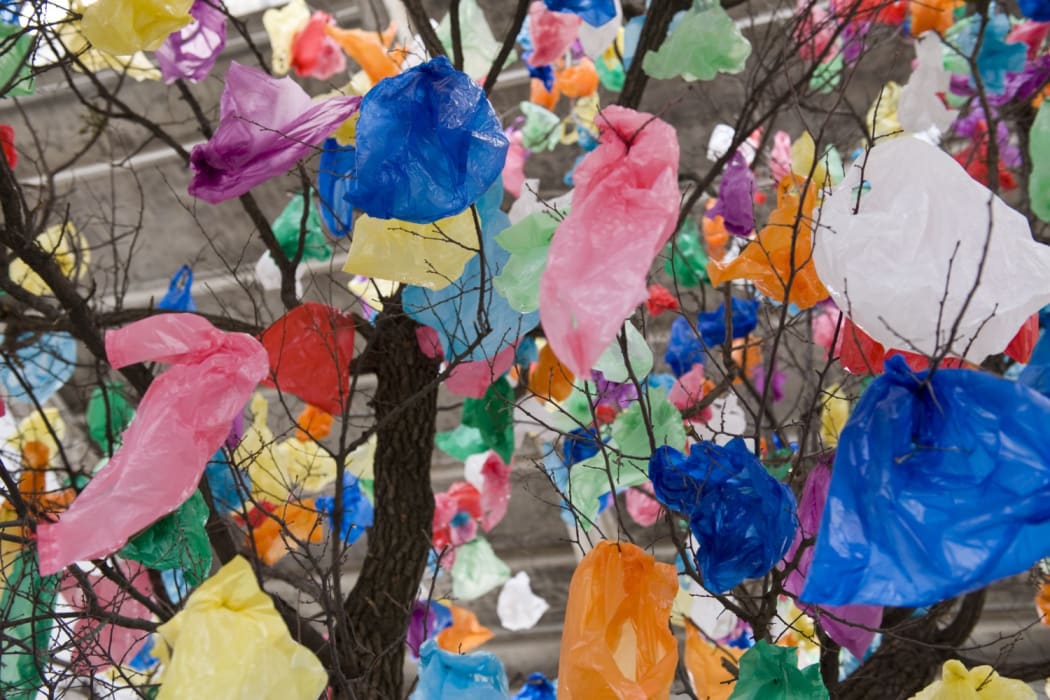
In an era marked by the far-reaching repercussions of climate change, Africa finds itself grappling with its profound ramifications, bearing a disproportionate burden due to its unique geographical positioning, economic complexities, and limited capacity. The continent is now grappling with an intensified frequency of droughts, floods, and other erratic weather patterns, compounding preexisting vulnerabilities and placing the livelihoods of countless individuals at stake. The imprint of climate change is starkly evident in disrupted agricultural systems, a precarious food security landscape, all while the intricate tapestry of biodiversity and ecosystems faces unprecedented jeopardy.
Amidst this crucible of challenges, an inspiring narrative unfolds as African artists step onto the forefront as catalysts for change. Harnessing creative expression, artists have embarked on a mission to spotlight the harrowing realities of climate change and kindle a call to action within both local communities and the global arena. Through their endeavours, African artists are not only thrusting the crisis to the forefront of collective consciousness but also underscoring the transformative potential of art as a potent instrument for driving societal metamorphosis. In this article, we round up a handful of artists across the continent who emerge to respond to the climate crisis.
-
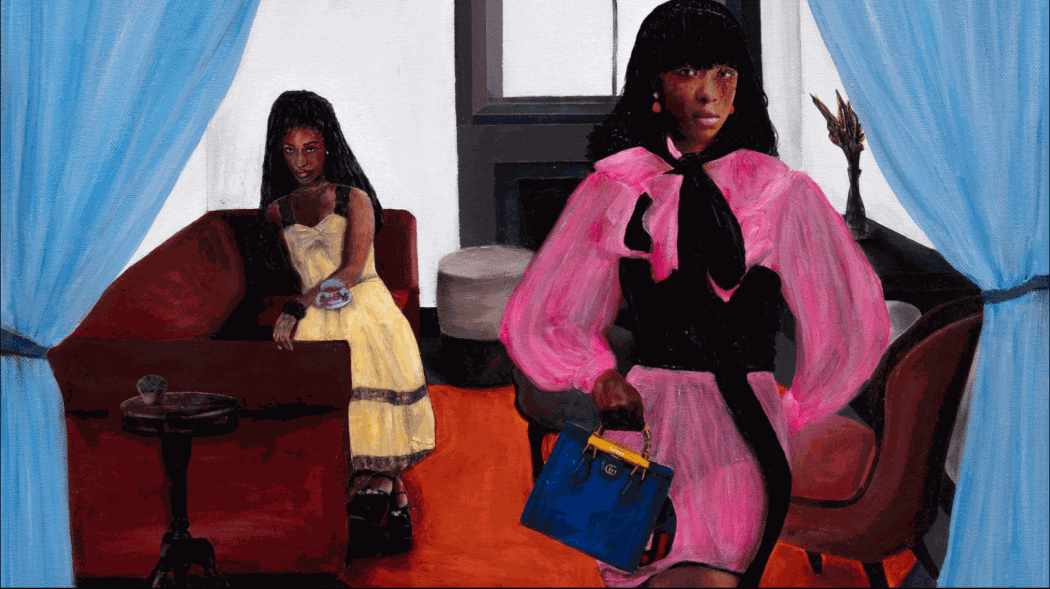
What is significant about the contemporary moment is that the historical and cultural importance of black culture, and its influence in fashion is being acknowledged. It is significant and worthy of notice because rather than be exploitative, these collections are fostered from collaboration and an appreciation of the contributions of African artists. The artistic collaborations we see paint a colourful portrait of cultural fusion, celebrating the rich heritage and creative ingenuity of the African continent.
The list is extensive – African culture has at numerous points inspired influential fashion houses.
-
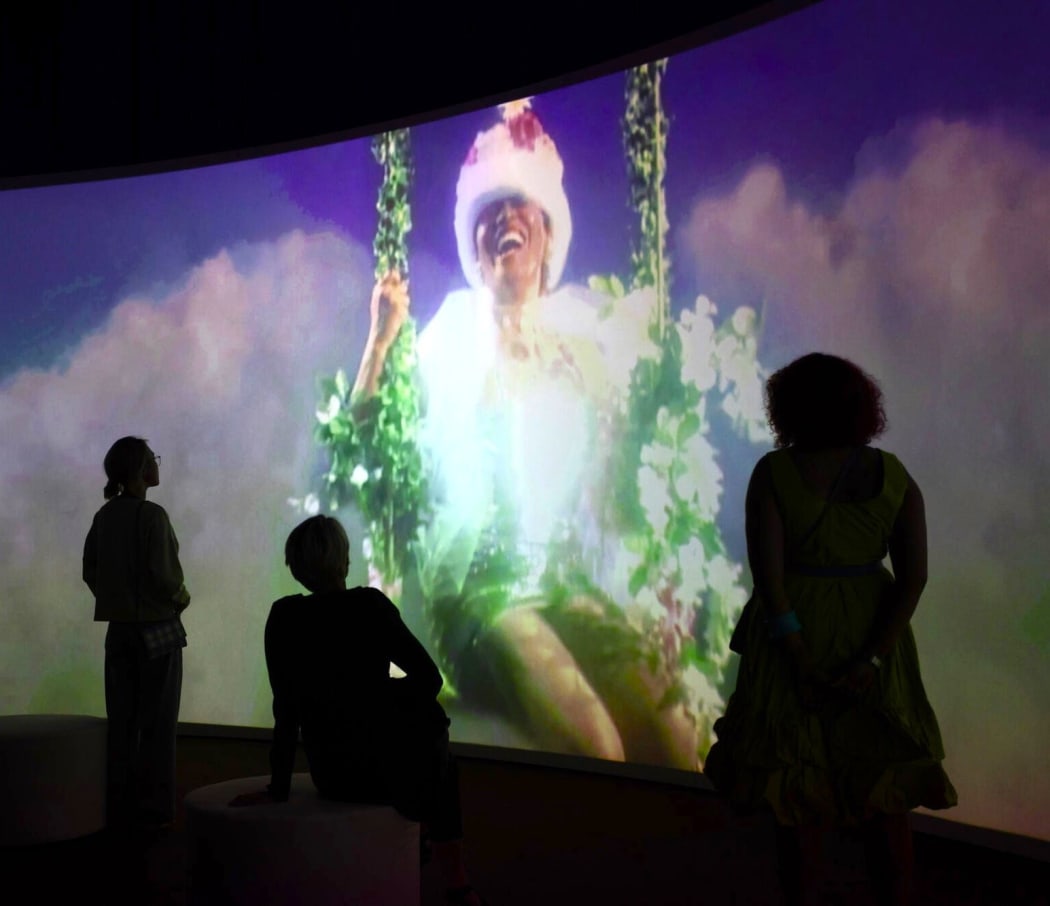 Summer has arrived in the Northern hemisphere and it is arguably the best time of year to enjoy the various offerings each city provides — architecture, parks, and undoubtedly the various museums and galleries. From iconic artists to rising stars, lesser known art movements and the celebration of African photography, this guide offers our picks on the ever-evolving landscape of contemporary art.
Summer has arrived in the Northern hemisphere and it is arguably the best time of year to enjoy the various offerings each city provides — architecture, parks, and undoubtedly the various museums and galleries. From iconic artists to rising stars, lesser known art movements and the celebration of African photography, this guide offers our picks on the ever-evolving landscape of contemporary art. -
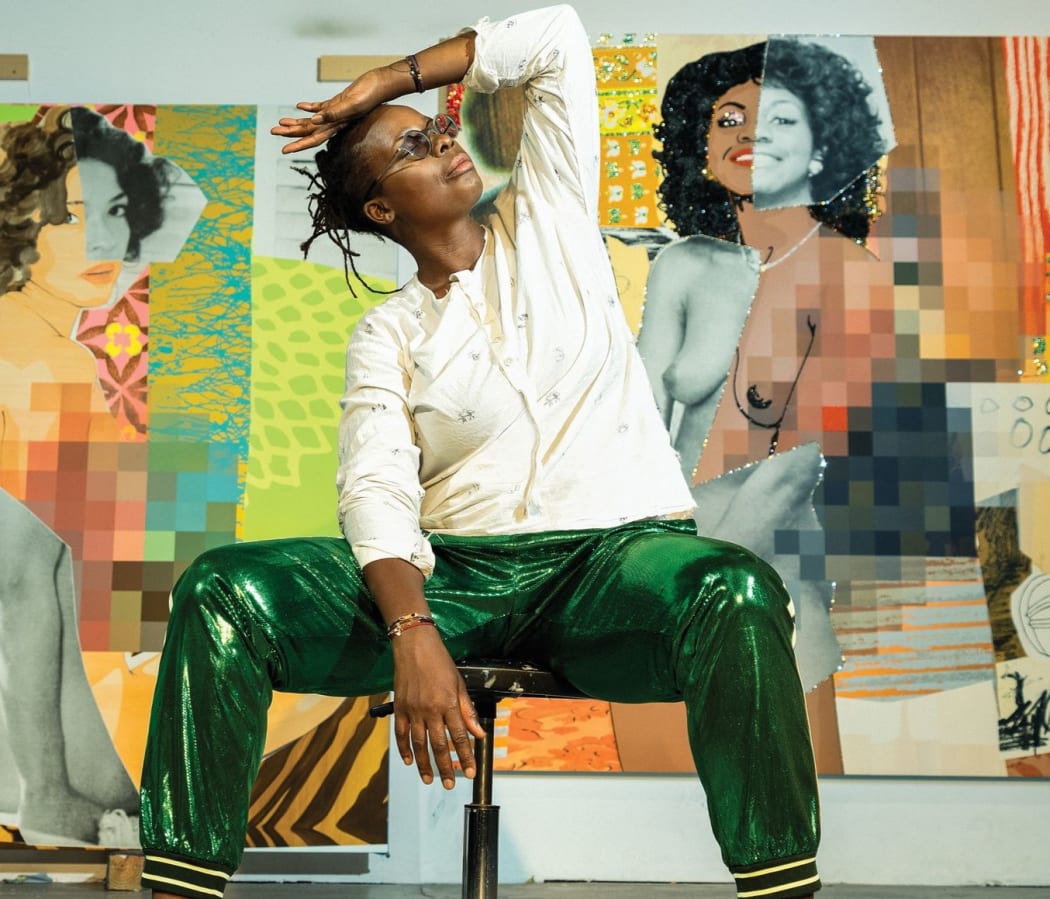 As Pride month comes to a close, it is crucial to recognise the artistic contributions of queer individuals who challenge traditional narratives and perspectives. In the realm of contemporary art, one name that stands out is Mickalene Thomas. With her bold reinterpretation of iconic works like Édouard Manet's Olympia and Le Dejeuner sur l'herbe, Thomas offers a unique representation from a black and queer perspective, simultaneously engaging with queer theory. In this article, we will delve into Thomas' artistic journey and explore how she reshapes the art world through her powerful and inclusive vision.
As Pride month comes to a close, it is crucial to recognise the artistic contributions of queer individuals who challenge traditional narratives and perspectives. In the realm of contemporary art, one name that stands out is Mickalene Thomas. With her bold reinterpretation of iconic works like Édouard Manet's Olympia and Le Dejeuner sur l'herbe, Thomas offers a unique representation from a black and queer perspective, simultaneously engaging with queer theory. In this article, we will delve into Thomas' artistic journey and explore how she reshapes the art world through her powerful and inclusive vision. -
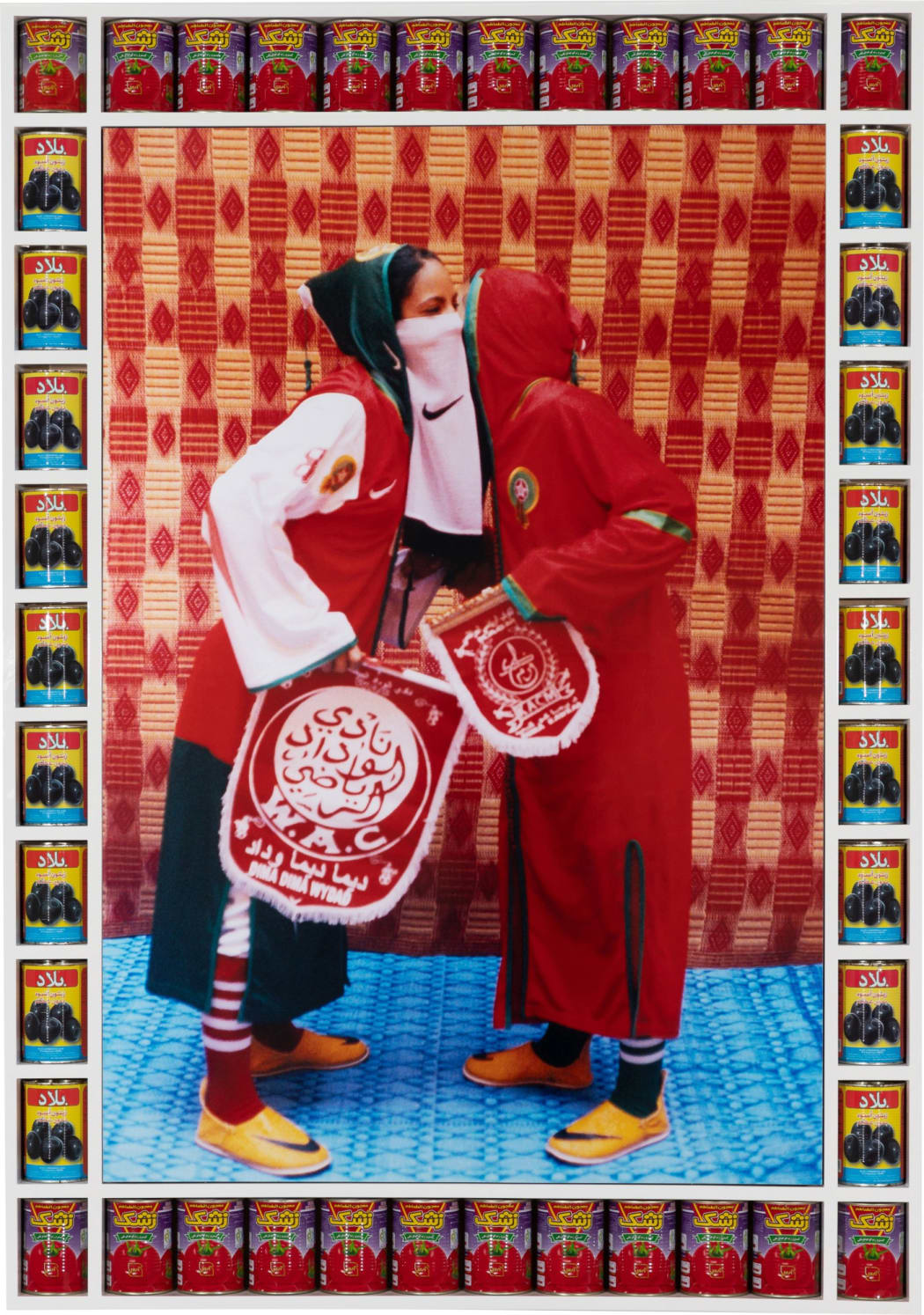
For Morocco, rich artistic heritage comes hand in hand with its traditional artisanship, colourful enclaves and impressively ornate architecture. In recent years, this creative identity has been added to by the growth of its contemporary art scene. Two major private institutions — Museum of African Contemporary Art Al Maaden (MACAAL) and Musée Yves Saint Laurent Marrakech — opened within two years of one another. Events like Marrakech Art Week and 1-54 Contemporary African Art Fair add to the growing excitement.
This roundup gathers together a list of artists from Morocco that is significant to the local scene and have made waves internationally. While many still live in Morocco, others work within the diaspora and present opportunities for international audiences to immerse themselves. Perhaps this roundup may even convince you to make plans to visit the country and discover the spaces and artists in the flourishing contemporary art scene.
-
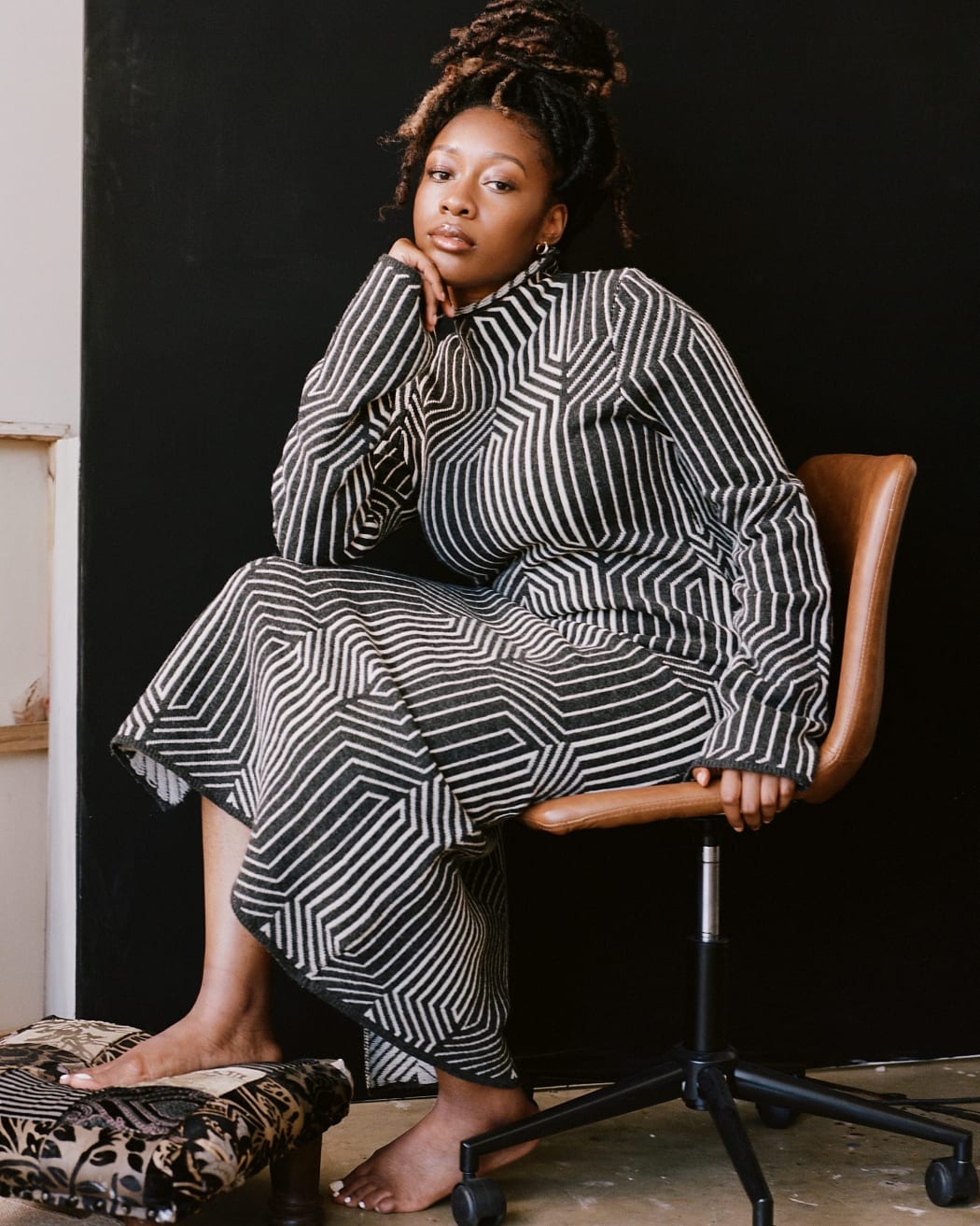
Ideas of the home have been explored in contemporary art — tied to issues of race and gender, identity and class. The ‘home is where the heart is’ theme is an abundant notion with many myriad approaches in contemporary art. In Emma Prempeh’s paintings, homes and interiors are imbued with locale, history, memory and identity.
Emma Prempeh is certainly an artist to watch — with much attention surrounding the artist there audiences can surely expect more.
-
 The annual Art Basel and UBS Art Market Report is out. With pages and pages of well-researched insights on the global art market from the previous year, the report covers topics from NFTs and online sales to auctions, dealers and fairs. It’s dense and certainly doesn’t qualify as light reading so here at Pavillon54 we break down some relevant findings from this lengthy 2022 report.
The annual Art Basel and UBS Art Market Report is out. With pages and pages of well-researched insights on the global art market from the previous year, the report covers topics from NFTs and online sales to auctions, dealers and fairs. It’s dense and certainly doesn’t qualify as light reading so here at Pavillon54 we break down some relevant findings from this lengthy 2022 report. -
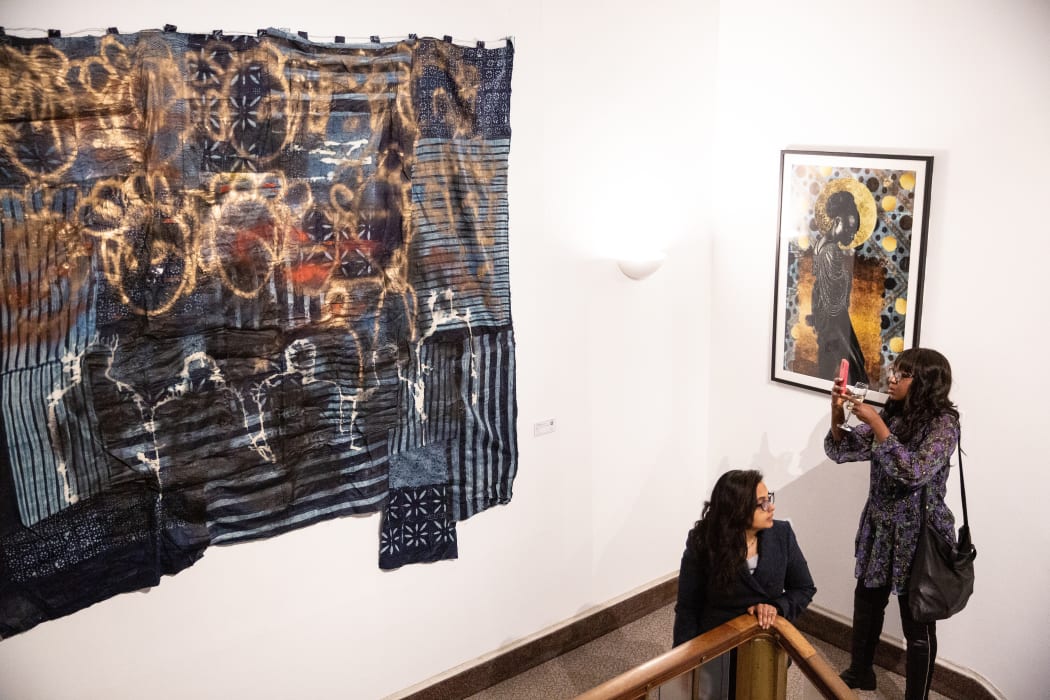
Black beauty, pride and excellence: A Tale of Reappropriation is all about representations of black culture and community. The product of a true collaboration between the Black in Business club at London Business School and Pavillon 54 from conception to the desinstallation. It’s no secret that during the course of history, Africans have been dehumanised and that the project of re-humanising the life and world of African societies remains an urgent task. The exhibition took a strong focus on finding more complex ways to critically engage with Black identities.
-
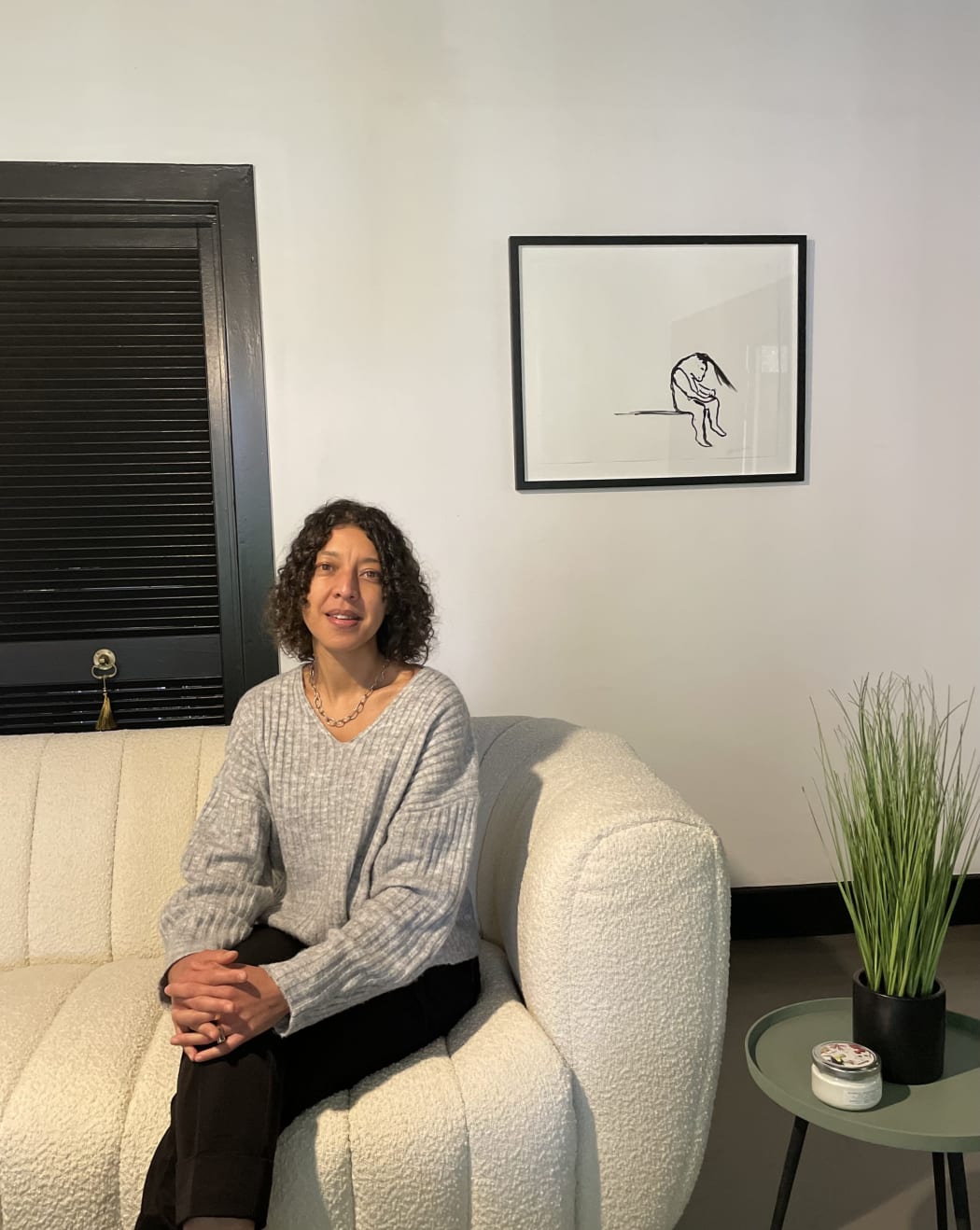
Joburg-based collector Liesle Barrath takes Pavillon54 on a walk through her private art collection. Housed in her leafy home, it is a cool and eclectic mix of works featuring heavy-hitting names such as Mmakgabo Helen Sebidi and Nandipha Mntambo together with street-art inspired works courtesy of artists Khaya Witbooi and Vusi Beauchamp. Walking through the space, Liesle recounts the story behind each of the purchases, what emotions the artworks stir within and as we stop to consider each work, it becomes clear that she collects from a gut feeling.
In this series, we invite collectors to open their art collections to Pavilion 54 readers.
-
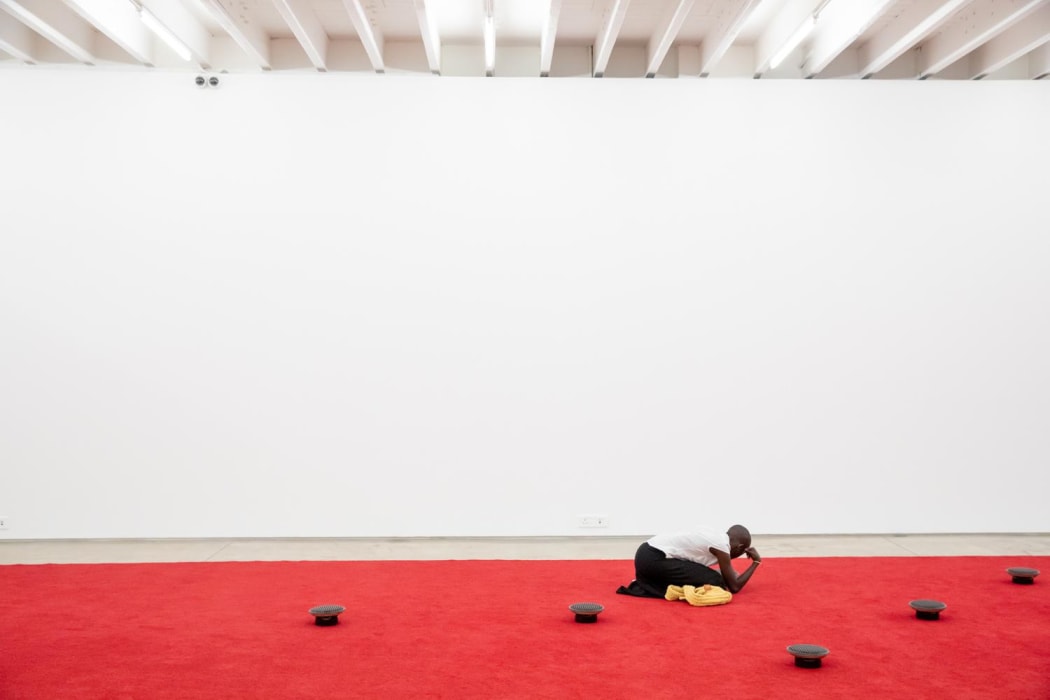
Celebrating a decade of contemporary South African art, Investec Cape Town opened its doors for its tenth edition. From modest beginnings, it is now generally acknowledged as the largest international contemporary art fair in Africa. The fair focused on the concept of time — the theme was broad, appropriately so as time is all-encompassing of ideas about the past, present, and future as well as the ever-important concept of change that comes with time. The tenth-anniversary timing for this theme was also appropriate. The fair reached its ten-year height, boasting 25 000 visitors, 106 exhibitors from 18 different countries, and 337 artists; it was the fair's largest-ever edition.
To accompany this larger-than-ever, birthday-bash edition, were some spectacular highlights that are worth celebrating especially because this fair has much to teach other fairs on the continent.
-
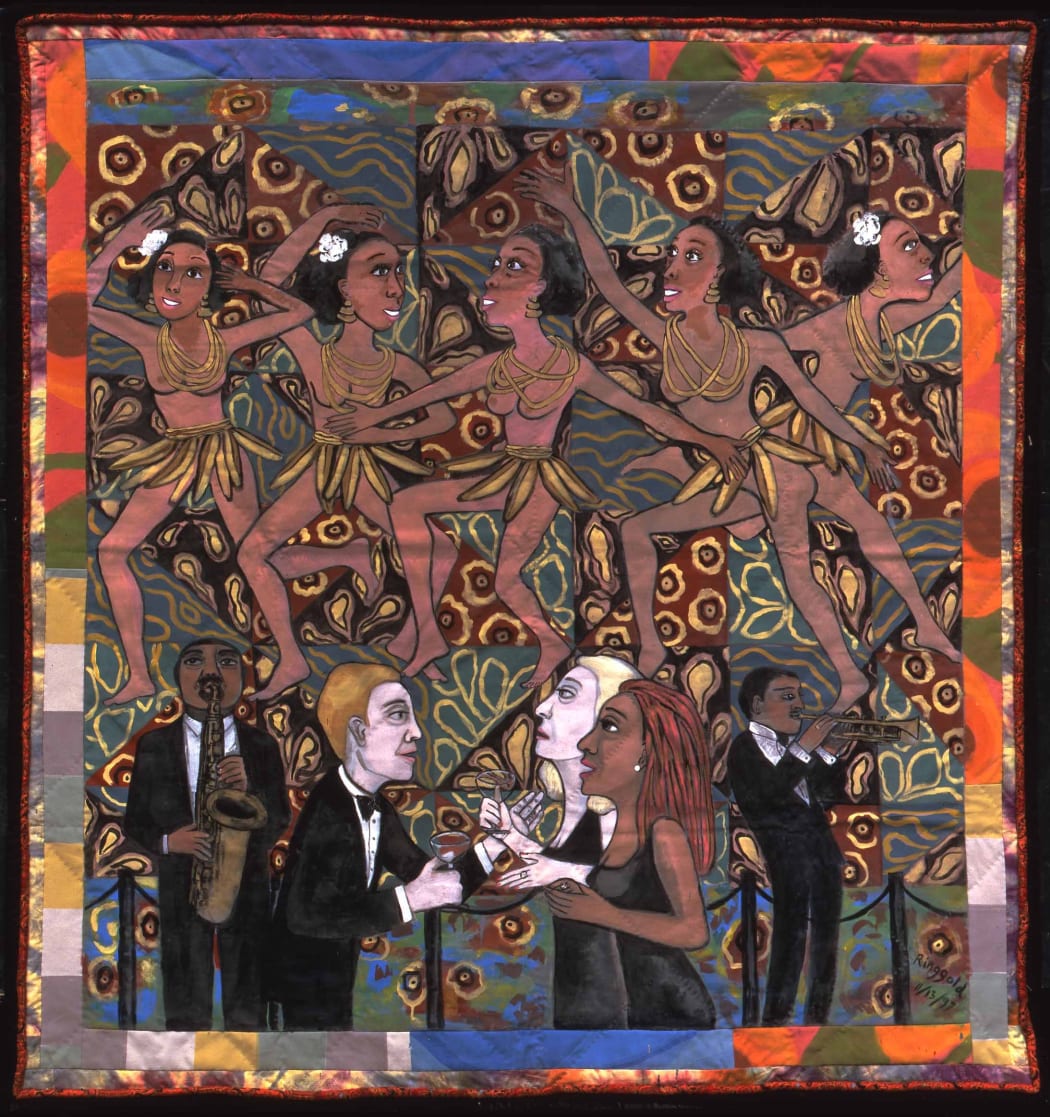 In honour of black history month, we’re taking the opportunity to measure where the art making culture of African Americans stands, its celebration and the paths yet uncharted. The third edition of the Burns Halperin Report, a publication inaugurated in 2018 by independent editor Charlotte Burns and Artnet News’s Julia Halperin, was published in 2022 and the findings reveal that black American artists and black American female-identifying artists are not reflected in US museums and the global art market. This is the major starting point for this article — we look at the stats and what they reveal about how black American artists are faring.
In honour of black history month, we’re taking the opportunity to measure where the art making culture of African Americans stands, its celebration and the paths yet uncharted. The third edition of the Burns Halperin Report, a publication inaugurated in 2018 by independent editor Charlotte Burns and Artnet News’s Julia Halperin, was published in 2022 and the findings reveal that black American artists and black American female-identifying artists are not reflected in US museums and the global art market. This is the major starting point for this article — we look at the stats and what they reveal about how black American artists are faring. -
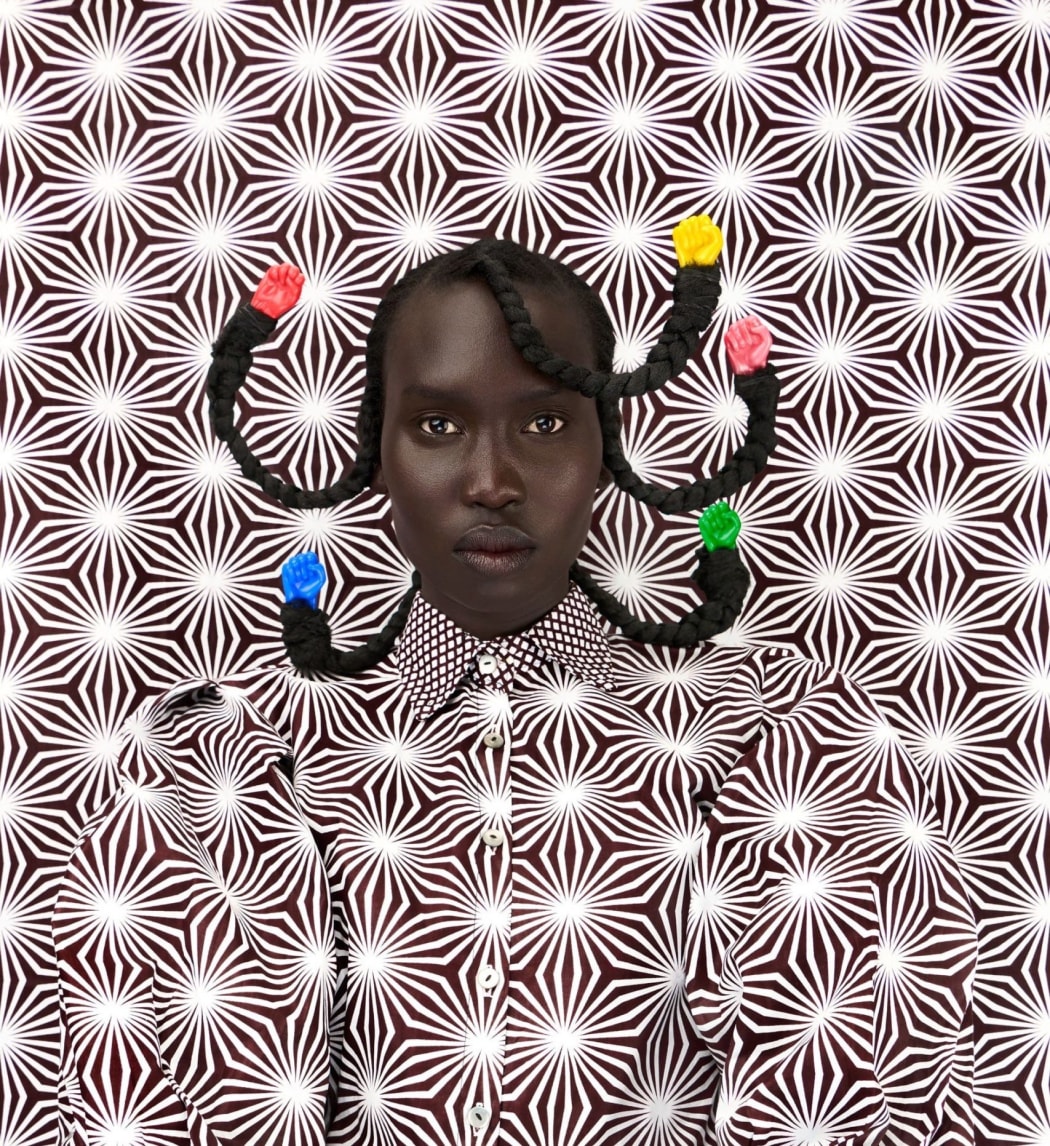
In recent years, Kenya has emerged as a key hub for contemporary art in East Africa. Nairobi is becoming an ever-more important hub for art in the region with a growing list of contemporary art spaces. These include the prominent Circle Art Gallery as well as GoDown Arts Center, Kuona Artists Collective, Nairobi Contemporary Art Institute (NCAI), and the One-Off Contemporary Art Gallery, to name a few.
Granted, the city has a smaller scene than other centres of contemporary art in Africa such as Lagos, Johannesburg and Cape Town, due to a number of significant setbacks such as insufficient galleries, schools and spaces to make and show art, as well as a lack of support from government. But though the Kenyan capital’s art market might be young, its artistic community is flourishing. After chronicling lists artists you should know in the Democratic Republic of Congo, and established artists in both South Africa and Nigeria we look east to Kenya.
The seven artists in this review do not form a comprehensive list by any means — it is a list of artists who are accessible and influential. Kenya is also home to renowned artists, Michael Soi, Boniface Maina, Michael Armitage and Wangari Mathangi among others.
-
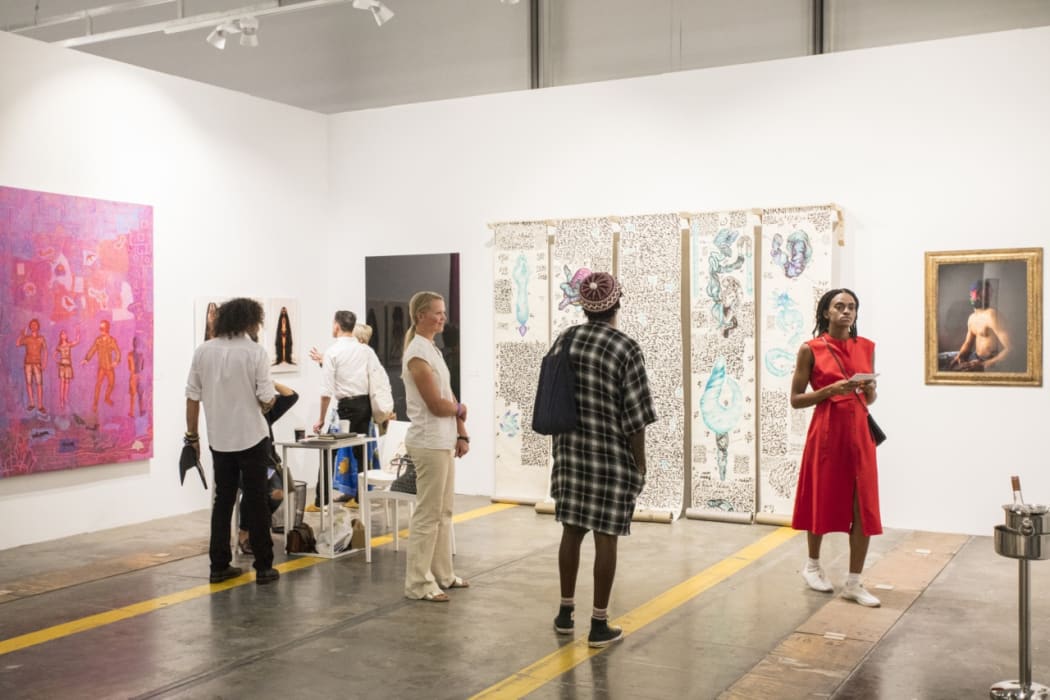 A new year welcomes new trends in the art world. While it is difficult to predict the future of any industry, specific movements will transform the art world this year. After years of uncertainty due to the pandemic, the year ahead will face some challenges with the art market set to contract. Even so, there will continue to be exciting developments. In this article, we will review the significant trends in style and collector behavior set to rise in the art world in 2023. As momentum begins to build on what is surely another exciting year, here are our predictions for the four trends that will shape 2023, and what you should watch out for in the coming year.
A new year welcomes new trends in the art world. While it is difficult to predict the future of any industry, specific movements will transform the art world this year. After years of uncertainty due to the pandemic, the year ahead will face some challenges with the art market set to contract. Even so, there will continue to be exciting developments. In this article, we will review the significant trends in style and collector behavior set to rise in the art world in 2023. As momentum begins to build on what is surely another exciting year, here are our predictions for the four trends that will shape 2023, and what you should watch out for in the coming year. -
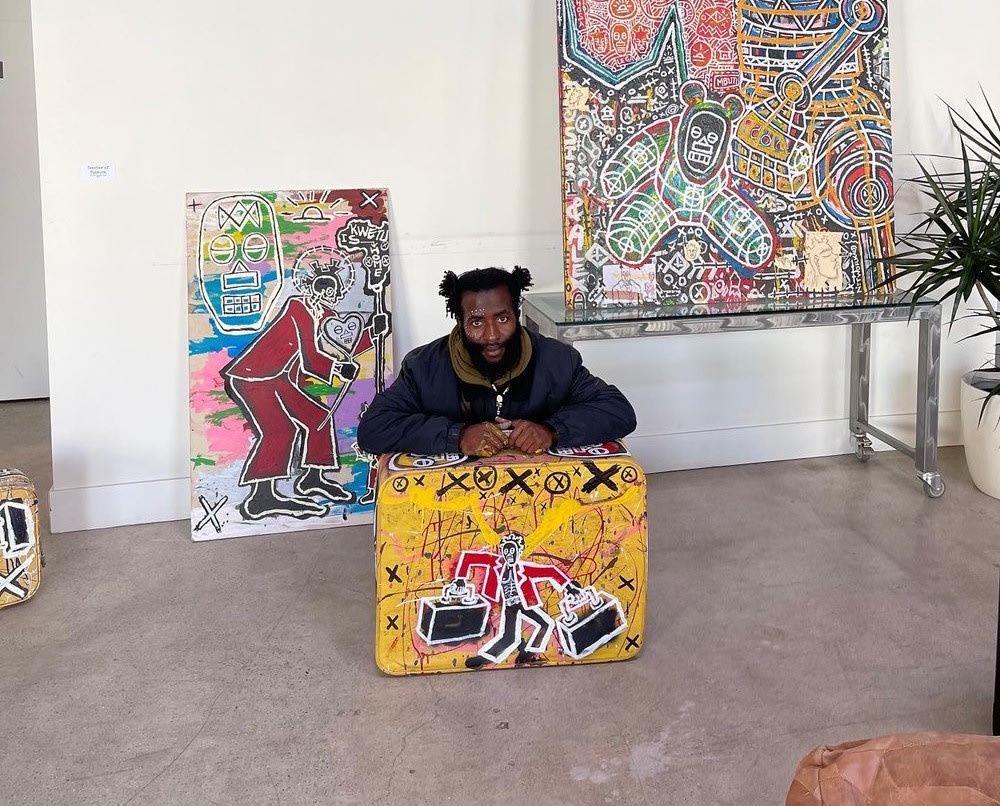
Bâ Simba speaks slowly, intentionally, and every word that comes from his brain seems to be hand-crafted and specifically selected for the sentence he wishes to convey. His words have a weightiness and authority that belie his humble nature, but they are well-suited to his body of work, a painterly practice that employs vivacious colour, strong line, and profound storytelling, in ample measure.
In an interview with the artist, Pavillon 54 asks Bâ Simba more about his practice, his inspirations, and the story he wishes to convey through his art.
-
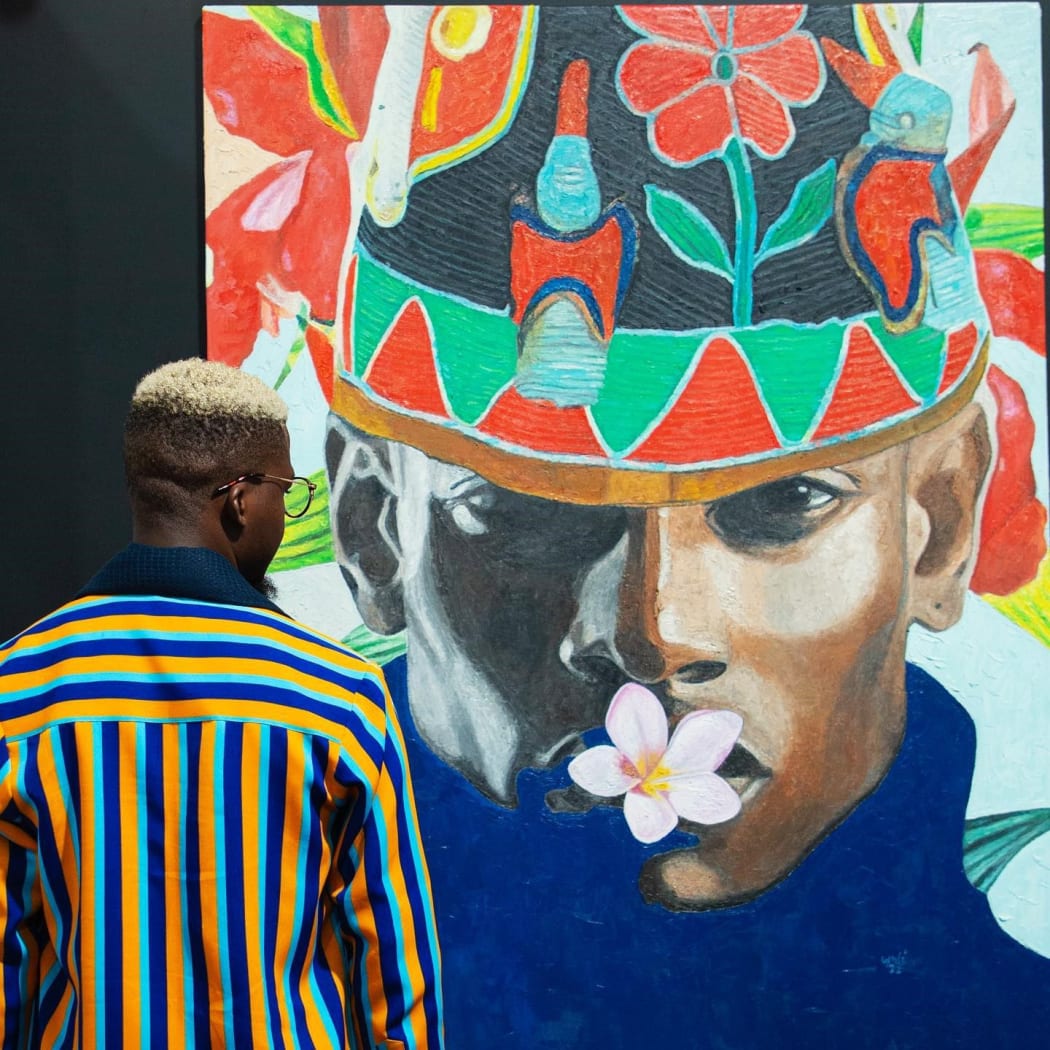 Image courtesy of Artxlagos
Image courtesy of ArtxlagosPerhaps it was the contemporary art withdrawals from the Covid-19 era finally being fed with passionate vigour, or perhaps a flagrant denial of the current global economic hardship with inflation and a potential recession on the horizon, but the contemporary art world has been absolutely buzzing in the latter half of 2022. Multiple accounts have stated that sales at art fairs such as Frieze and Art Basel soared beyond expectations in recent months, and certain auction house sales broke all-time highs. Amongst this bustling global art market activity, the African art sector has not trailed behind. In this 2022 review of the African art world, we spotlight the most important events, sales, records, and market trends to date, and analyse what this foreshadows for the year 2023 ahead.
-
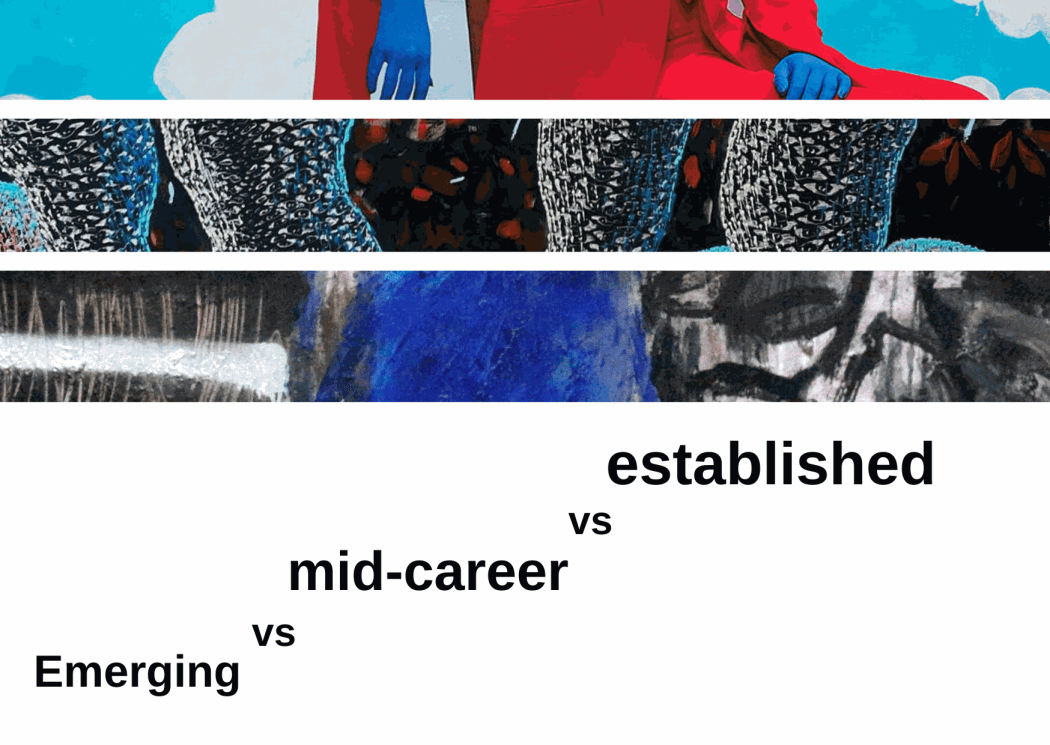
Building a strong art collection requires an understanding of the art ecosystem as well as the market before deciding on a strategy to build your own. Have you ever heard experts or gallerists referring to artists as emerging, mid-career or established and wondered what it all means? Are there specific criteria to differentiate them or is it all just subjective? And how does that influence the price or desirability of an artwork you consider buying?
Here we touch on the differences between the three main stages of an artist's career and their work, and how understanding this is useful in establishing value for collectors. These categories — emerging, mid-career and established artists — are used regularly by artists, gallerists and critics but these delineations can be a matter of contention.
-
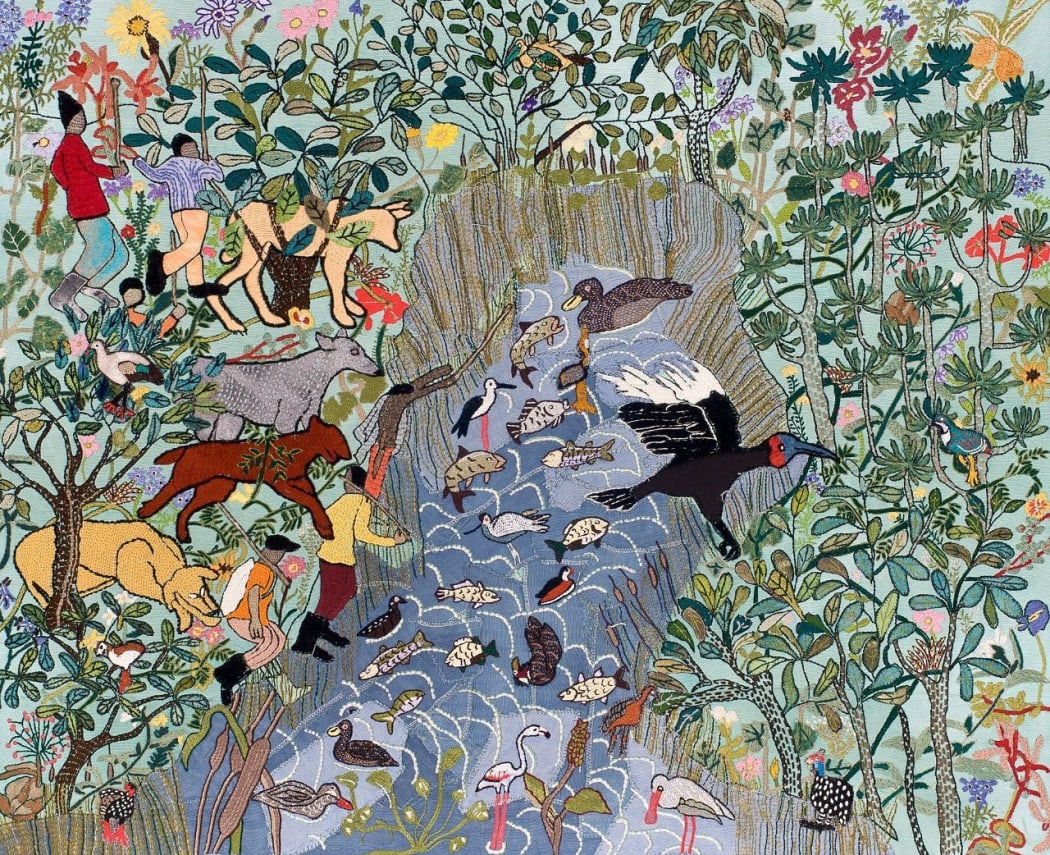
What is defined as textile art is art that uses varying materials and fibers to produce decorative, artistic objects. It’s one of the oldest forms of art in history and has played a part in practical and decorative man-made objects for hundreds of thousands of years. Across the African Continent, textile art has played a huge role in reflecting the individual cultures and styles of specific countries and areas.
Nowadays, many contemporary artists are weaving together a rich variety of textile art in new ways. This list, which is in no way complete, offers a taste of what contemporary artists working in the medium offer.
-
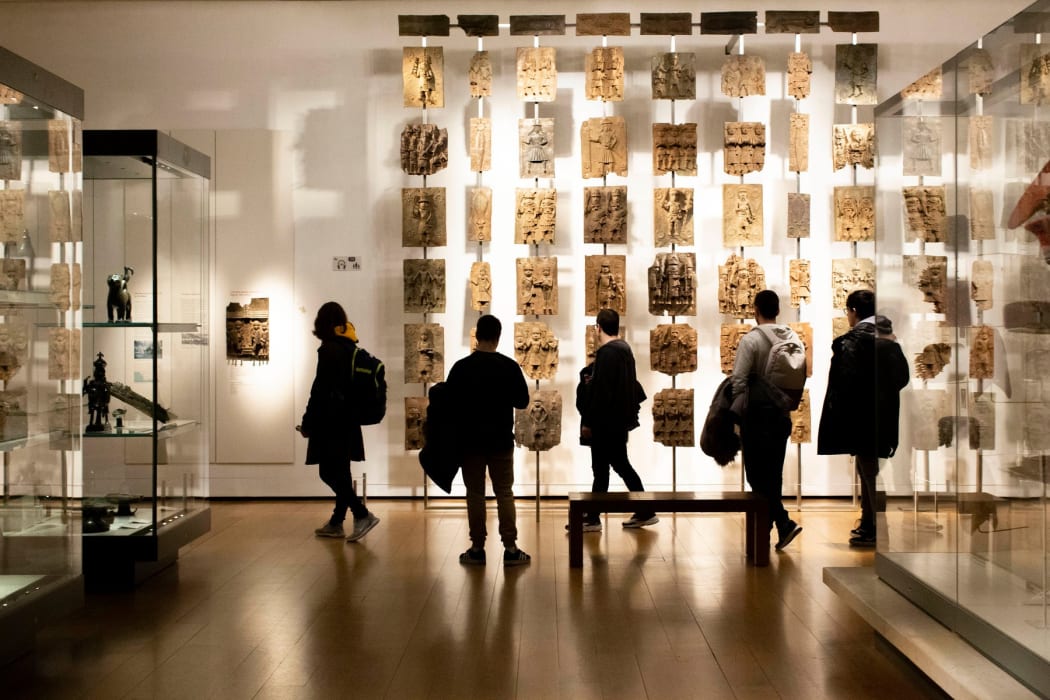
If you’ve been reading our art market coverage of the African Art Market in articles such as our African Art Market Report 2021 or our ‘Break down of the African Art Market,’ you’ll know that African art sales maintained healthy volume and growth last year. Despite the total restructuring of the global art market due to the COVID-19 pandemic, galleries and art organisations in Africa managed to stay afloat for the most part, and have made a vigorous comeback with art fairs, gallery shows and a growing collectorship on the continent adding to the market’s success. But how has the African art market fared so far in 2022? We provide the key insights from the first half of this year below.
-
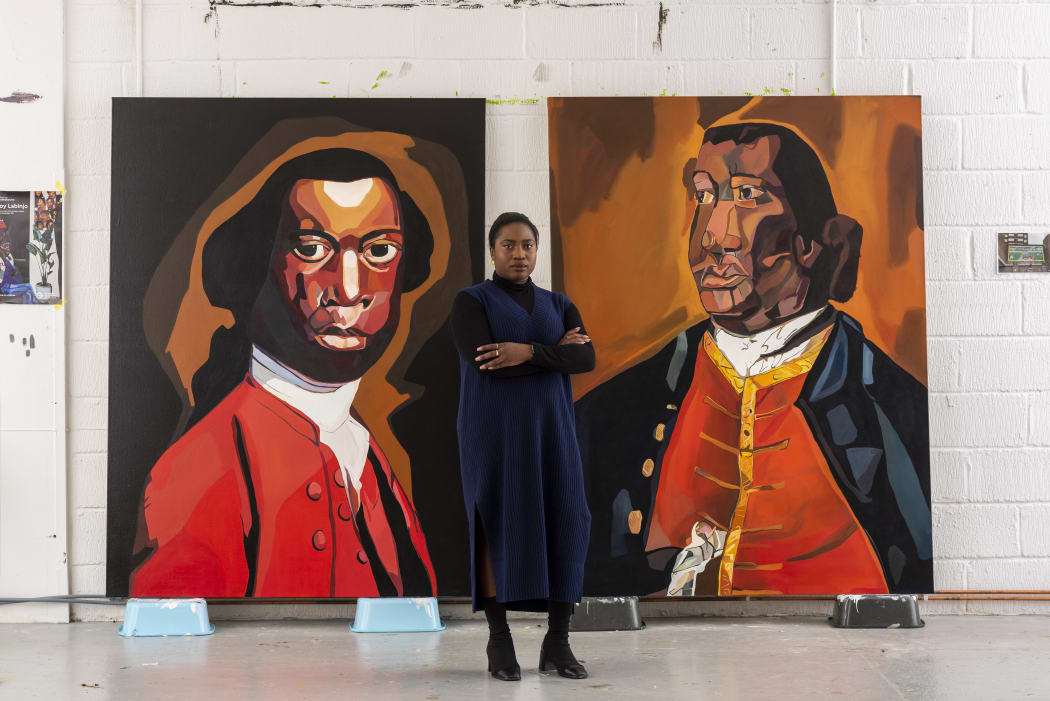 Lovers, collectors and dealers of African art have a new rising star to keep their eyes on: Joy Labinjo. The British-Nigerian artist, who paints large-scale figurative paintings, often of black individuals, has leapt to rapid success in recent years, known for her talent in capturing sensitive, independent, contemplative, and vulnerable people — sometimes all in one.
Lovers, collectors and dealers of African art have a new rising star to keep their eyes on: Joy Labinjo. The British-Nigerian artist, who paints large-scale figurative paintings, often of black individuals, has leapt to rapid success in recent years, known for her talent in capturing sensitive, independent, contemplative, and vulnerable people — sometimes all in one. -
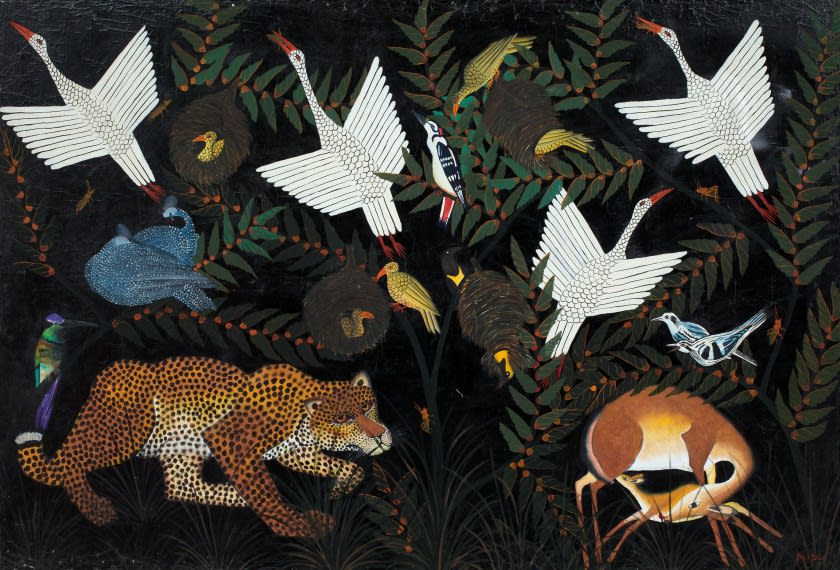
To navigate the history of art of a complex, multifaceted and multicultural continent as Africa, especially if you just got passionate about it, can seem like an overwhelming maze. But no worries, we are here to help you. Follow our series of “Artists you should know or watch” in each country, and you could soon almost sound like an expert! After Nigeria and South Africa, let’s keep on with the Democratic Republic of Congo. In this article, we are looking at modern Congolese artists who have been mainly influential during the second half of last century.
-
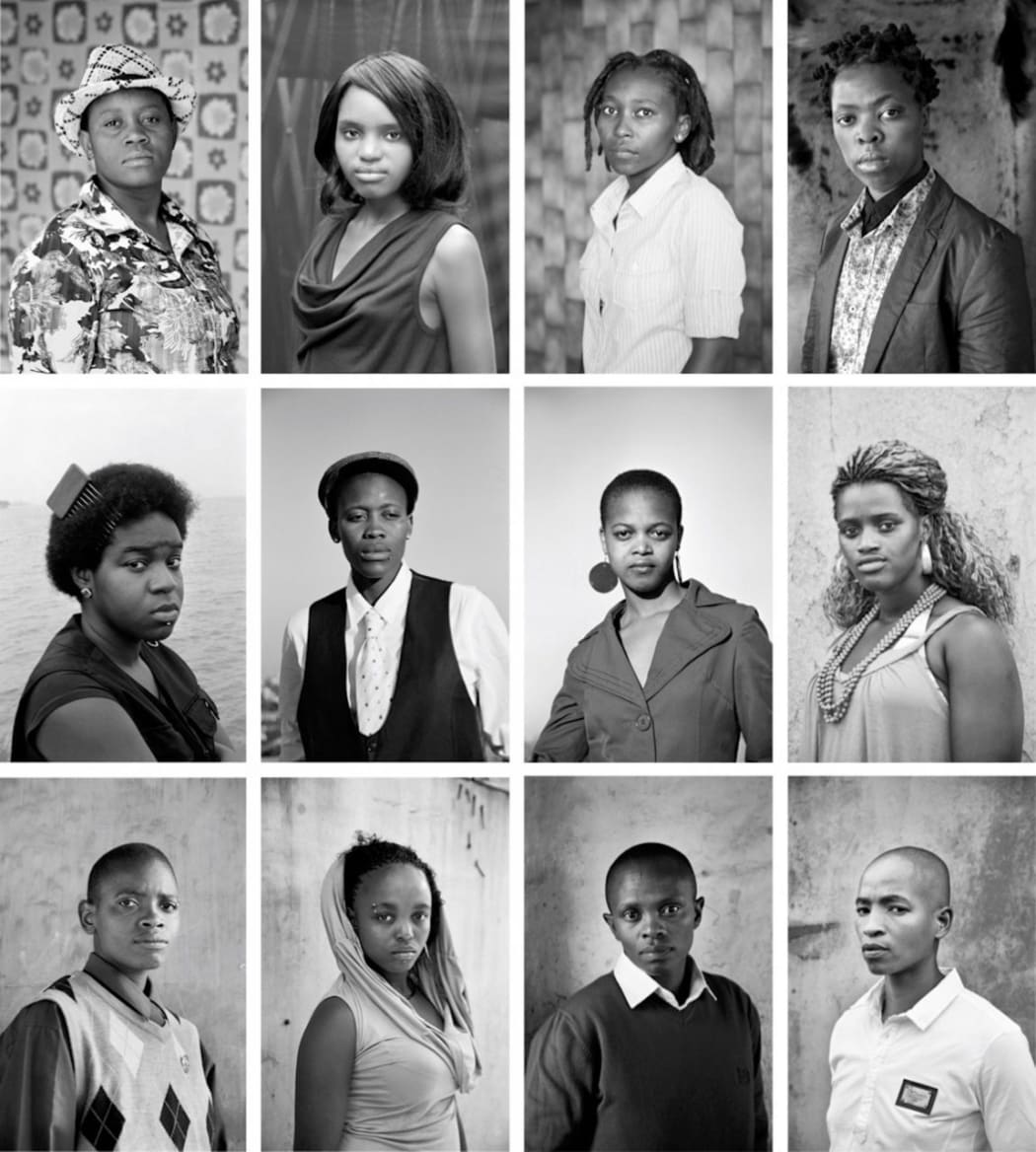
As Pride Month comes to a close, Pavillon54 highlights five key artists from Africa and the Diaspora who are defying cultural and societal expectations and furthering a progressive, forward-thinking and revolutionary African art movement. Through photography, performance, painting or sculpture—whichever weapon of choice the artists’ choose—each of their practices are dedicated to fighting stereotypes and discrimination against the queer communities in their respective countries, and the world more broadly. Read on to discover the methods in which these artists and activists use art to bring to light the pain, vulnerability, strength and beauty of queer individuals in Africa and beyond.
-
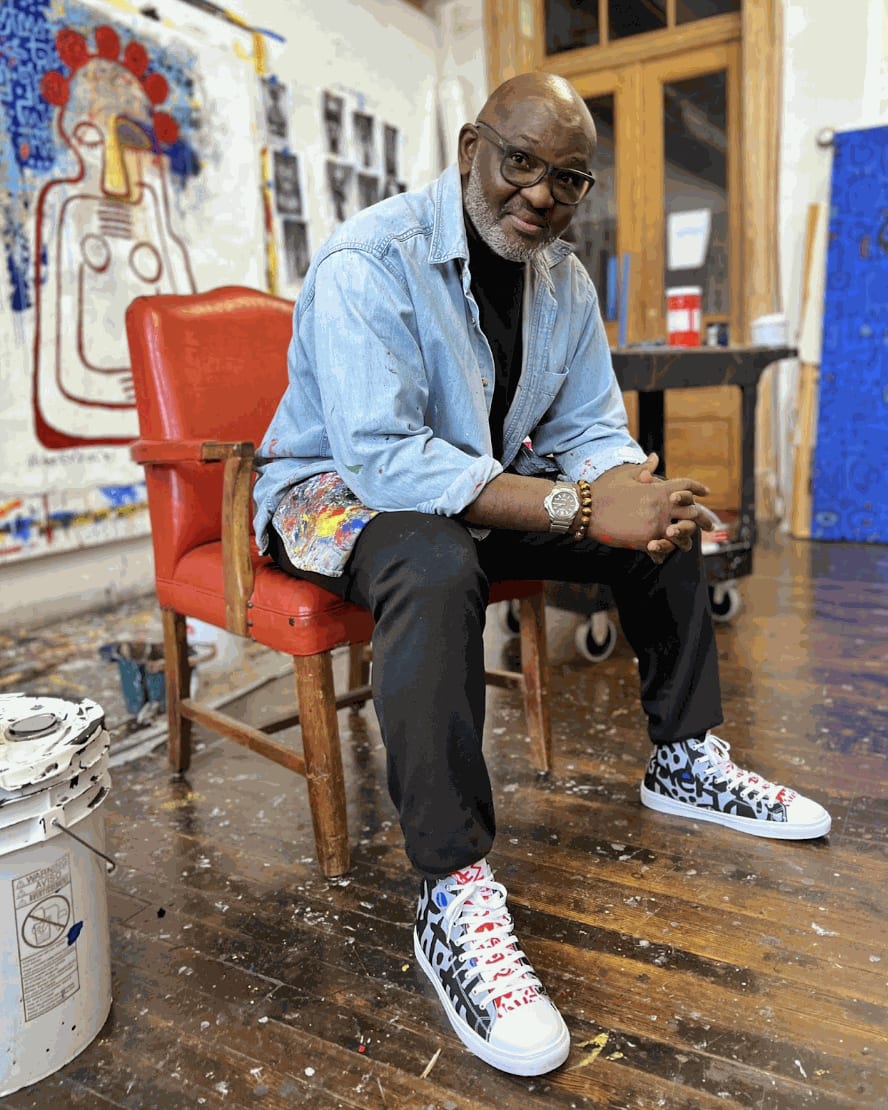
Nigerian-American artist Victor Ekpuk has come to acclaim through his unique visual language, which abstracts the ancient Nigerian script Nsibidi and indigenous Uli art forms. By taking these codes and philosophies as the base for his artistic practice, Ekpuk creates his own symbolism that aims to decrypt the truths of the human condition, placing particular focus on the contemporary African diaspora. Through his paintings, drawings and sculptures, Ekpuk’s language is instantly recognisable, with strong use of intricate linework and bold colour bearing the hallmarks of this signature. Through deep research into the philosophy of Nsibidi script, which the artist studied during his Bachelor of Fine Art at Obafemi Awolowo University in Nigeria, Victor Ekpuk’s work borders drawing and writing, furthering the concept of art being an inherently communicative and story-telling medium.
-
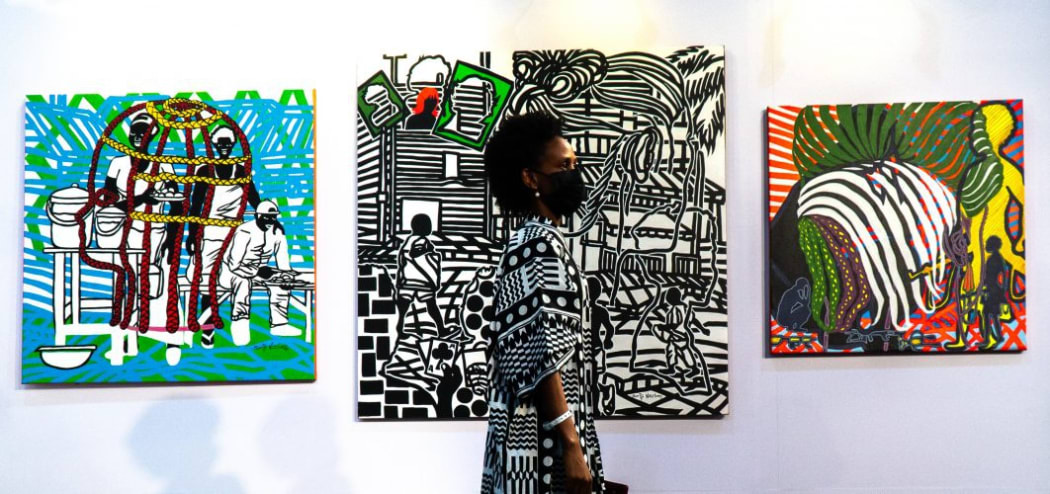
Through yet another unusual year after COVID-19 has been introduced into our lives in 2021, the art market as a whole has experienced incredible innovation and a steady comeback after the events of 2020. But how does the impact of artists from Africa and the diaspora fit into this narrative? Pavillon54 provides a breakdown of this year’s major events, and what we can look forward to for the second half of 2022.
-
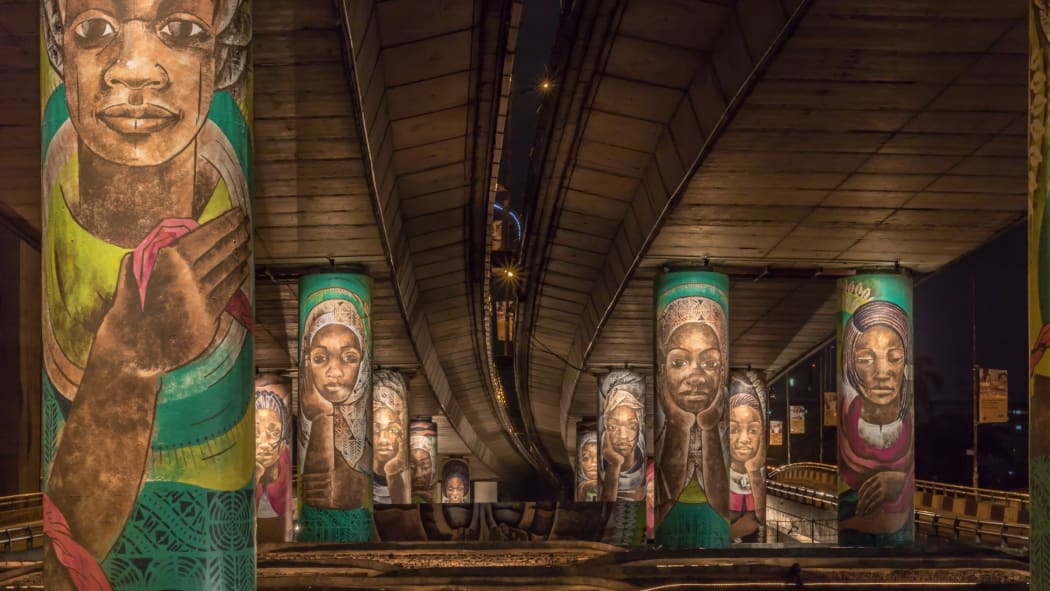 Oluwarantimi by Polly Alakija, public art project commissioned by Lagos Government. Photo @Tayo Adeoye
Oluwarantimi by Polly Alakija, public art project commissioned by Lagos Government. Photo @Tayo AdeoyeAs the second in our series of not-to-miss art destinations when scoping out the art scenes in Africa, we turn to Lagos, one of the leading art capitals on the continent. Lagos boasts a strong artistic tradition. When higher educational institutions were introduced into the country during the 1950s, Nigerian artists began to undermine traditional European-style painting by combining African artistic traditions in their practice, creating a distinct identity. Today, Nigeria hosts one of the largest art fairs on the continent and is home to numerous galleries and cultural institutions. The Pavillon 54 team recently had the privilege of visiting Nigeria and have compiled this list of must-see art spots in its capital city of Lagos.
-
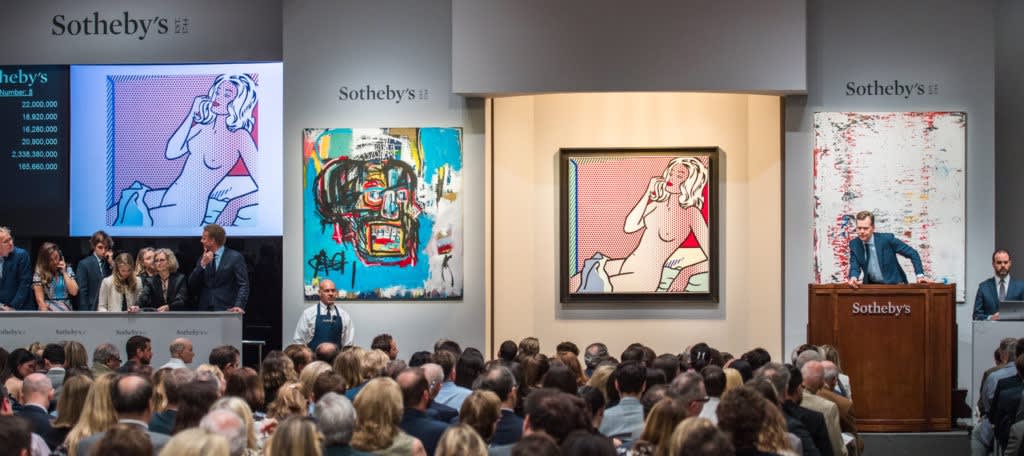
If you are new to the world of collecting art, you may already know that the two primary means of acquiring art are through galleries and auction houses. Perhaps you know a couple of the famous, international names: Sotheby’s, Christie’s… But entering the auction house arena can be an intimidating feat, especially for new collectors. Pavillon54 breaks down 6 ways to ease yourself into the auction market, and what tips and tricks to know.
-
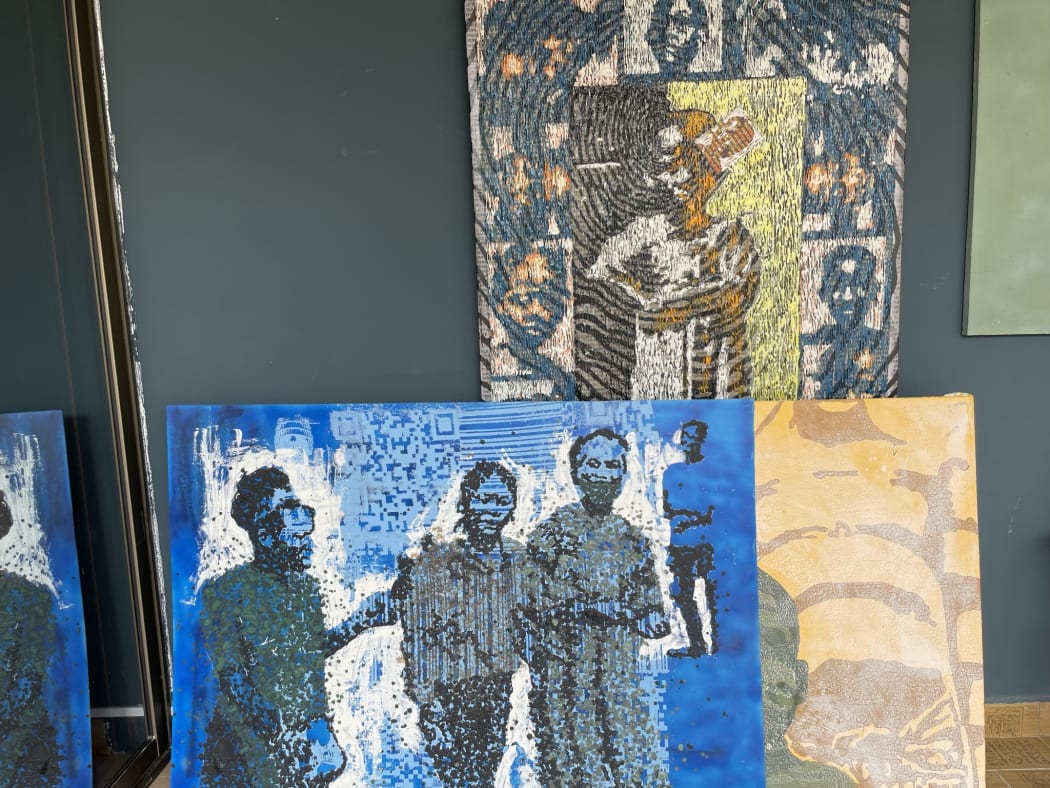 Saint-Etienne Yeanzi's Studio, 2021.
Saint-Etienne Yeanzi's Studio, 2021.Pavillon 54 had the chance to have a chat with Saint-Etienne Yeanzi. born in 1988, he graduated in painting and photography at the “ Lycée d'Enseignement Artistique “of Cocody and the National School of Arts in Abidjan, in 2012.
Yéanzi, a street art enthusiast, worked as a commissioned portrait painter for ten years. Since 2013, he has been pursuing personal work using melt plastic material. As many other African artists, he doesn’t create such pieces with the intention of becoming ‘Environmental’ artists, but rather, he uses the materials around him as a part of his existing culture and makes a more poignant statement about the effects of capitalism, as well as Western colonialism and consumerism on the African continent. Watch the video of the interview.
-
NFTs: What to know and how they can empower the African art market?
Art Market Insights Metarif, a surreal video of 46.5 MB made by mysterious digital artist Pak
Metarif, a surreal video of 46.5 MB made by mysterious digital artist PakIf you’re a lover of art, you have more than likely come across the term ‘NFT’ in the past few months. From the record-breaking sale at Christie’s of Beeple’s artwork Everydays: The First 5000 Days—the first purely digital artwork offered at the esteemed auction house, sold for $69 million—to independent artists raving about the trend, there’s a lot of noise surrounding this notorious topic.The team here at Pavillon54 have compiled some of the most common questions surrounding NFTs, and have provided our clearest, most concise answers. Read on to learn all about this art-world phenomenon that has received so much press coverage in recent months, and why it could be a gamechanger for the African art market.
-
Zaire School of Popular Painting
African Modern and Contemporary Art movements: an insight.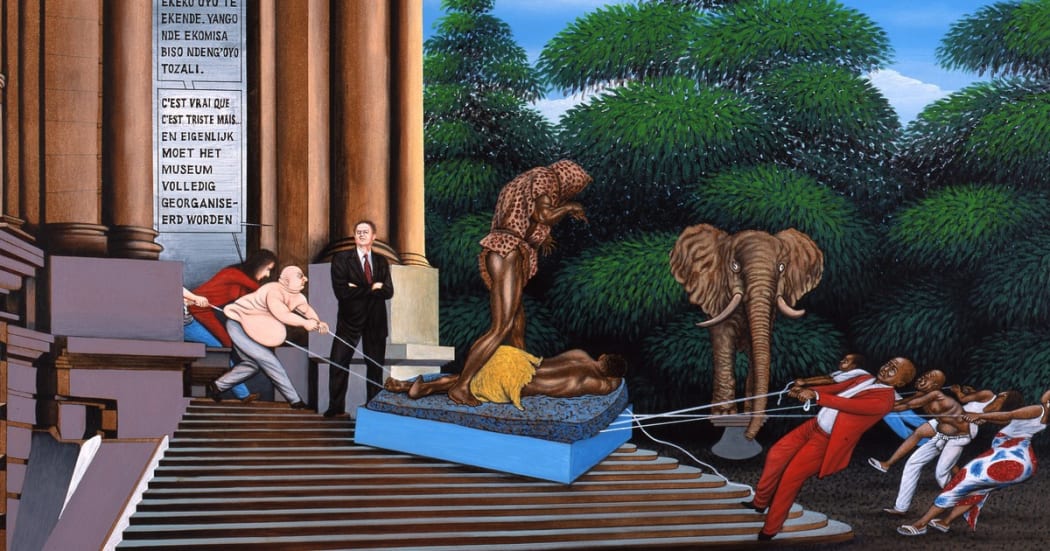 Chéri Samba’s ‘Réorganisation’ (2002), depicting a tug of war on the museum steps © RMCA
Chéri Samba’s ‘Réorganisation’ (2002), depicting a tug of war on the museum steps © RMCAThe influence of colonialism on African art was, for many years, an obstacle to an interpretation of the continent's own history of art. In this series we want to talk about the independent creative expressions framed in each of Africa's national cultures, histories and social-political contexts, with their own styles and artistic movements.
-
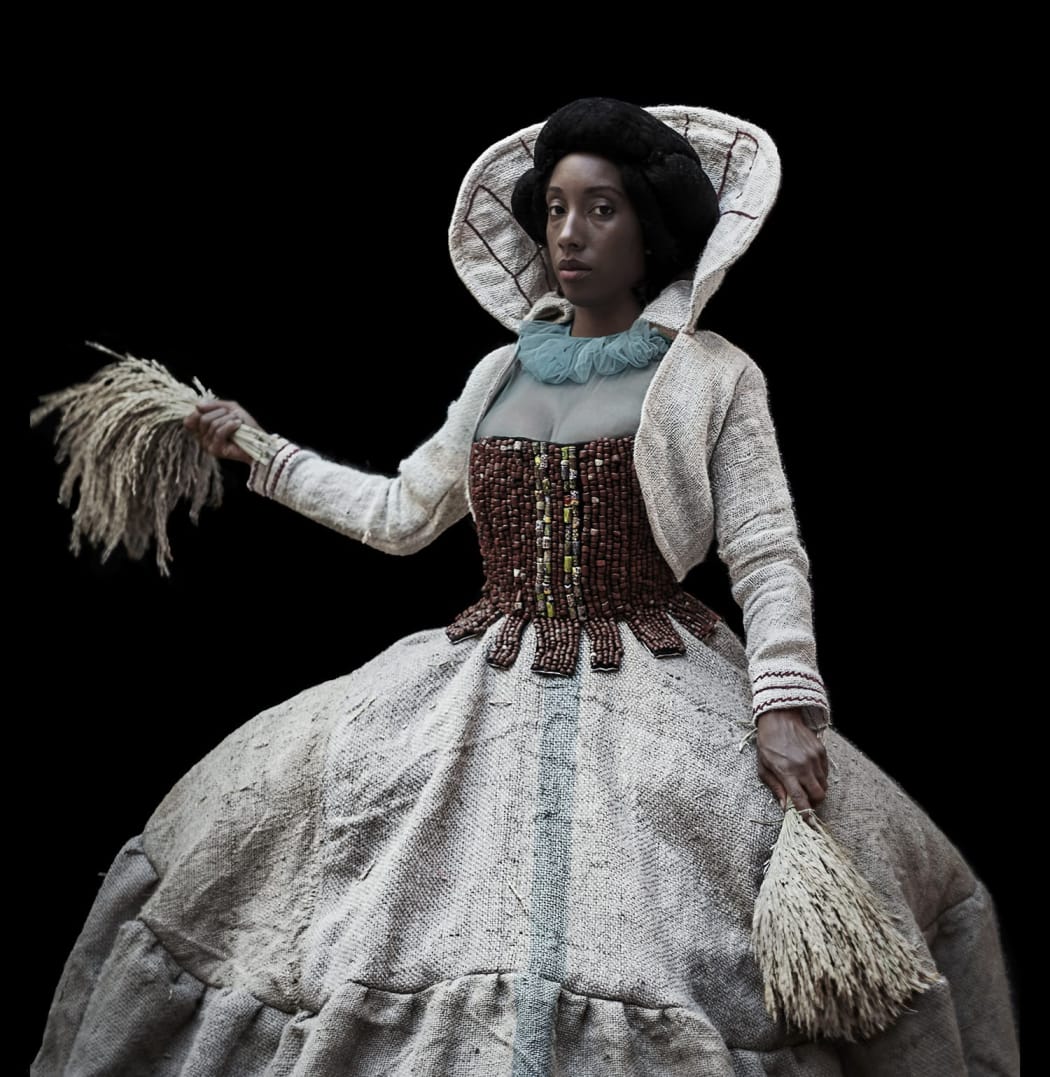 Ayana V. Jackson 'Black Rice' (2019)
Ayana V. Jackson 'Black Rice' (2019)What does the notion of ‘contemporary African art’ refer to today? We have previously published an article on the subject, but now we invite you to consider it from a socio-cultural and collective perspective. What is at stake when we frame or understand contemporary art practices within this concept? Undergoing relevant criticism, this notion still identifies a broad set of practices that have in common their concern to transcend the (danger of a) single story about ‘Africa’ so ingrained in popular culture, and to amend art history canons. Contemporary African art has always been a matter of its time, running parallel with the emancipation drive/calls of a post-colonial generation, refusing to be defined by the weight of the colonial legacy or understood through colonial readings. As such, it is in constant evolution and reflects the hopes and scenarios of a creative community that relates to Africa and its diaspora.
-
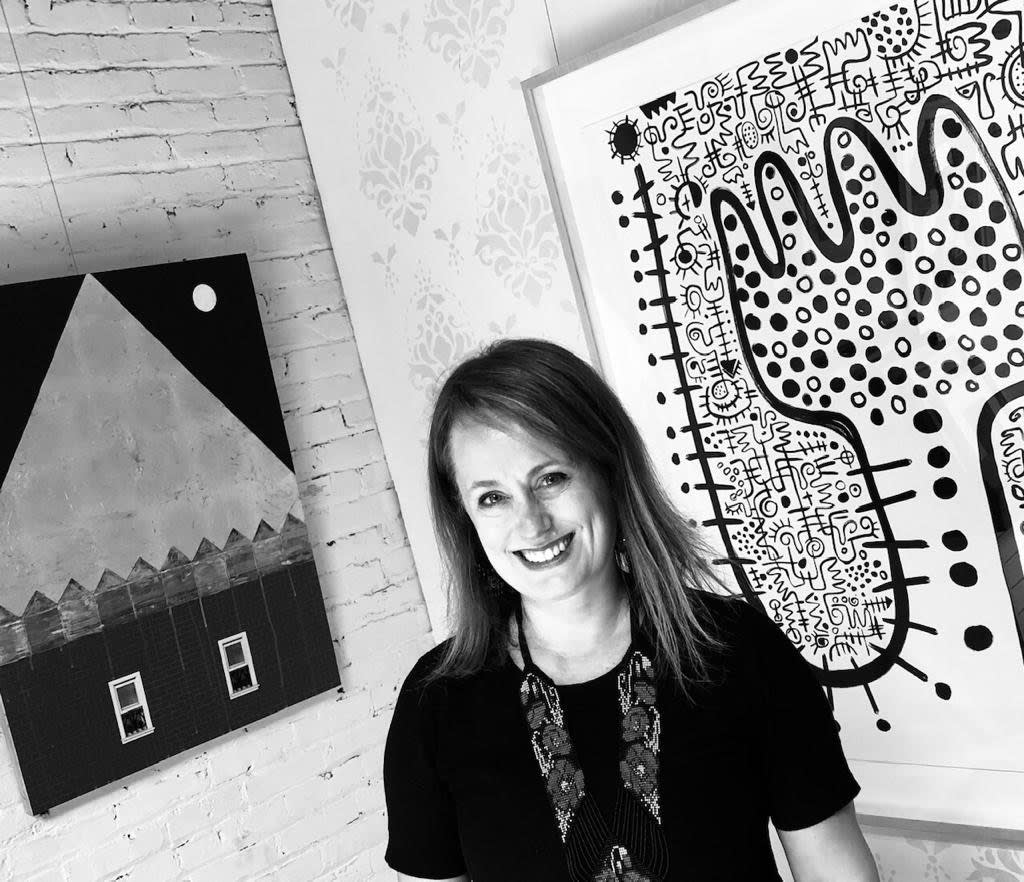 Amy Morton at Morton Fine Art gallery
Amy Morton at Morton Fine Art galleryAs the one-stop global digital platform and community for art from Africa and the Diaspora, Pavillon54 always seeks to enter fruitful partnerships with artists, curators, collectors, and galleries. It became only natural, then, that for the next step of our development, we partnered with some of the most exciting international galleries that specialise in contemporary African art and share our vision for the African art market.
-
Kojo Marfo’s ‘Dreaming of Identity’
artworks to create a connection with people, to be a symbol for everyone to relate to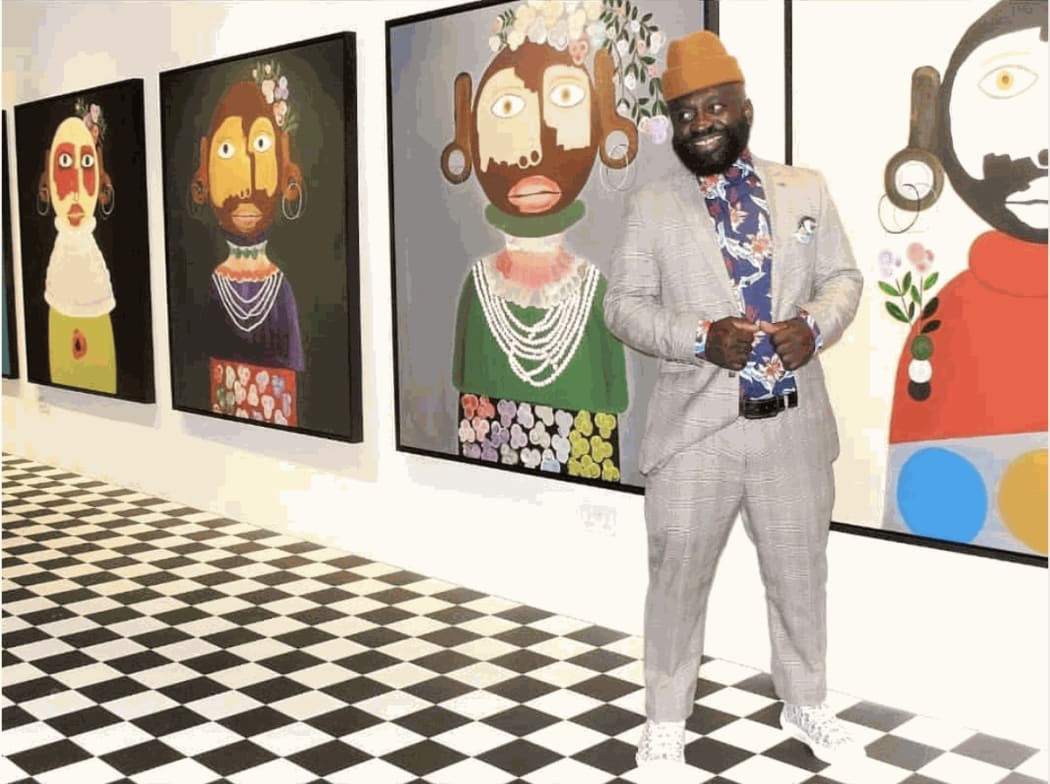 Solo exhibition "Dreaming of Identity' at JD Malat Gallery - from June 10th to July 17th
Solo exhibition "Dreaming of Identity' at JD Malat Gallery - from June 10th to July 17thWith his first solo UK exhibition ‘Dreaming of Identity’ at JD Malat gallery, London, Kojo Marfo (b. 1980) explores the theme of identity through his own experience of migration. The artist depicts human figures with references from Africa, representing his roots in Ghana and Akan’s culture, and from the Western world - representing his travel to New York in the 1990s and his life based in London from 1999.
-
Meet Greatjoy: a “Contemporary expressionist”
Artists' Spotlight Series - Conversation with the artist © Greatjoy in his studio, South-Africa
© Greatjoy in his studio, South-AfricaPavillon 54 had the chance to have a chat with Greatjoy Ndlovu: born in 1993, Greatjoy is a Zimbabwean visual artist living and working in Johannesburg, South Africa. One of the most interesting emerging artists on the South African scene, Greatjoy dynamic paintings are enriched by expressive brush strokes, graphite-drawing and splashes of color. His subject matter is mostly focused on human beings: their bodies, their behaviour, and their emotions. During the past year, Greatjoy explored the impact of the pandemic on our society and created a series of works, displayed on Pavillon 54, focusing on subjects as love, affection and family.
-
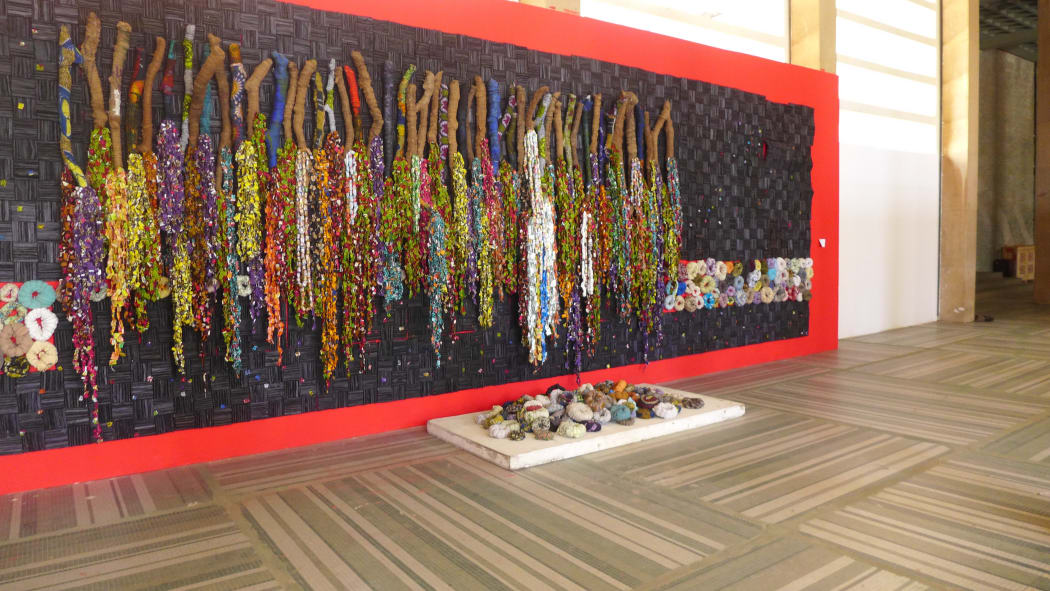 Olanrewaju Tejuoso (Nigeria), Oldies and Goodies, 2016-2018. Installation view, Dak’Art Biennale 2018 “The Red Hour/A New Humanity” curated by Simon Njami. Photo credit: The Sole Adventurer.
Olanrewaju Tejuoso (Nigeria), Oldies and Goodies, 2016-2018. Installation view, Dak’Art Biennale 2018 “The Red Hour/A New Humanity” curated by Simon Njami. Photo credit: The Sole Adventurer.With brighter mobility perspectives looming on the horizon, art lovers are probably looking at possibilities to embark on a trip to noteworthy art manifestations. Biennales, Triennale’s, Encounters, you name it, have constituted an unmissable rendezvous’ for those hungry for new trends and seminal creative processes in contemporary art. When the long-standing and established Venice Biennale has increasingly dedicated pavilions to African countries, continental art events/manifestations have contributed to the actual burgeoning of contemporary African art. Some have long been established, such as the Dak’Art Biennale or Les Rencontres de Bamako, when others are a few years old. They do not subscribe to the logic of country representation – as it is the case for the Venice Biennale – and propose new formats of exhibition and artistic exchange, especially in these times which call for alternative gathering frameworks and display models. These events and their multiplicity contribute to the decentring of legitimizing hubs of contemporary art practices.
-
 Credits: Nil Gallery, Prince Gyasi 'Dreaming With Attitude' (2021)
Credits: Nil Gallery, Prince Gyasi 'Dreaming With Attitude' (2021)New-York hosted two art fairs at the end of spring: Frieze New York & 1-54 New York. With fairs and other arty events progressively reopening their doors to the public – much of the display and outreach still took place online. Online viewing rooms or platforms and talks are your co-hosts of choice. What have been this year highlights
-
7 Established Nigerian Artists You Should Know
Art scene in Nigeria - Country Focus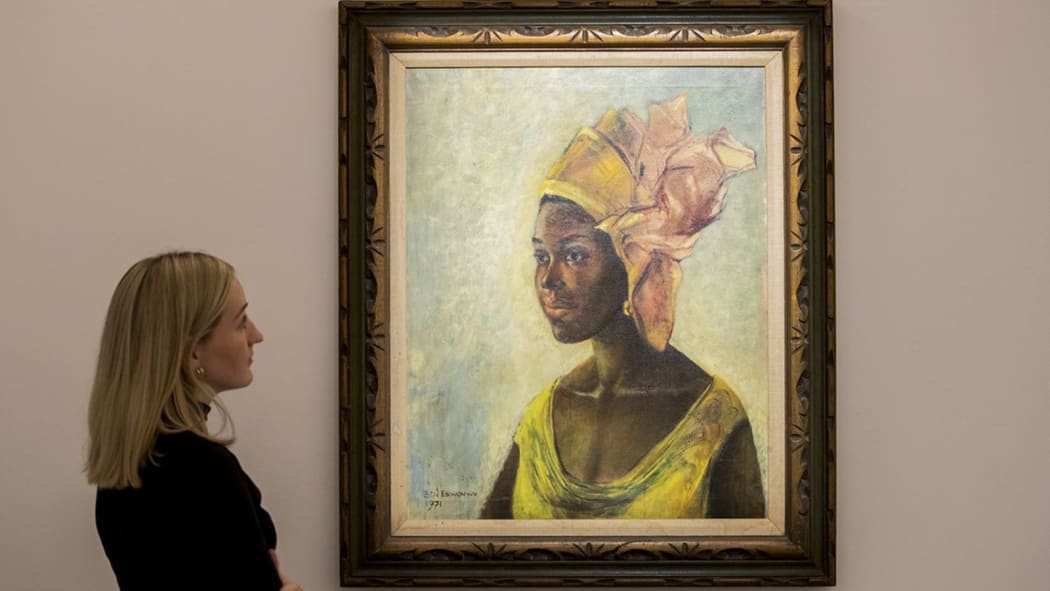 Ben Enwonwu's 'Christine' on view at Sotheby's on October 12, 2019, in London, England. Tristan Fewings/Getty Images for Sotheby's
Ben Enwonwu's 'Christine' on view at Sotheby's on October 12, 2019, in London, England. Tristan Fewings/Getty Images for Sotheby'sTo navigate the history of art of a complex, multifaceted and multicultural continent as Africa, especially if you just got passionate about it, can seem like an overwhelming maze. But no worries, we are here to help you. Follow our series of “Artists you should know or watch” in each country, and you could soon almost sound like an expert!
In the past decade, Nigeria's art scene has gained independence and global recognition and has flourished, leading to a renewed interest in modern and contemporary art in the country. Here we list just 7 of Nigeria's most influential artists that one should know, this list is not exhaustive and could probably include many more artists. But we hope it will inspire you to research more about this lively and booming art scene!
-
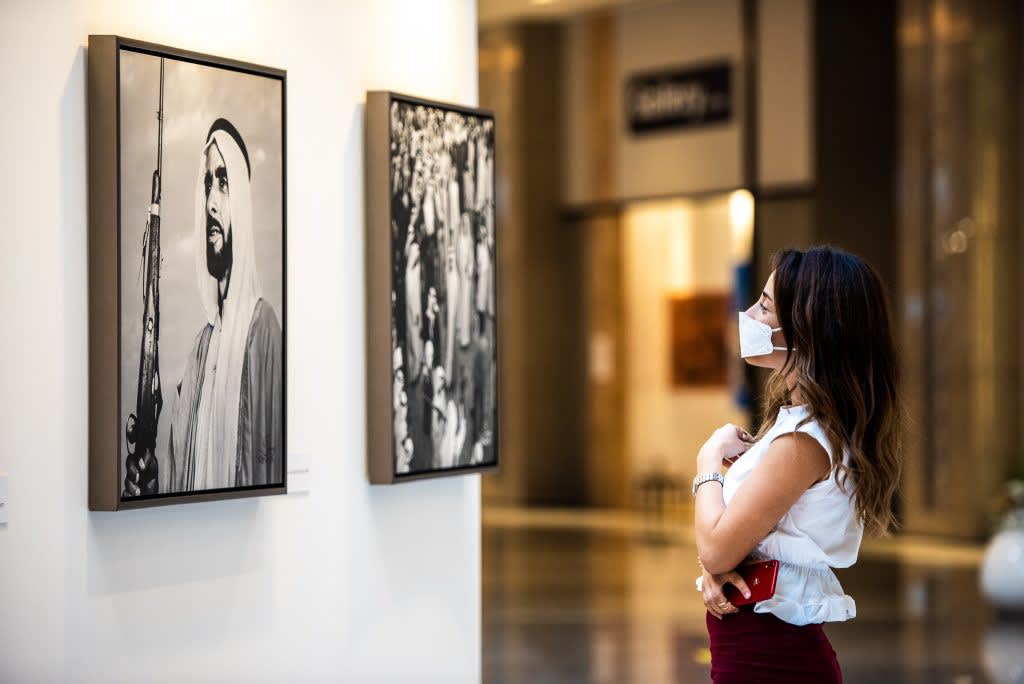 Ramesh Shukla's 50 Years United at Art Dubai 2021, Courtesy of Art Dubai.
Ramesh Shukla's 50 Years United at Art Dubai 2021, Courtesy of Art Dubai.Art world professionals and connoisseurs wait with bated breath for the annual Art Basel x UBS Art Market report each year. This report, one of the most comprehensive in the industry, provides a full assessment of the market’s performance of the previous year, allowing businesses to analyse the current state of the market, and plan accordingly for the years ahead.
But with such an in-depth document, which covers statistics from art dealer sales, auction house performance, art fairs, online sales and more, it can be time-consuming to read the full report and extract the most essential information. We’ve summarised the key takeaways from the Art Market Report 2021, and have also highlighted some of the key impacts on the African art market from the year 2020.
-
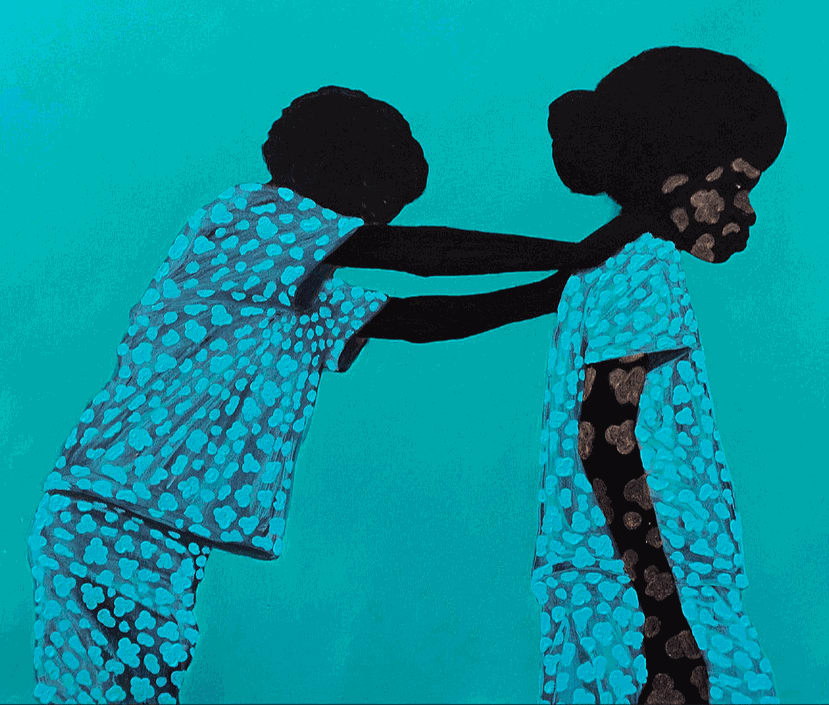 © Wonderbuhle 'Asikafiki', 2020, Acrylic and metallic paint on canvas, 100 x 100 cm
© Wonderbuhle 'Asikafiki', 2020, Acrylic and metallic paint on canvas, 100 x 100 cmThe late exhibition Liminality in Infinite Space held at the African Artists’ Foundation in Lagos has revealed much of contemporary African art’s appeal for figuration and portraiture – catalogue accessible here. The show’s intention seems to be twofold. First, “this exhibition arches back to more traditional art-making practices including painting, collage, tapestry and woodcuts”. Secondly, and from a representation standpoint, “it intentionally moves away from exaggerated depictions of blackness towards sharing moments of vulnerability and unostentatious joy”. It is no surprise at a time in which the black body is subjected to all sorts of gaze, subjugation, aggression or praise.
-
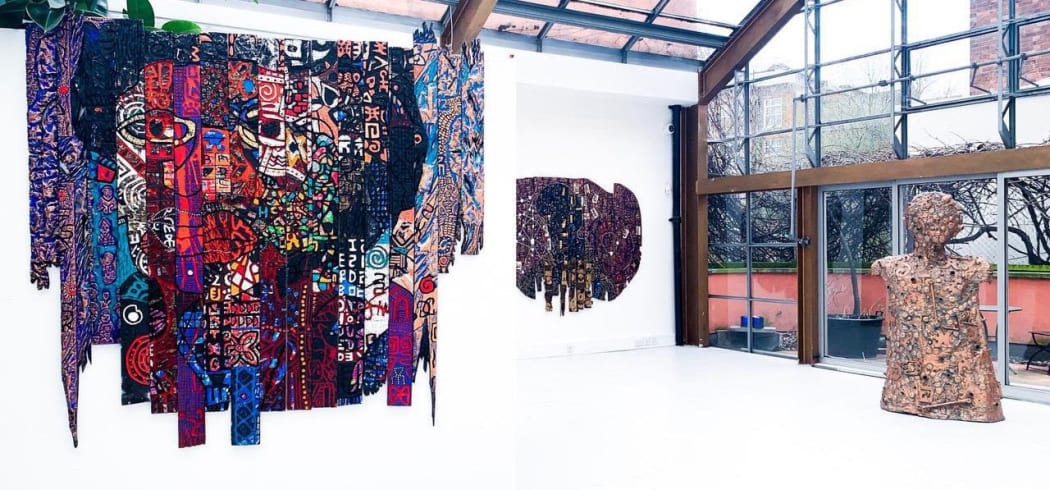 ‘Eclipse of the Scrolls’ at Kristin Hjellegjerde Gallery London © Kristin Hjellegjerde Gallery
‘Eclipse of the Scrolls’ at Kristin Hjellegjerde Gallery London © Kristin Hjellegjerde GalleryIn the UK, everyone is excited to return to galleries this April as the lockdown rules are lifted! Whether you missed these shows in December, want to visit the new exhibitions of the season, or just want to catch up with what's still online, we've got you covered! Check out our list of the not-to-miss Contemporary African Art exhibitions in London.
-
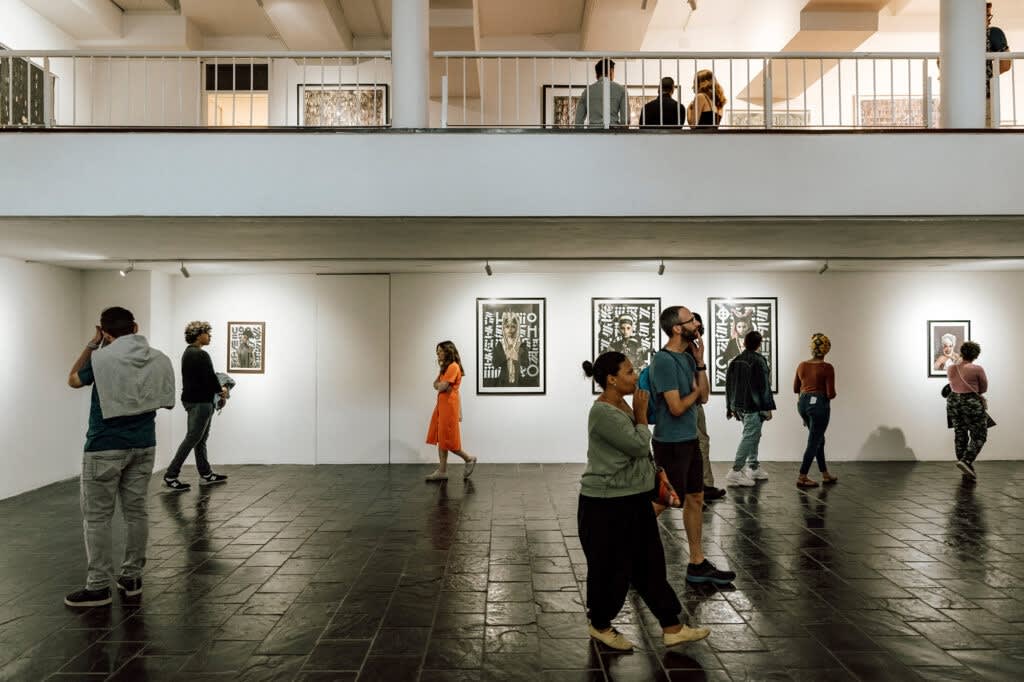 One of the galleries open on First Thursday, downtown Cape Town © travel.sapeople
One of the galleries open on First Thursday, downtown Cape Town © travel.sapeopleOne of Pavillon 54’s favourite things to do is to physically visit and scope out the artistic scene in various countries in Africa. This has been hard to achieve during the pandemic, however we fortunately managed to visit South Africa recently, and have already compiled a list of the 7 emerging artists to watch there. In this next instalment of our series on the art scene in South Africa, we highlight the 7 top art destinations in South Africa that every art lover has to experience.
-
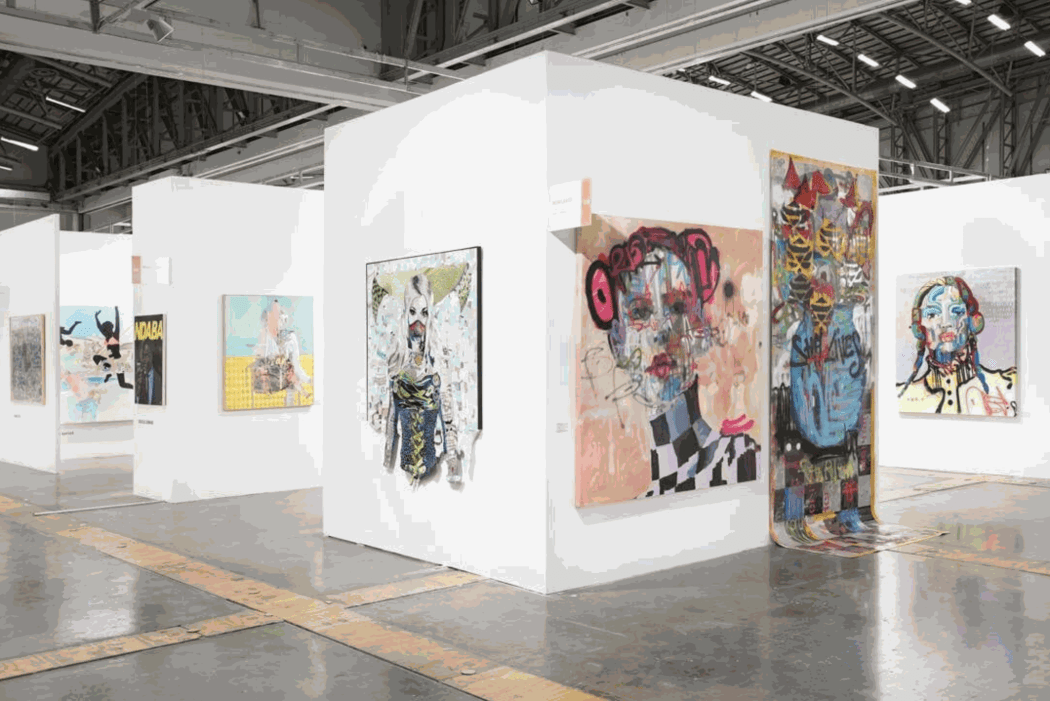 The Investec Cape Town Art Fair 2020
The Investec Cape Town Art Fair 2020 -
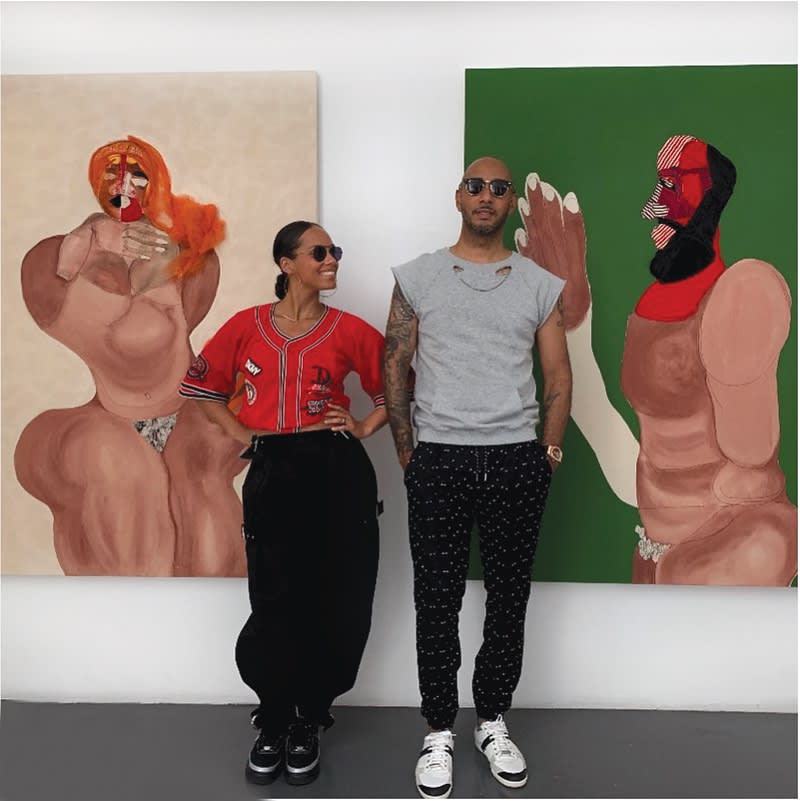 Collectors Alicia Keys and Kasseem “Swizz Beatz” Dean with paintings by Tschabalala Self © SWIZZ BEATZ
Collectors Alicia Keys and Kasseem “Swizz Beatz” Dean with paintings by Tschabalala Self © SWIZZ BEATZYou’ve done your research, selected choice artworks that match your collecting goals and tastes and have officially started your art collection. After you’ve acquired a certain number of paintings, sculptures, photographs, prints - whatever it may be - you may be asking yourself: what is the best way to care for all these artworks?
-
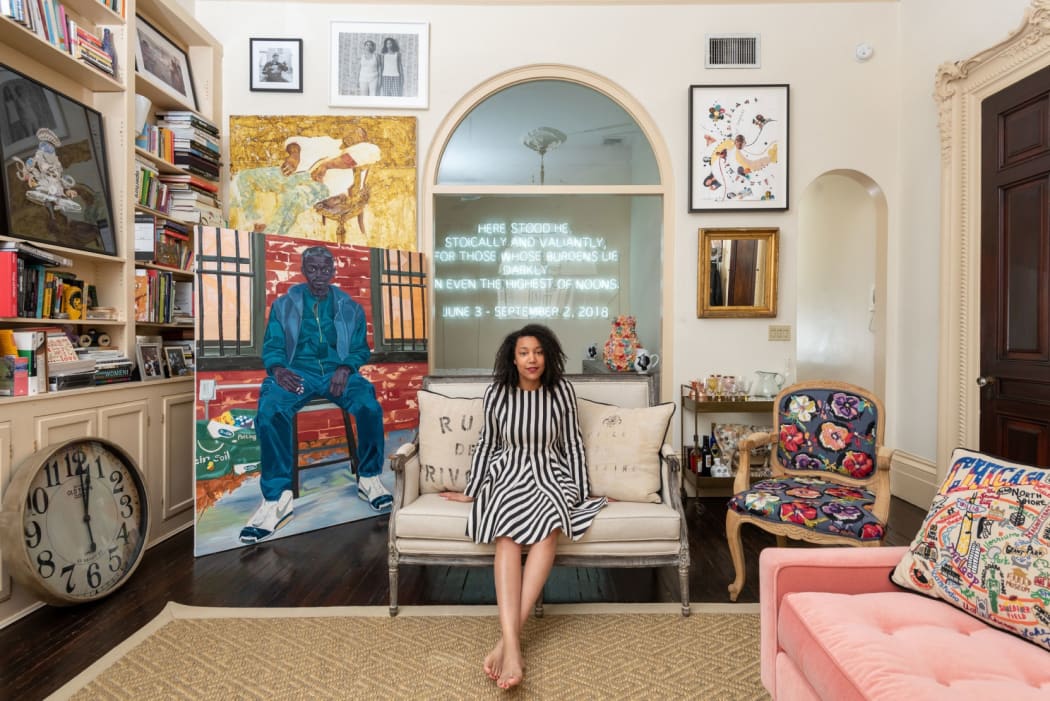 Victoria Rogers for CULTURED MAGAZINE [1] © CHRIS WAGGONER
Victoria Rogers for CULTURED MAGAZINE [1] © CHRIS WAGGONEROne of the biggest misconceptions about collecting art is that you must be very wealthy to do so. However, this is simply not the case, as there are plenty of emerging artists and art markets to invest in at affordable prices. Art from Africa and its diaspora is one such example, as its market is still developing rapidly. Collectors can obtain artworks of great quality and investment value at lower prices, and therefore not only contribute to the growth of an incredible movement of artists, but also add an artwork to their collections that is expected to grow in value.
But diving into the art world and the art market can be a mammoth task. What are the best ways to begin your forays into the art world without breaking the bank, and where can you start? We list some of our top tips for starting an art collection on a budget.
-
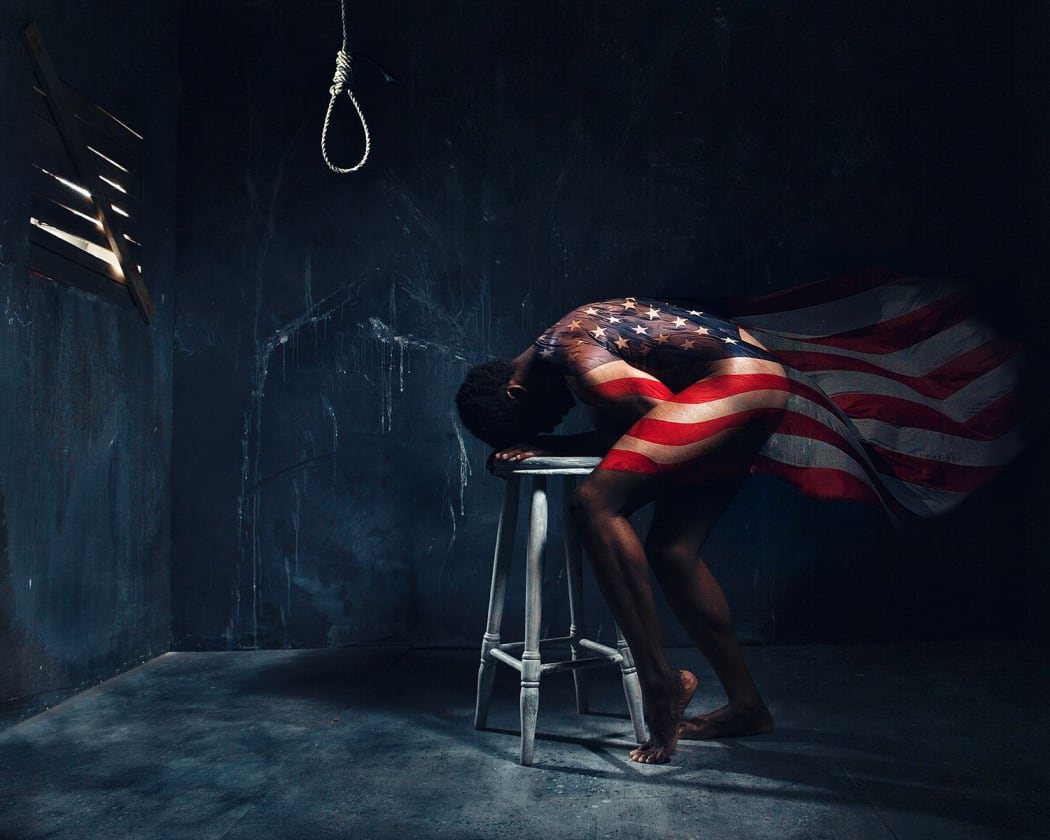 Asiko - A black life
Asiko - A black lifeAfrica and its global diaspora have met the medium of photography in all its complexities. From a colonial and ethnographic tool, photographers such as Malick Sidibé, Seydou Keïta, Jean Depara, Sanlé Sory, Mama Casset or James Barnor embraced the medium along the advent of independence. Often mentioned as the forerunners of African photography – one should be cautious with such statement – they have produced a distinctive body of work – black-and-white photos, staged portraits, documenting style. The enthusiasm proper to the period of independences with its promises of social and individual emancipation stands out of this body of work. The popularity of photography on the continent came with the accessibility to the medium and to an array of modern commodities. Those forerunners speak to a specific moment in time and in a given context – West & Central Africa in this case.
-
Art Styles
An Introduction to Popular African Art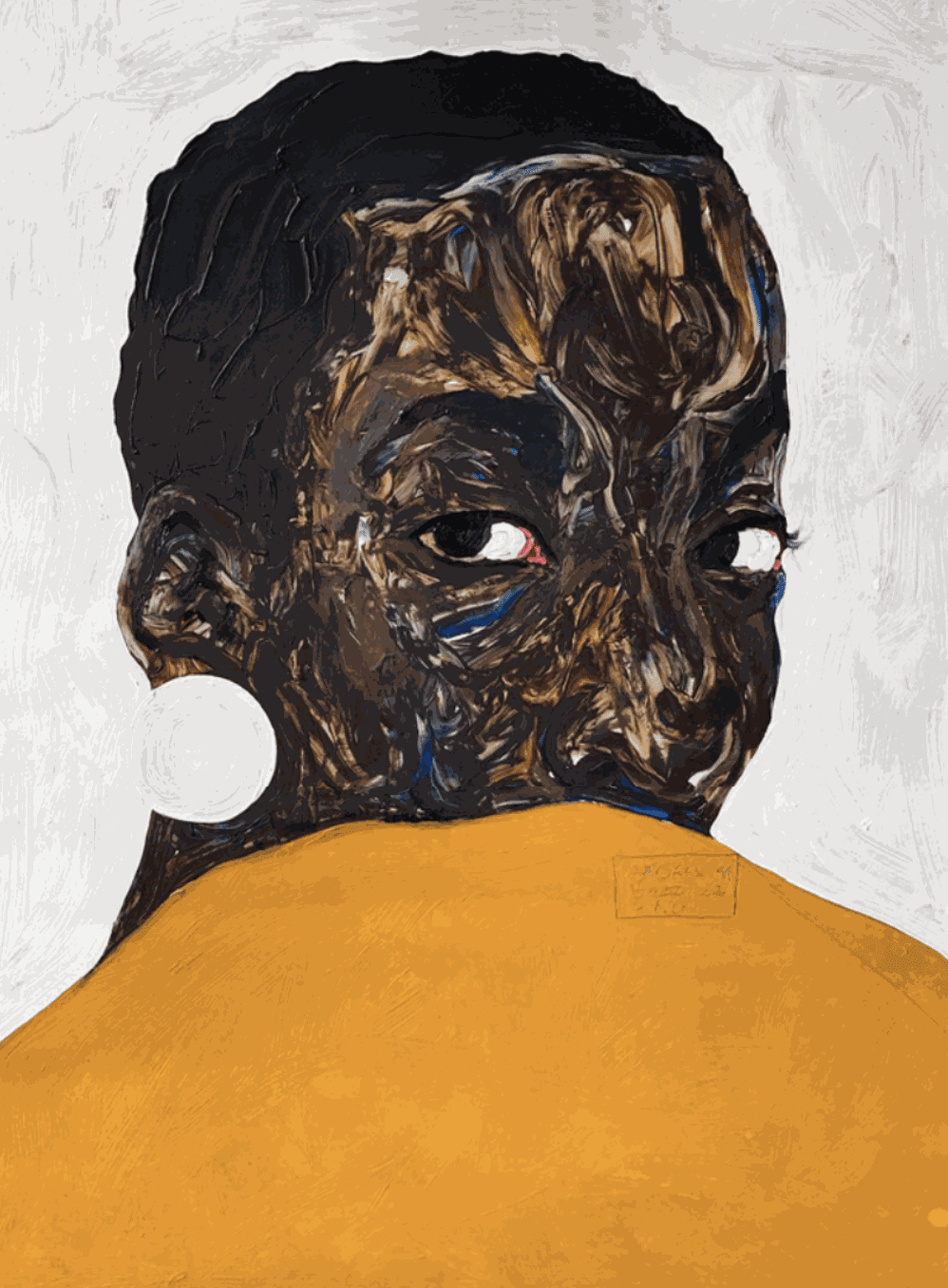 Amoako Boafo's Aurore Iradukunda, 2020
Amoako Boafo's Aurore Iradukunda, 2020Art historians and artists of African descent have long highlighted the platitudes of the term ‘African art’. Typically, in the canon of art history, African art has been reduced to masks, votive figures, weapons or tapestries. However, curators, African art historians, and creators have been fighting against this one-dimensional view of African cultural output, in the aims of presenting a diverse and rich African arts scene, as variegated and unique as there are as many countries on the continent.
Here at Pavillon54, one of our main missions is also to educate and promote the incredible assortment of artistic styles and techniques that can be found in modern and contemporary African art. We’ve highlighted seven popular art styles that are worldwide and universal, already well-integrated in the art historical canon, but here we are presenting it with a unique African twist. How have modern and contemporary African artists contributed to these popular artistic movements, and who are the key players? Read on to discover more!
-
Art & Power: art creativity and politics from Africa and the diaspora
A Brief Insight into Reflections of Power, Protest & Leadership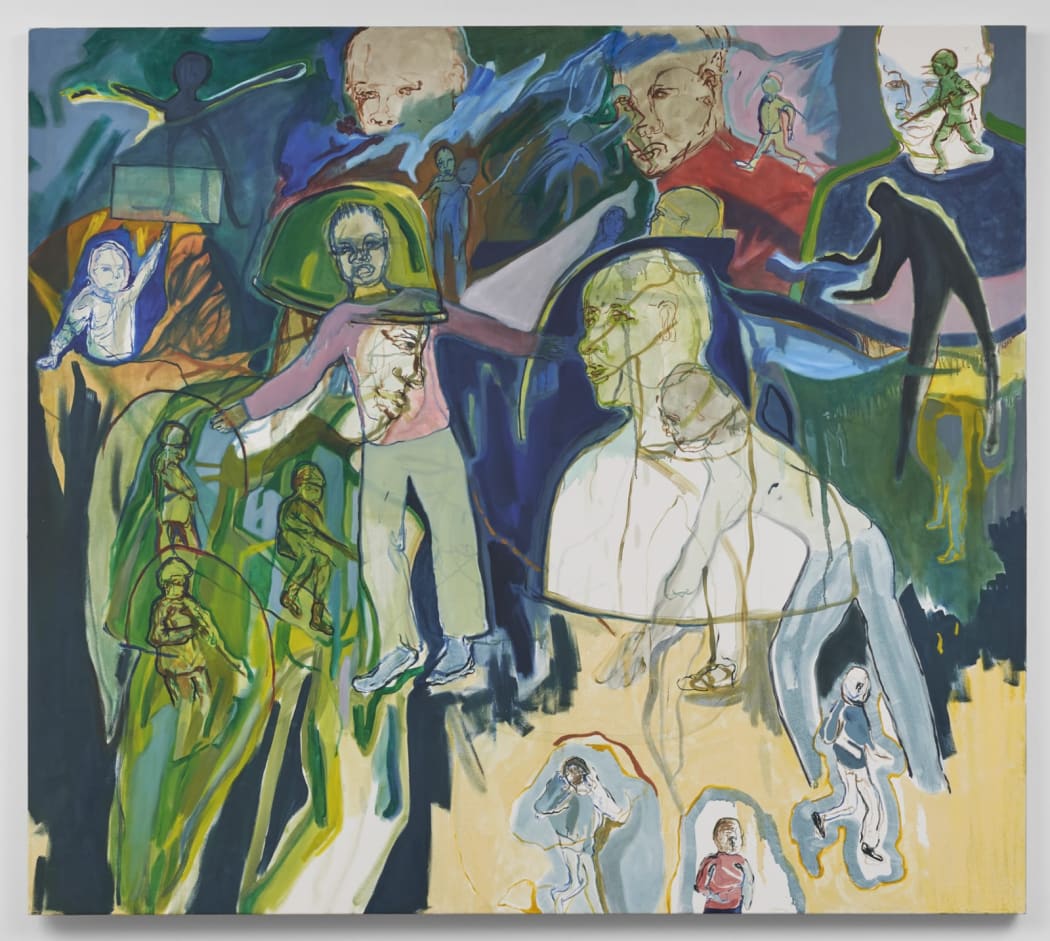 Chemutai Ng'ok's An Ultimatum, 2019 © Ben Westoboy
Chemutai Ng'ok's An Ultimatum, 2019 © Ben WestoboyElections always raise hope for political change. October and November 2020 have made no exception, not mentioning the recent military coup and the progressive return to civilian rule in Mali. Guinea, Ivory Coast, Tanzania or the United States have all elected a new President or reappointed the outgoing one. Guinea hasn’t experienced much political stability since its independence. In Ivory Coast, Alassane Ouattara is about to secure an unprecedented third term as president since the adoption of the third constitution in 2000, "a sacrifice" in his words¹. The presidential mandate of John Magufuli's has been renewed for a second five-year term after Tanzanian elections marked by increased security and the arrestation of opposition leaders. These political transitions often imply a prologue and an aftermath in which the population lets its preferences and reaction heard, and in which (future) appointed leaders assume responsibility.
-
 The 99 Series, Part 7, 2013 © Aida Muluneh
The 99 Series, Part 7, 2013 © Aida MulunehThe term ‘print’ can often give the impression of a cheap, mass-produced printed piece of paper that doesn’t have much value. However, did you know that some of the most expensive prints by Edvard Munch and Pablo Picasso have exceeded a value of millions of pounds? This misunderstood medium has great value in the art market, but when you begin to collect photography or artist prints, there is essential information that should be kept in mind, in order to understand the long-term value of the artwork. There is a lot of specific terminology and factors that may be encountered when trying to acquire such a work, such as ‘limited edition’, an extension to an edition, the number of works in the series, and what this can mean for the value of these prints. Here at Pavillon54, we represent some incredible African photographers and work only with limited edition prints. So, what does this mean for a collector when acquiring a limited-edition print via Pavillon54?
-
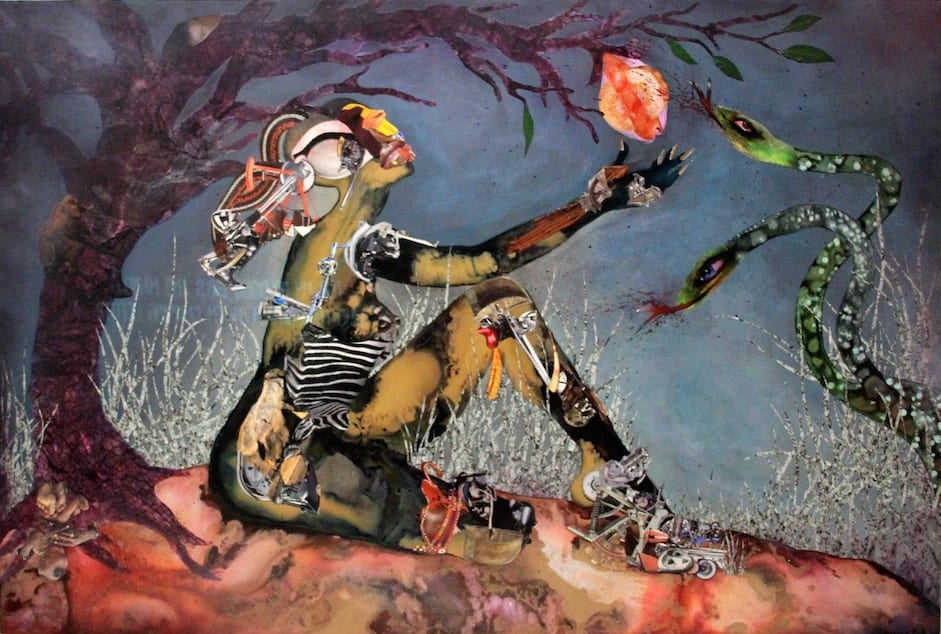 Wangechi Muti, Forbidden Fruit Picker (2015)
Wangechi Muti, Forbidden Fruit Picker (2015)Take a look at our list of the ten most expensive African artists to date, and you’ll see that women take up a significant proportion of the cut—even taking the top place! Unlike in the Western contemporary art market, top female African artists often see great success and prominence in their careers, on par with their male counterparts. In this article, we break down which seven female African contemporary artists are stealing the show, and the ones you should keep an eye on.
-
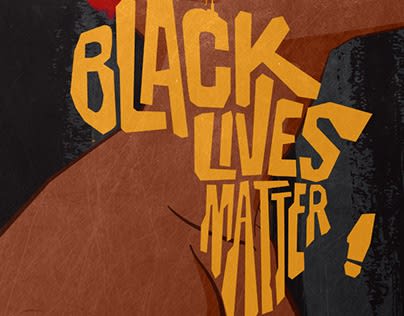 © Liam Booysen
© Liam BooysenThough the Black Lives Matter movement is by no means a new initiative, the outrage and consequent protests that ensued after the murder of George Floyd earlier this year have resulted in a common expectation for brands, museums, institutions, and other businesses to respond and act. Most likely, all of us have seen some kind of news article or social media post about this issue, but how has the Black Lives Matter movement affected the arts, and more specifically the African art scene?
-
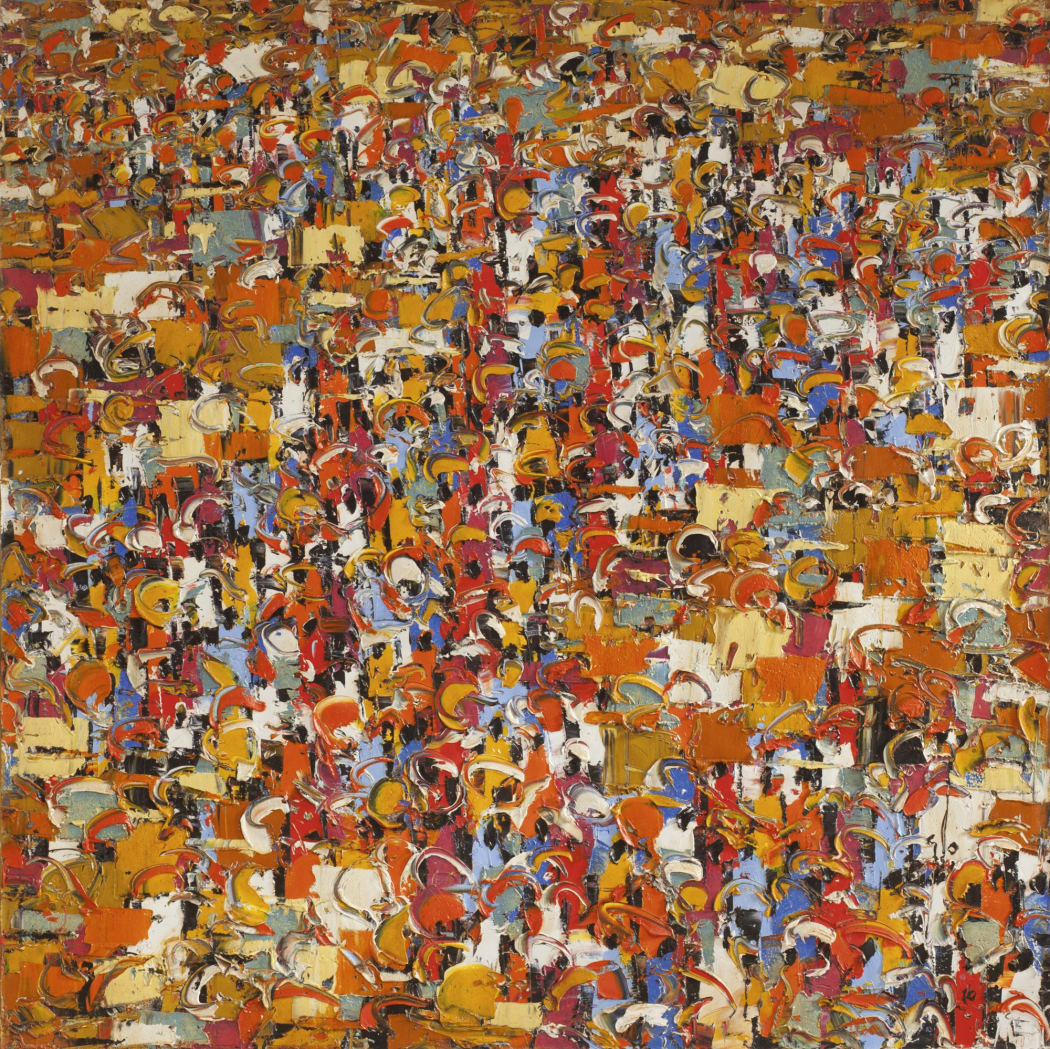 Ablade Glover's Ghanaian Market Intrigue (2010), oil on canvas, 122 x 122cm
Ablade Glover's Ghanaian Market Intrigue (2010), oil on canvas, 122 x 122cmRead any article on African Contemporary Art, and you will find that most all will steer away from defining what exactly African contemporary art is—and with good reason. With fifty-four countries and cultures making up the continent of Africa, it is almost impossible to pin-point what ‘African’ art looks like, let alone bracket the time period for when contemporary African art began.
-
Why Pavillon 54?
A word from Dana Endundo Ferreira, Founder of Pavillon 54, about building the global technology platform for African creativity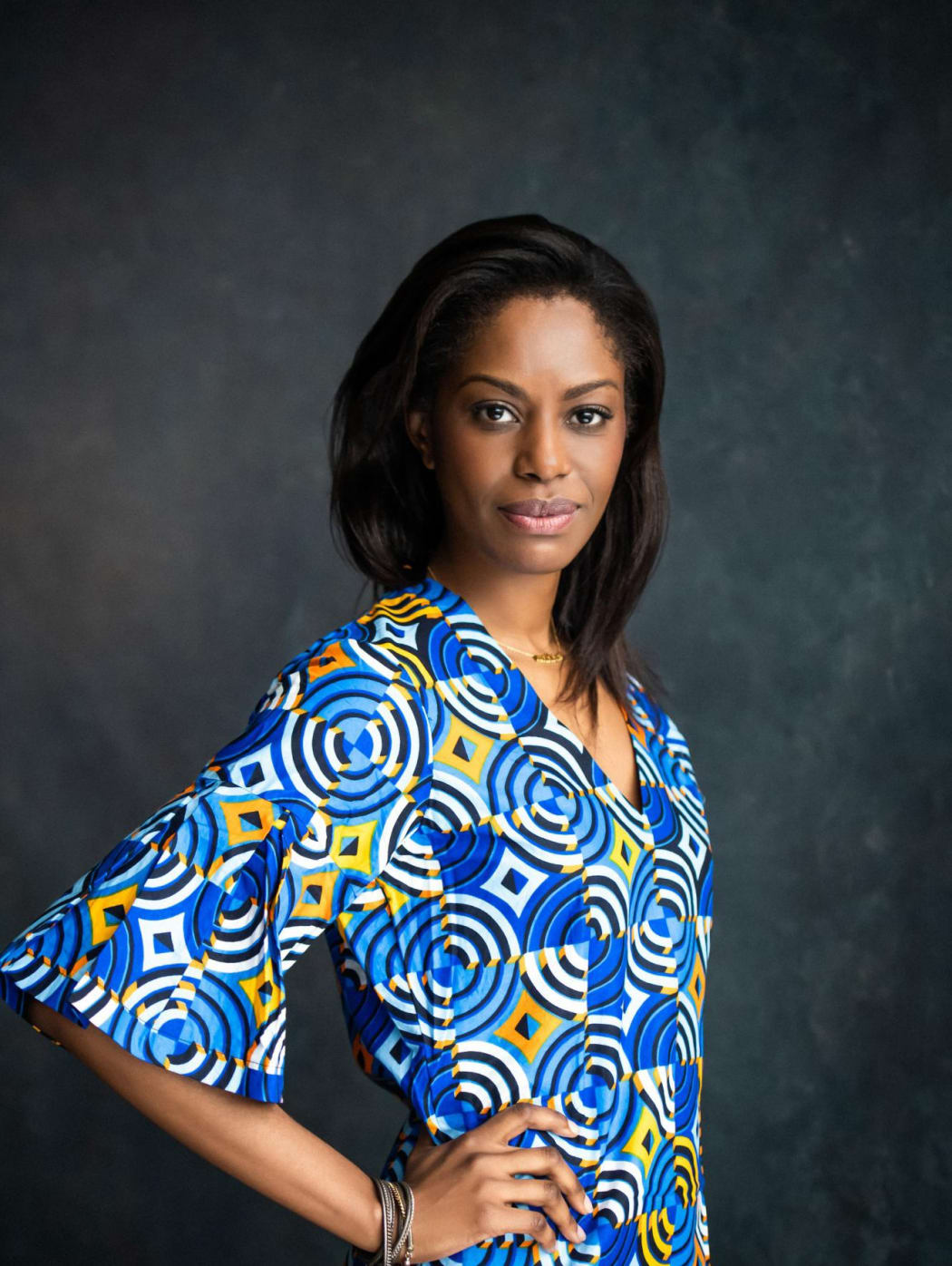 Dana Endundo Ferreira, CEO & Founder @ Pavillon54
Dana Endundo Ferreira, CEO & Founder @ Pavillon54A word from Dana Endundo Ferreira, Founder of Pavillon 54, about building the global technology platform for African creativity
-
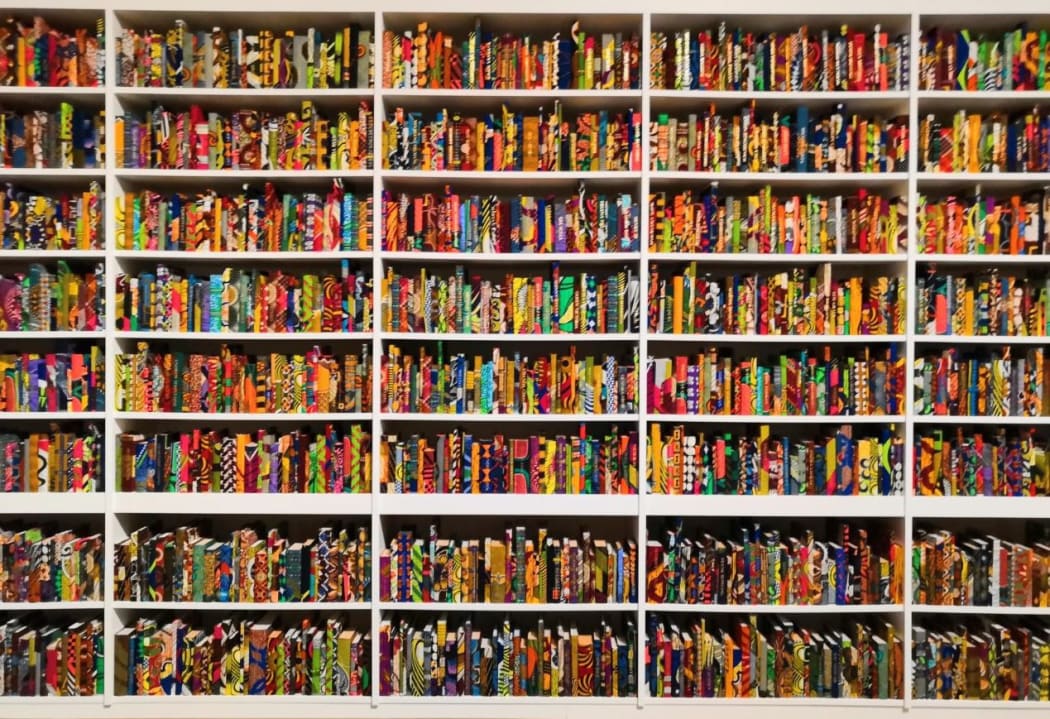 Yinka Shonibare CBE, The British Library 2014 (detail) | © Tate
Yinka Shonibare CBE, The British Library 2014 (detail) | © TateAs auction houses establish sales dedicated to African modern and contemporary art, galleries look to diversify their rosters of artists, and the African art market continues to grow, it is important to take note of which artworks and artists are performing well. This is especially true if you are hoping to make an investment in African art. Below, we have compiled the top 10 most expensive African artists to date, highlighting which works landed them the record-breaking position, and why.
-
El Anatsui
Of Bonds and Bottle Caps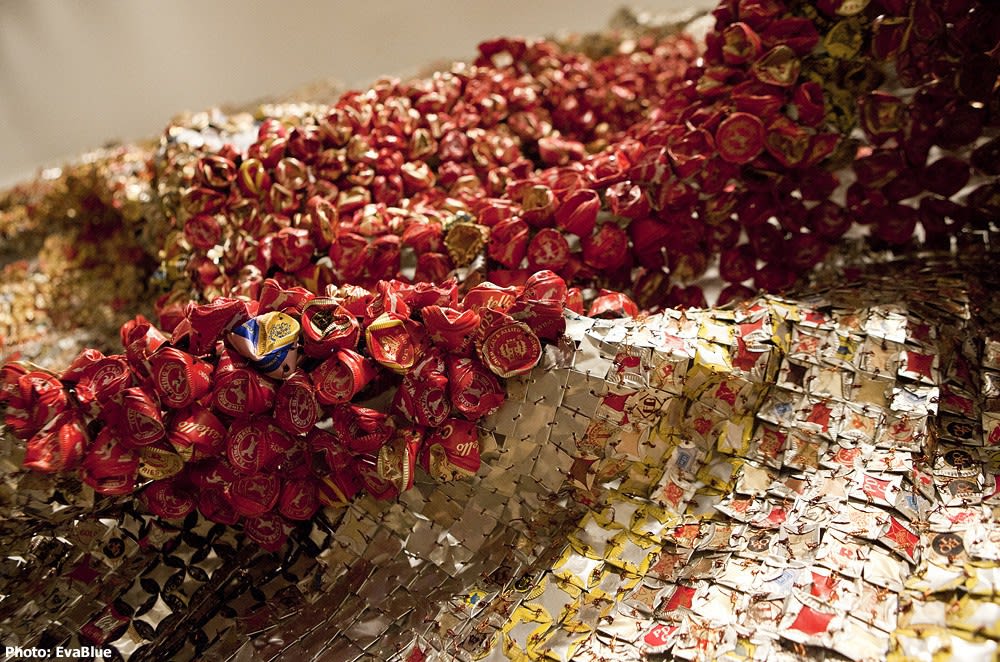 El Anatsui's Gravity and Grace Monumental Works (2009), Brooklyn Museum | © Eva Blue-Flickr.jpg
El Anatsui's Gravity and Grace Monumental Works (2009), Brooklyn Museum | © Eva Blue-Flickr.jpgAs you descend the steps into the British Museum’s ‘Africa’ wing, you are immediately confronted by a sculpture, large in scale, that resembles a swathe of draped cloth—except the piece is made from bottle tops and discarded wrappers. It is ‘Man’s Cloth’ by El Anatsui, a piece made in his distinctive wall sculpture style. So it is that this Ghanaian contemporary artist cemented himself within African Art History in the eyes of one of the Western world’s most prominent public institutions.
-
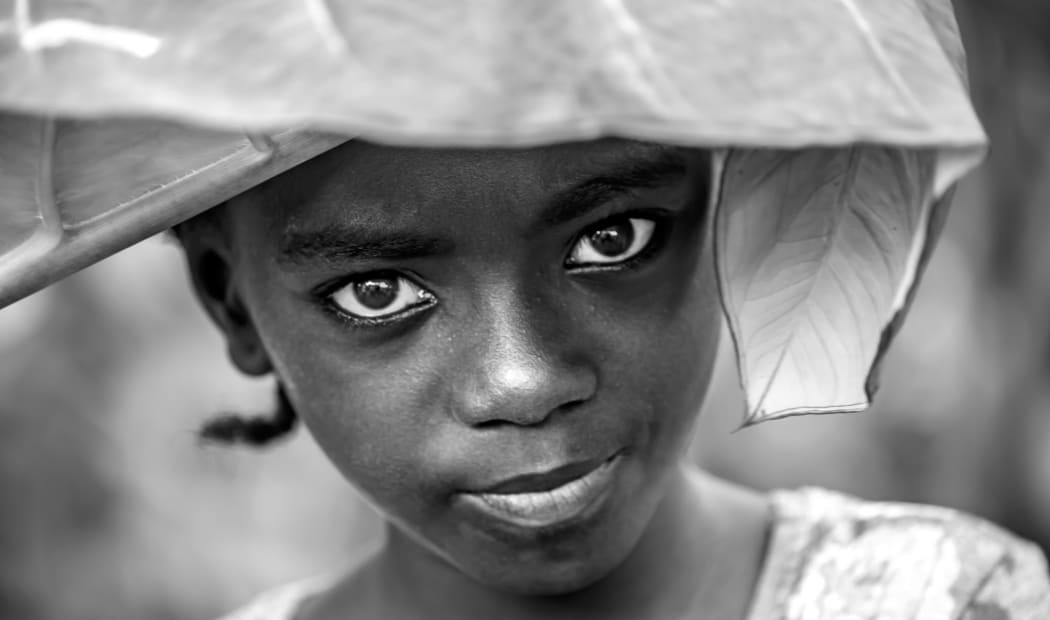 Veronica Alves dos Santos's Confidence - Ethiopia (2018), print on cotton paper, 30 x 50 cm
Veronica Alves dos Santos's Confidence - Ethiopia (2018), print on cotton paper, 30 x 50 cmAre you a collector, looking to invest in the African art market? Or perhaps you are an artist, wondering where your own work fits within the scope of contemporary African art. Maybe you’re a student, researcher, or even just a fan. No matter who you are, African art spans a whole range of countries, cultures and historical periods, and it can often be challenging to start talking about African modern and contemporary art. With so much information out there, how can you even begin your quest? Here are some simple pointers to get you started.
-
Inspired by Africa: Henri Matisse
Series: Inspired by Africa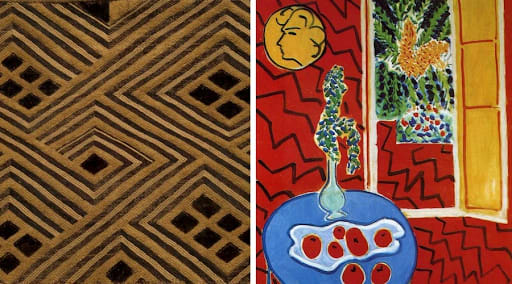 Left: Kuba Cloth from Matisse’s Collection, artist unknown. Right: Matisse's Red Interior still life on a blue table (1942)
Left: Kuba Cloth from Matisse’s Collection, artist unknown. Right: Matisse's Red Interior still life on a blue table (1942)The influences of African art on various artists and movements throughout history recount fascinating stories of cultural exchange, theft, homage and colonialism. In this series of articles, Inspired by Africa, we assess the ways that some of the most famous artists in the world borrowed from African art to create some of their masterpieces. For the third installation of this series, we survey the works of Henri Matisse, and the African countries he took inspiration from.
-
Inspired by Africa: Pablo Picasso
Series: Inspired by Africa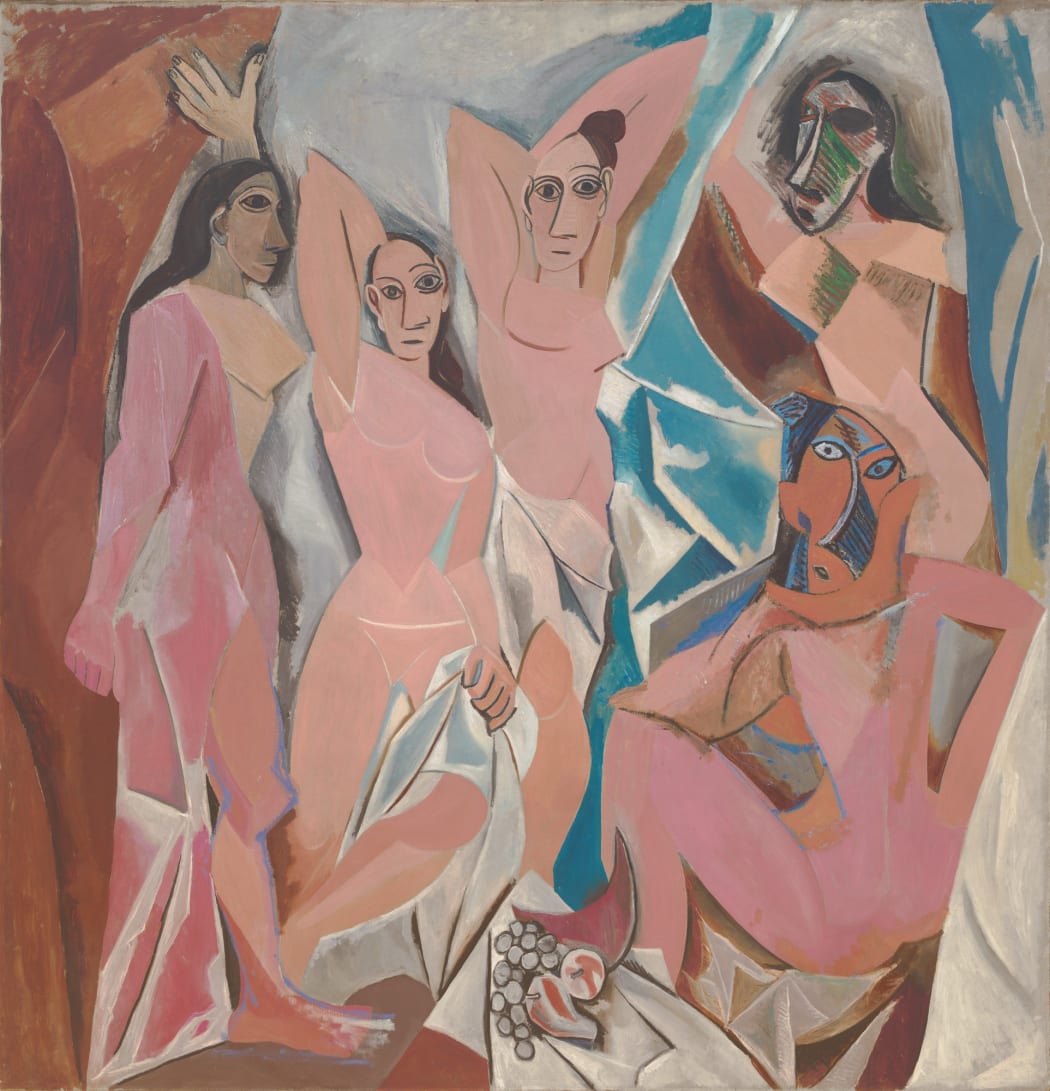 Pablo Picasso's Les Demoiselles d'Avignon (1907), oil on canvas, 243.9 cm × 233.7 cm
Pablo Picasso's Les Demoiselles d'Avignon (1907), oil on canvas, 243.9 cm × 233.7 cmThe influences of African art on various artists and movements throughout history recount fascinating stories of cultural exchange, theft, homage and colonialism. In this series of articles, Inspired by Africa, we assess the ways that some of the most famous artists in the world borrowed from African art to create some of their masterpieces. First and foremost, we visit the works of perhaps the most acclaimed artist of the modern era: Pablo Picasso.
-
Inspired by Africa: Jean-Michel Basquiat
Series: Inspired by Africa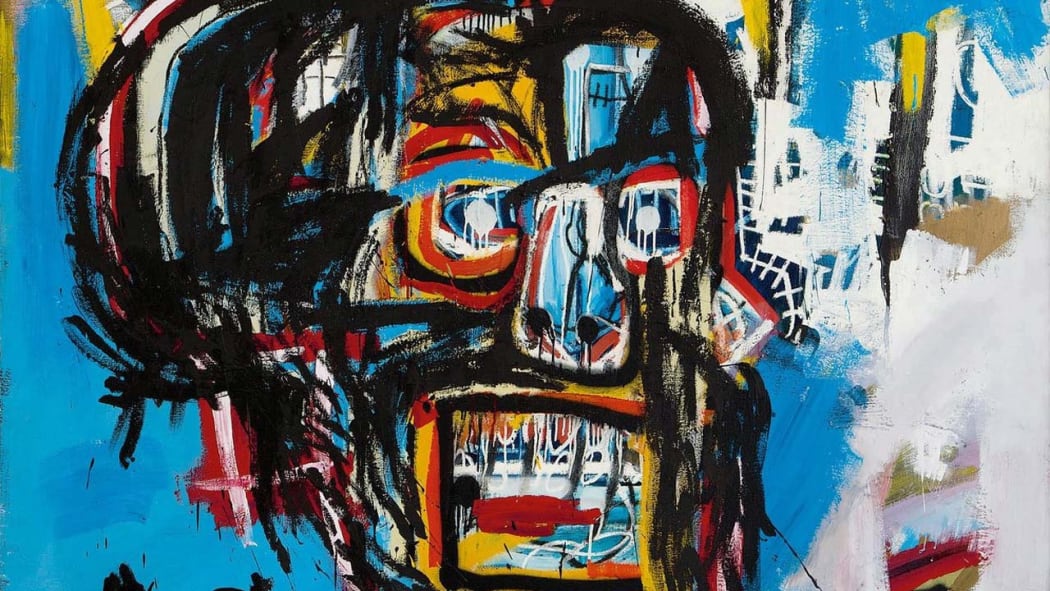 Jean-Michel Basquiat's Untitled (1982), work in oil stick, acrylic and spray paint
Jean-Michel Basquiat's Untitled (1982), work in oil stick, acrylic and spray paintThe influences of African art on various artists and movements throughout history recount fascinating stories of cultural exchange, theft, homage and colonialism. In this series of articles, Inspired by Africa, we assess the ways that some of the most famous artists in the world borrowed from African art to create some of their masterpieces. For this second exploration, we examine how adored New York artist Jean Michel-Basquiat searched his roots to battle racism and create his unique artistic vision.
-
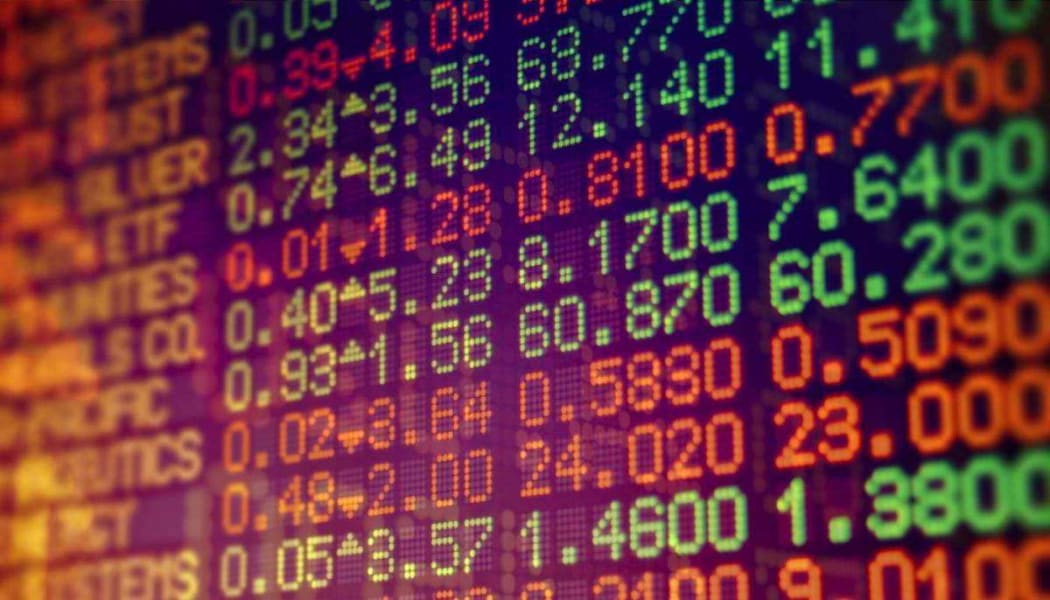
It is undeniable: online art sales continue to grow. According to the ‘Hiscox online art trade report 2018’, the amount of art bought online has shown consistent growth over the past five years, although admittedly the rate of growth has decreased. This consistent increase in the online art market demonstrates that digital means of buying and selling art are becoming more prolific, thereby opening new modes of buying and selling to different demographics and countries, such as the growing wealthy class in Africa. However, the lull in the rate of growth reveals some reservations about the uncertain future of the online art market. This can largely be attributed to a recent surge of debate surrounding new modes of technology being introduced into the art industry, and the disagreement about what could result. Amongst these new technologies, blockchain appears to be the most divisive by far.
-
What to know when buying art?
5 Questions to Ask Yourself when Buying Art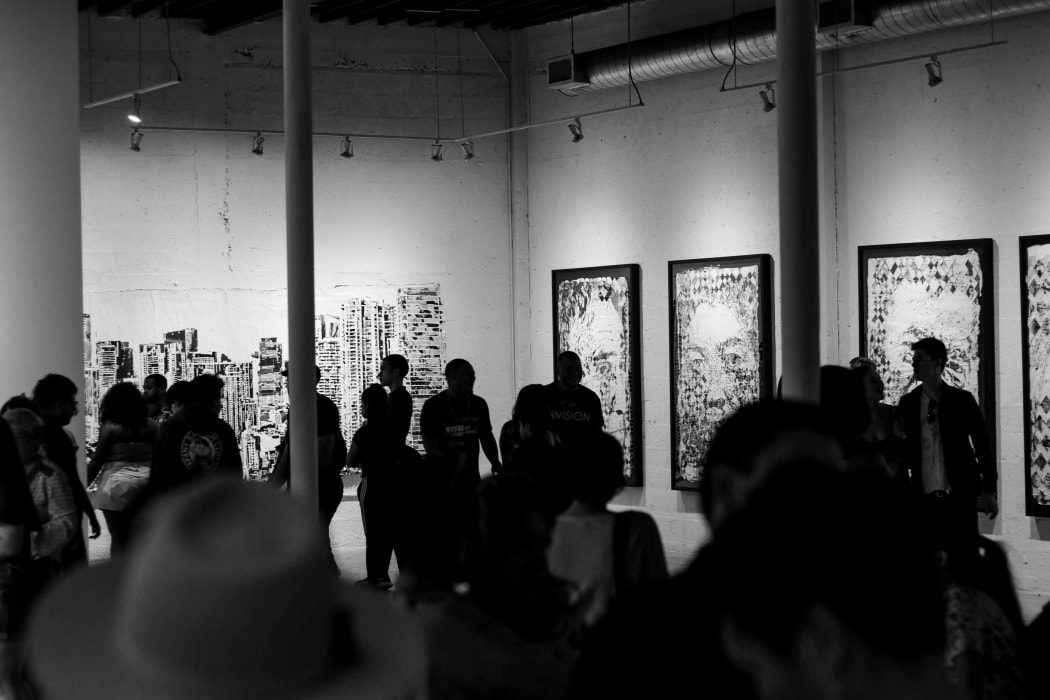
The possibilities of buying art grow ever more abundant. Indeed, these days, the dual-swoop of new, innovative digital art galleries and the increasing trend in the wealthy investing in art means that the art market is booming, particularly online. Among those using online platforms are wealthy millennials, many of whom are first-time buyers. If you count yourself among those who are interested in acquiring art for the first time, there are a few important questions to ask yourself before you make that big purchase. Below we’ve listed what to know when buying art, including some of the most important factors to consider.
-
 © Getty Images
© Getty ImagesIt is undeniable: online art sales continue to grow. According to the ‘Hiscox online art trade report 2018’, the amount of art bought online has shown consistent growth over the past five years. In addition to this, 79% of young art buyers (under the age of 35) expressed that they use social media, especially Instagram, to discover new artists, and 32% of buyers said that social media had a significant impact in their decision to purchase art. This consistent increase in online methods of scouting the art market demonstrates that purchasing art digitally is becoming more prolific. Artech start-ups pioneered the way for making means of buying and selling art online easier and more convenient than ever, however we are also seeing traditional art institutions incorporate online methods of buying art. Regardless of whether one prefers to go with young, innovating start-up companies, or massive auction houses with decades of legacy, therefore, it is irrefutable that art e-commerce is a crucial facet of the future of the art market. Here are three benefits of buying art online that have spurred on this revolution.
-
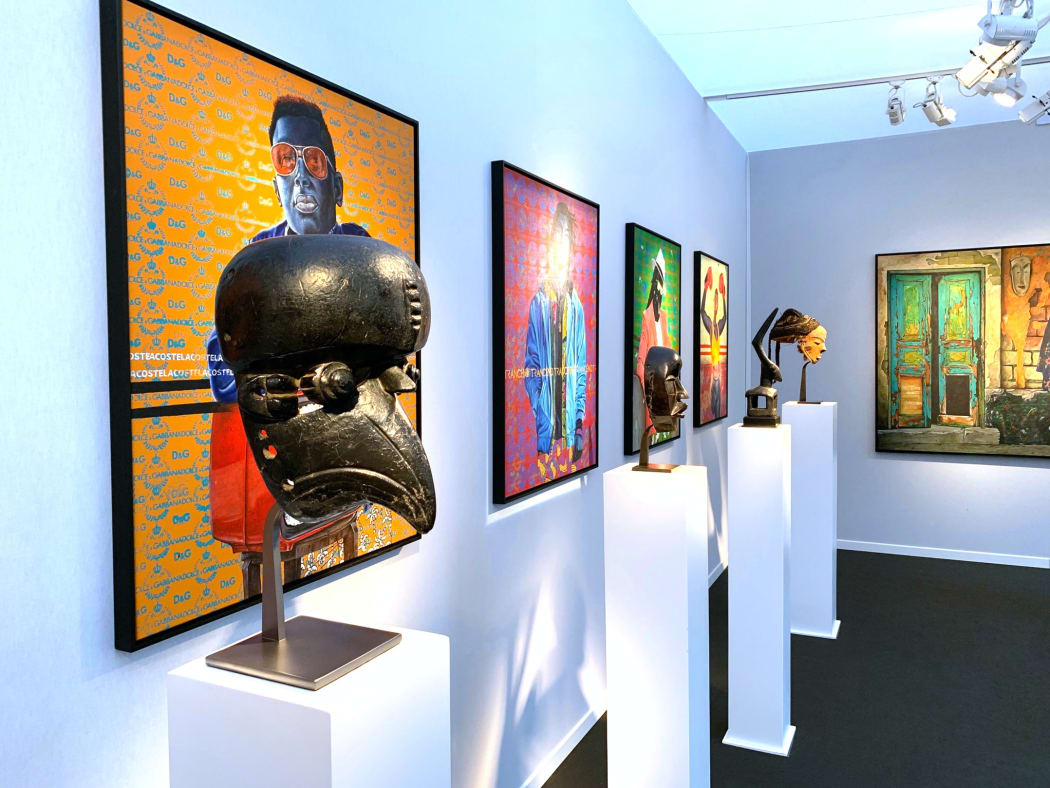 Didier Claes booth, AKAA Art Fair, Paris, November 2019
Didier Claes booth, AKAA Art Fair, Paris, November 2019For all the talk of the ‘African Art Boom’ in recent years, it isn’t always evident why is African contemporary art trending and what this boom entails, how it came to be, or what the future of the African art market is.
-
Yinka Shonibare, CBE (RA)
A Foot in Two Continents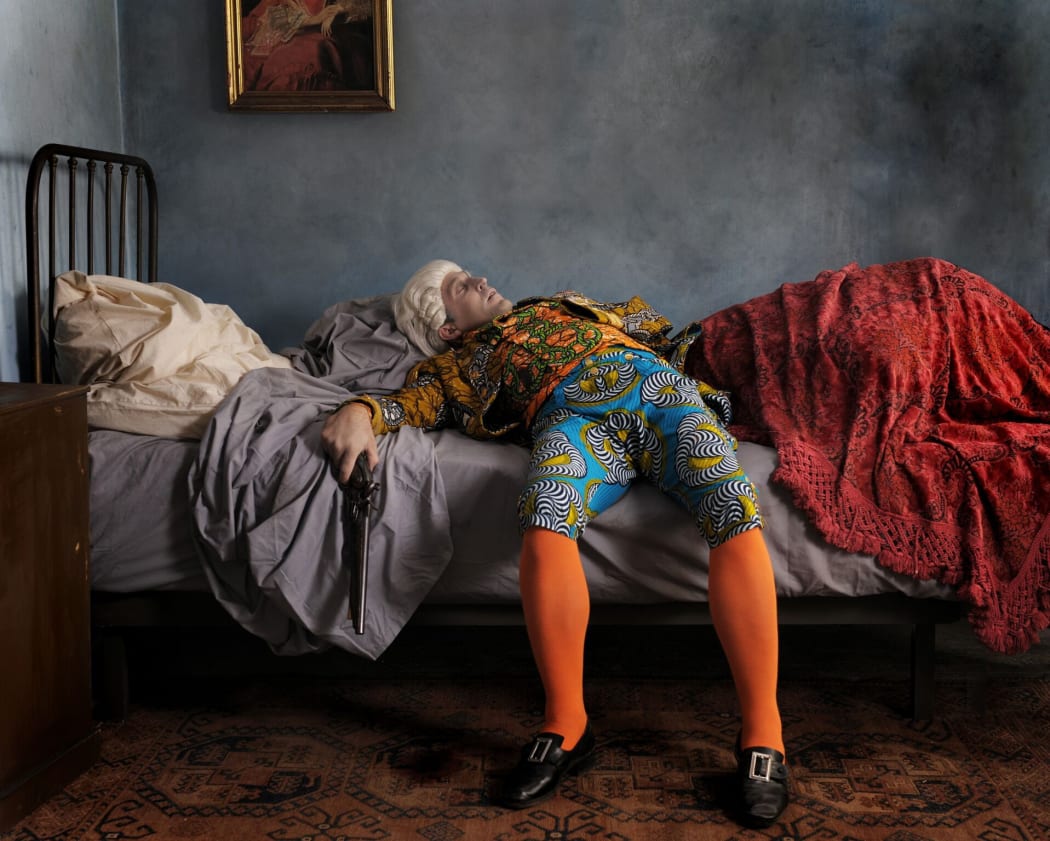 Yinka Shonibare's Fake Death Picture (The Suicide - Manet) (2011), digital chromogenic print
Yinka Shonibare's Fake Death Picture (The Suicide - Manet) (2011), digital chromogenic printThe story of British-Nigerian artist Yinka Shonibare is one that spans two continents, countries and cultures. He was born in London, but moved to Nigeria when he was three years old, where he spent his childhood. The straddling of these two nations, and ultimately two cultural identities, thus has a profound influence on his work, which often engages with themes of identity, globalisation and post-colonisation.
